Winter Solstice 2020
When I last wrote, in August, I mentioned Pandemic Permanence. Well, here we are. In more of a lockdown than before, now in a greater surge, and with continued resistance to simple measures, like masks and staying home, that can save lives. I have been fortunate to be working from home, creating beautiful things in fiber and creating an online store.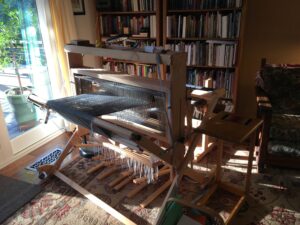
As the wheel of the year turned to Autumn, we lost our beloved RBG. It felt like an important and comforting point of connection to participate in some KALs that raised money for causes she believed in.
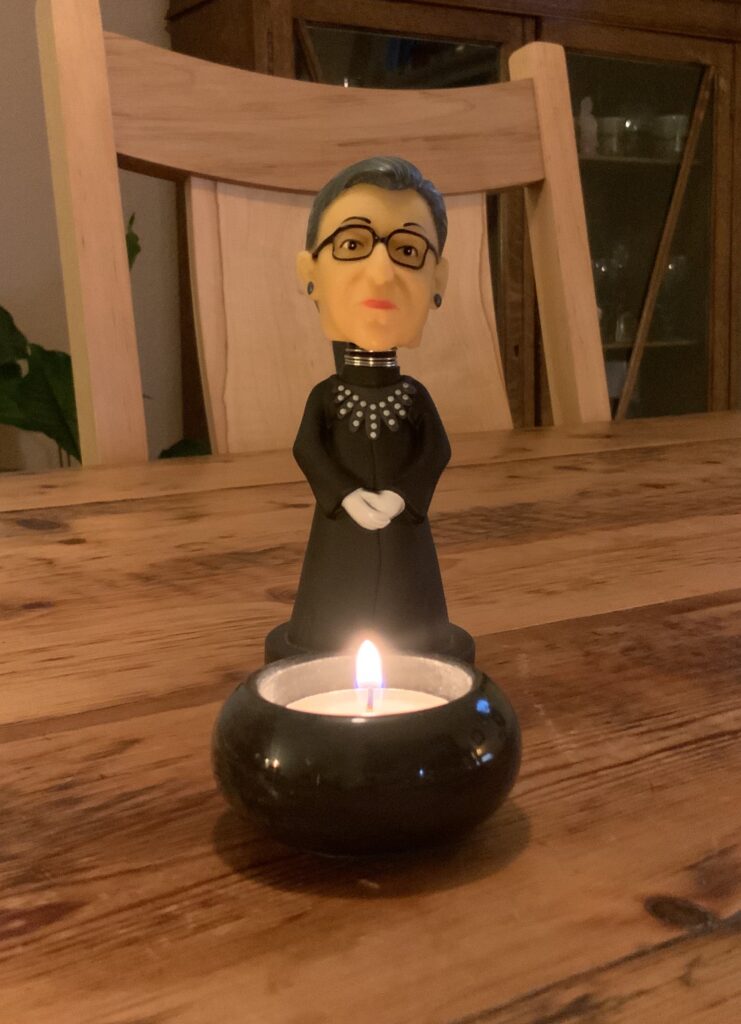
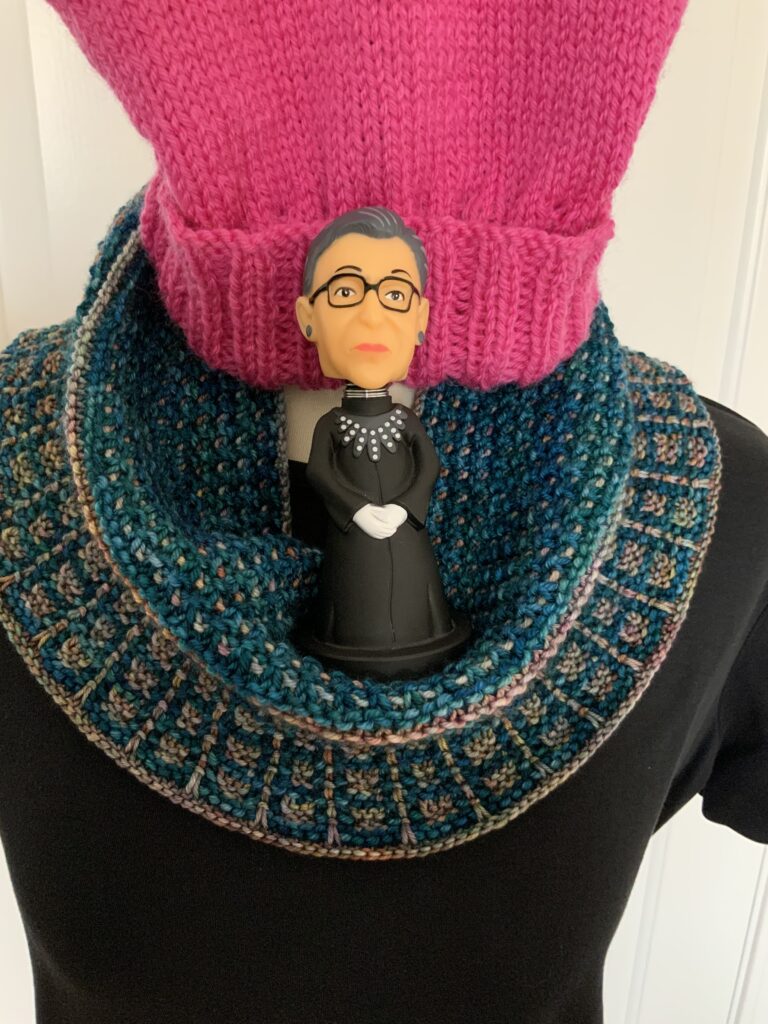
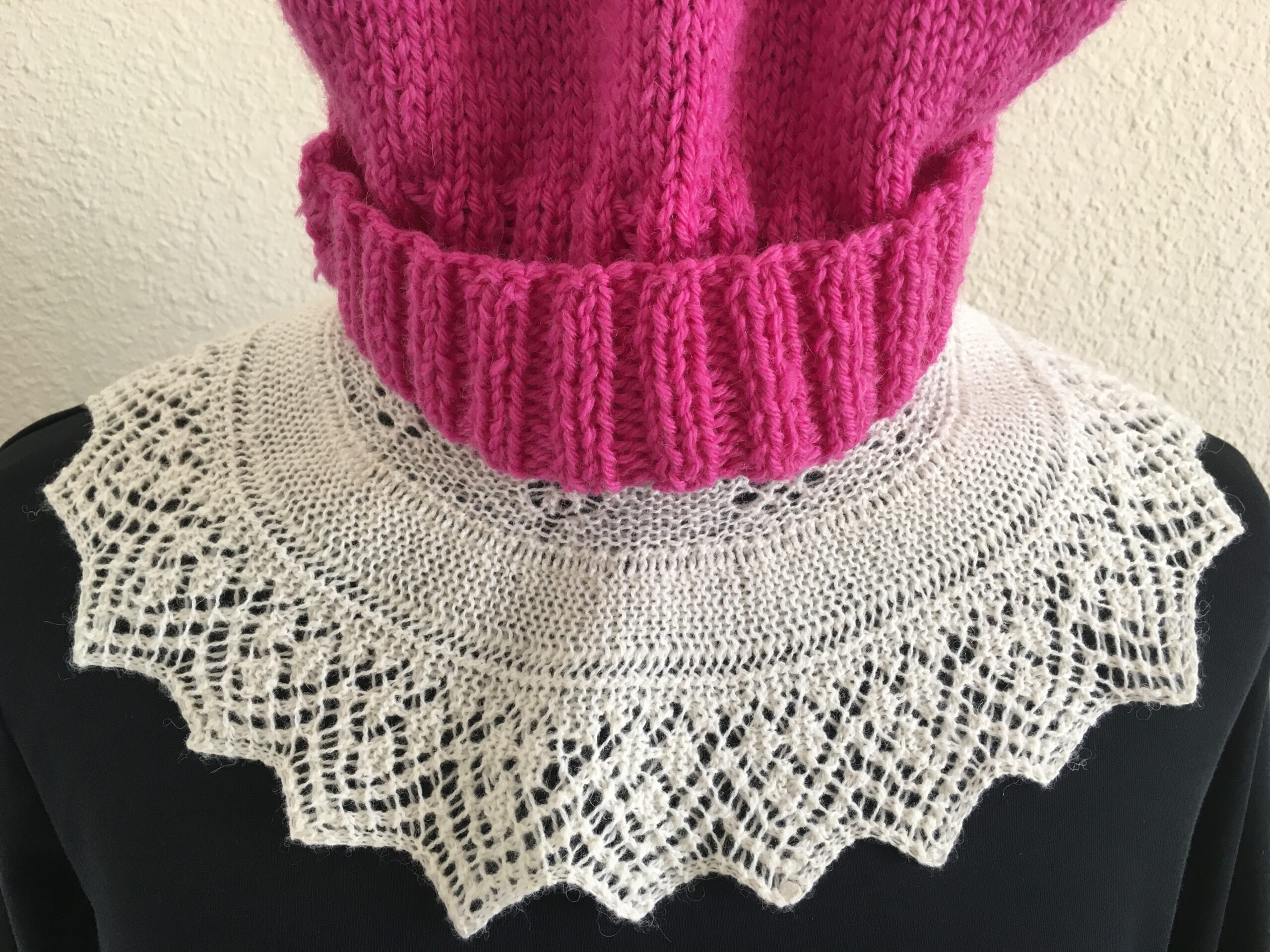

As Autumn began, I completed a color gamp based on Lunatic Fringe’s Tints and Tones. This was the next step in my series of Altar Cloths that I plan to finish in early 2021. A total of five different cloths are planned with two of them already completed. Colors and drafts are in planning for the remaining three.
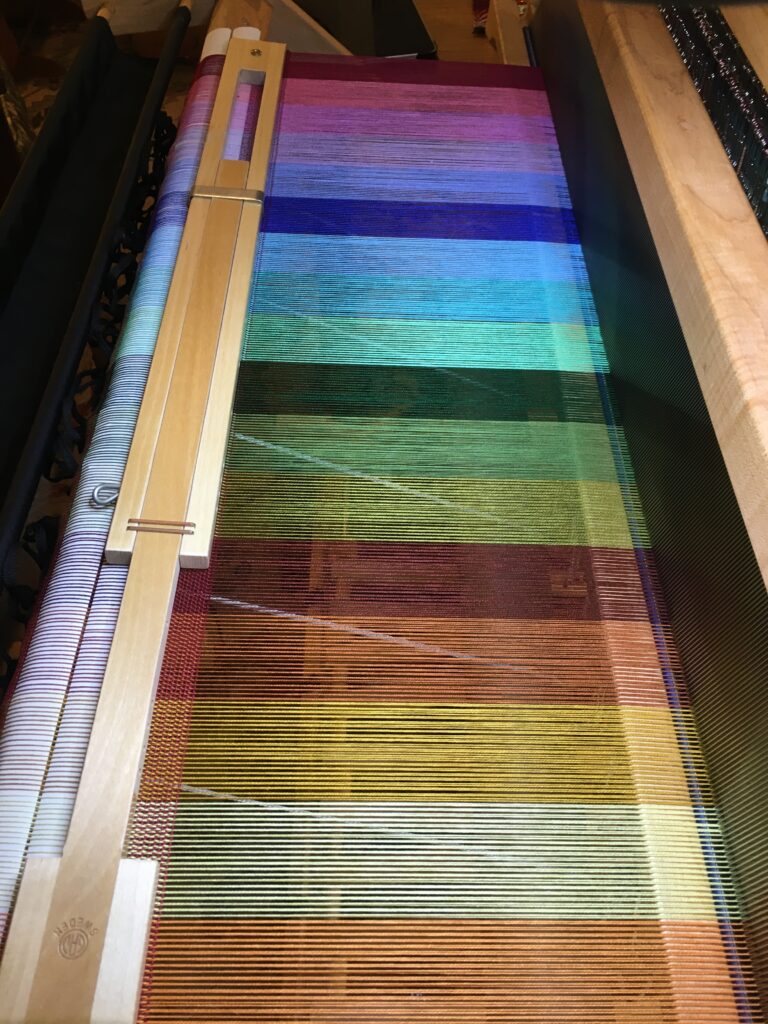
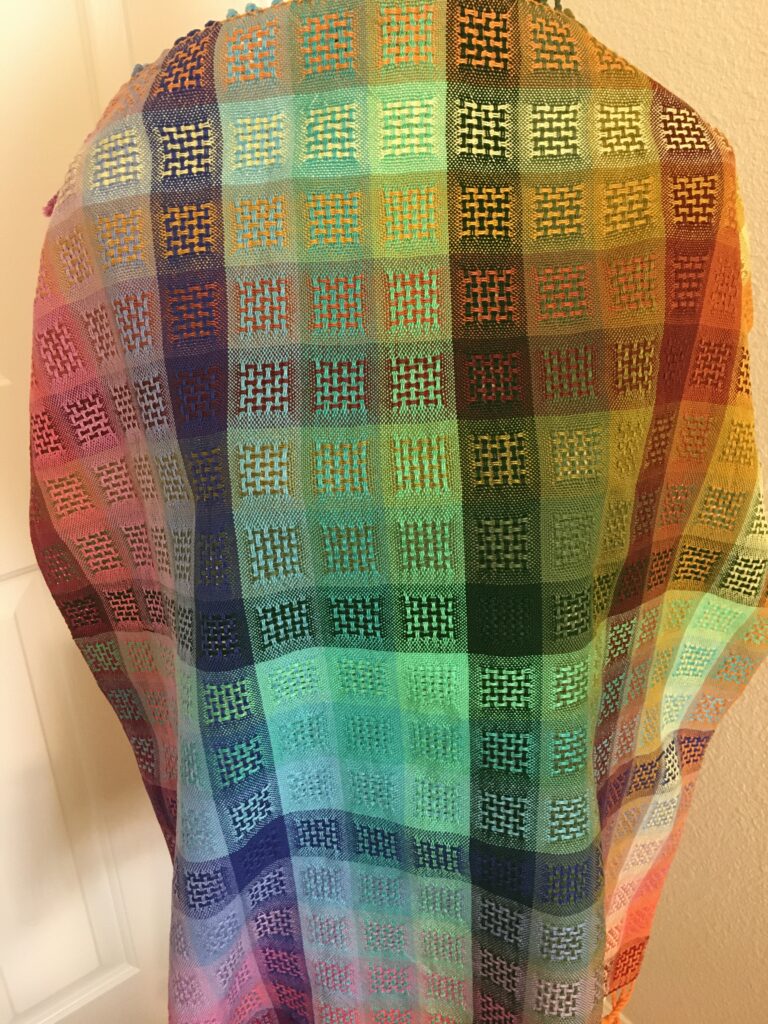
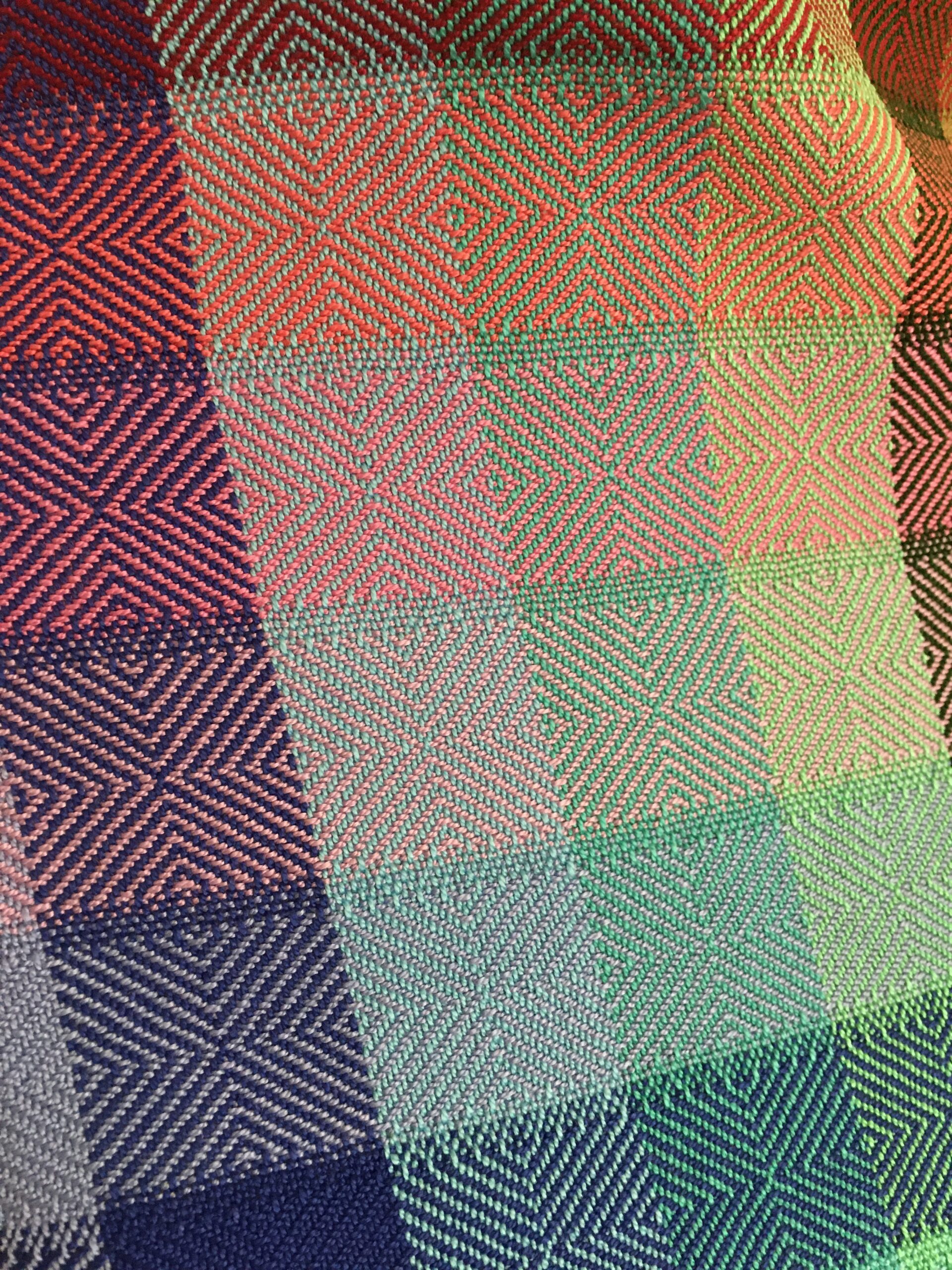
As the pandemic wore on, I continued weaving, knitting, and spinning. Scarves and shawls came off looms and needles.
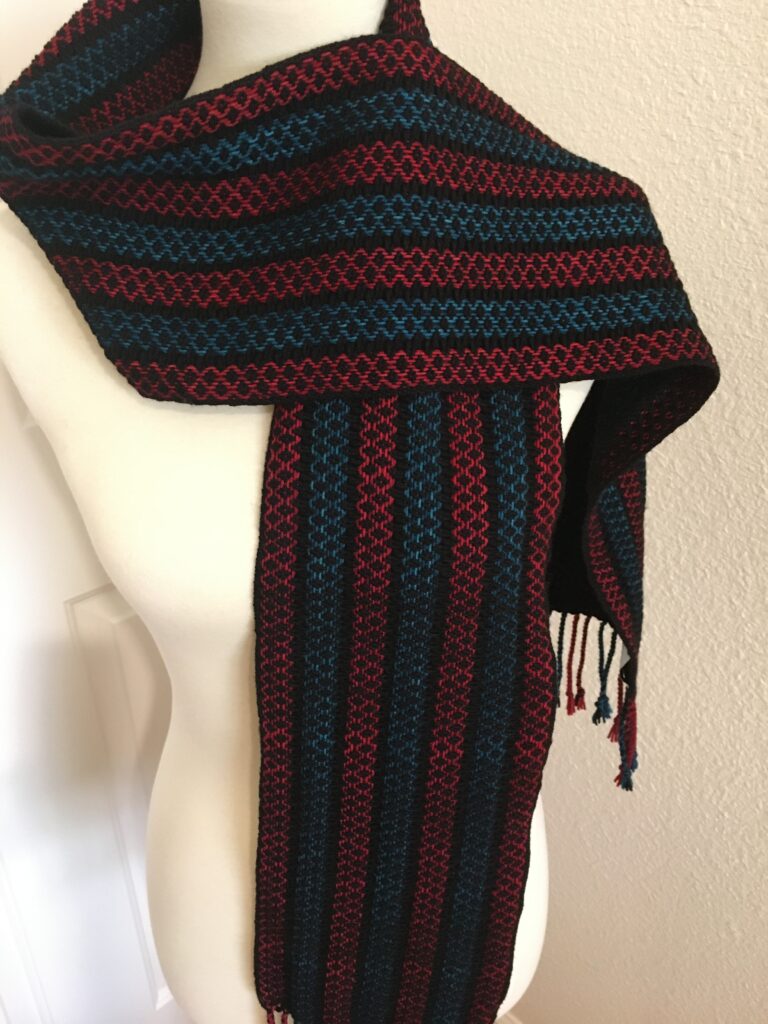
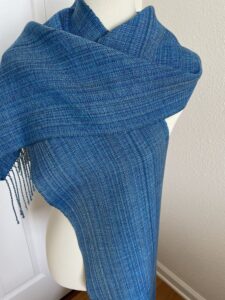
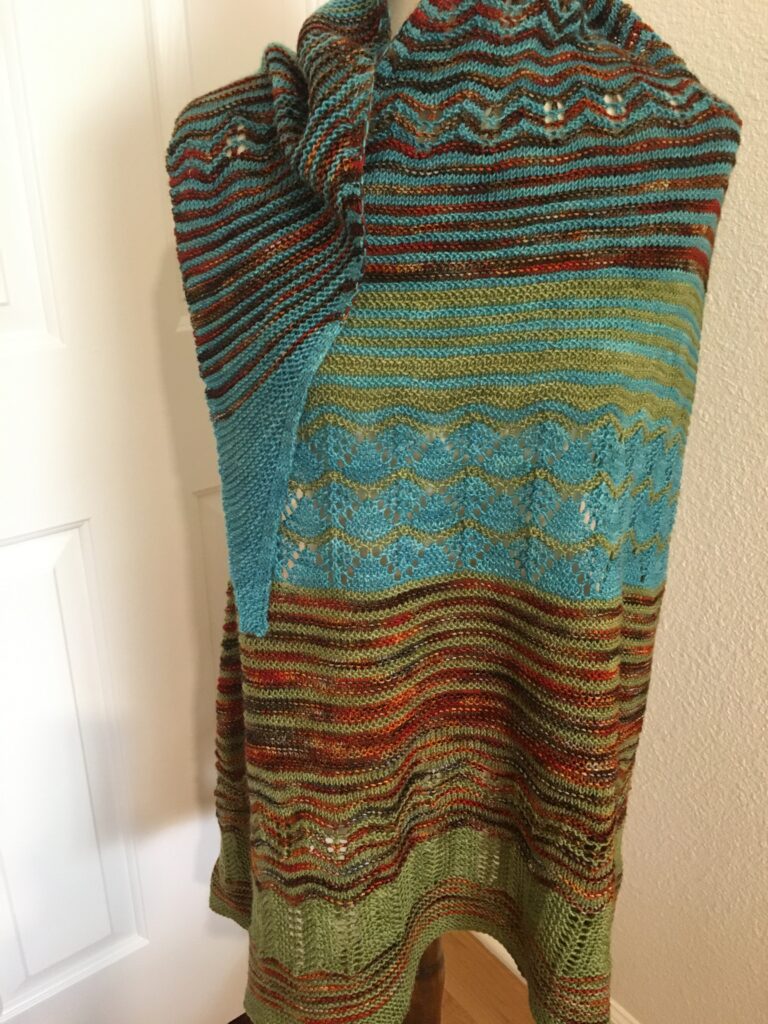
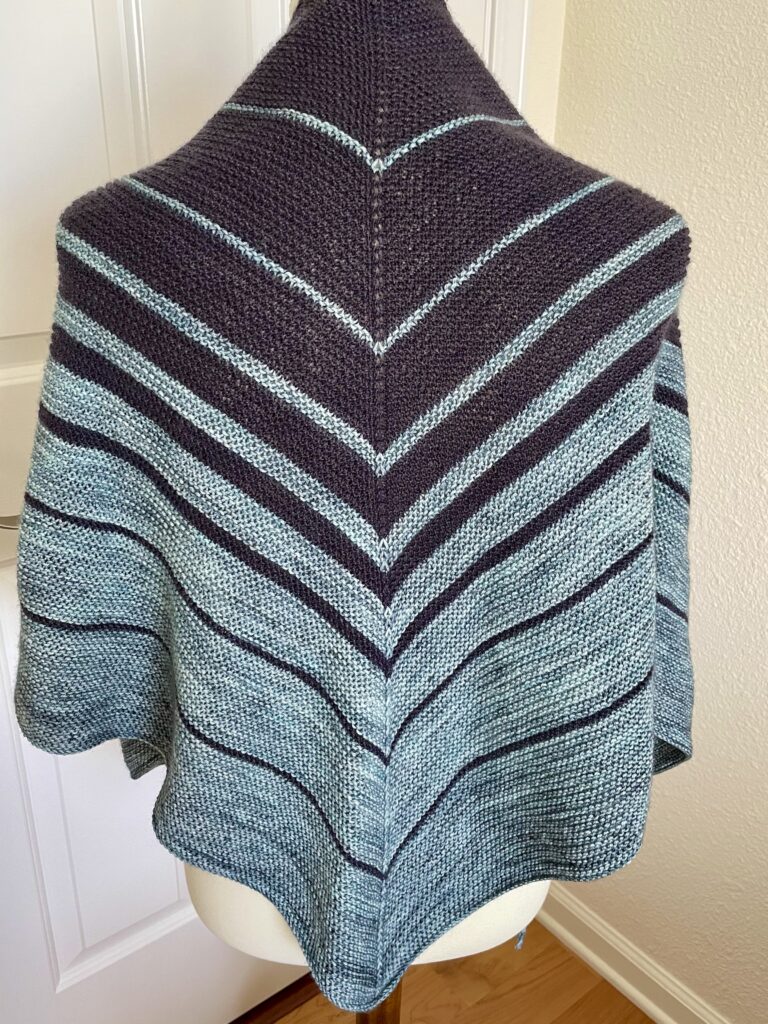
There were, of course, other knitting and weaving projects completed but as this is being written before holiday gift giving, no pictures are being shared.
It finally happened! I launched my online shop in December. It was more complicated and took much longer than anticipated. I found myself facing obstacles I couldn’t solve on my own and began the search for a consultant. A connection was made with a wonderful consultant who put me in touch with the Sierra Small Business Development Center and a grant. With grant and consultant, and lots more hard work (meaning no loom time), the shop opened in early December. Thanks to family, friends, and word of mouth, the opening was a success. Next steps will include creating more inventory and increasing my visibility. Perhaps someday I will be able to include other fiber artists.
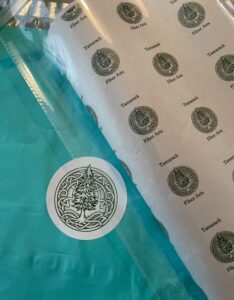
Before turning so much of my attention to development of my online store, I was able to finish the Krokbragd rug on my Gilmore. Gil served me well and the rug graces the hallway. It is bigger than I needed next to my bed and because Gil did not sell yet, it is possible one more rug will be woven in the near future. After that, I really do need to find a good home for this loom as I will be focusing on cloth, rather than rugs and space here in my studio that is home is at a premium. It seems this autumn was not a good time to try and sell looms or fiber tools so I will try again in the beginning of the new year.
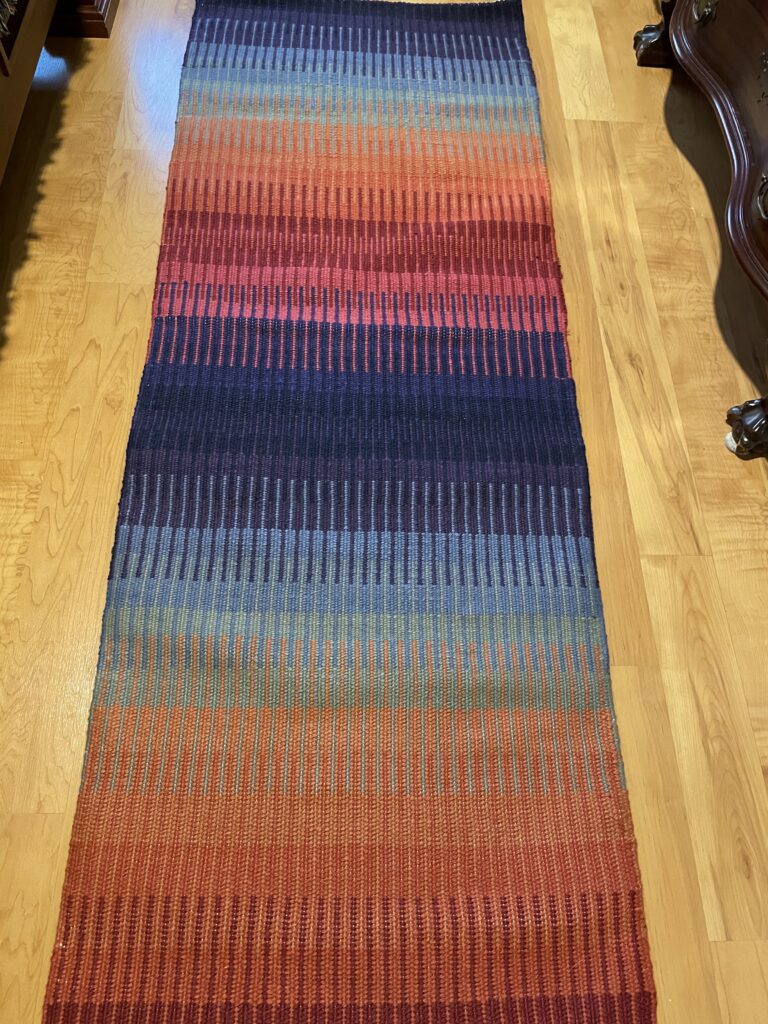
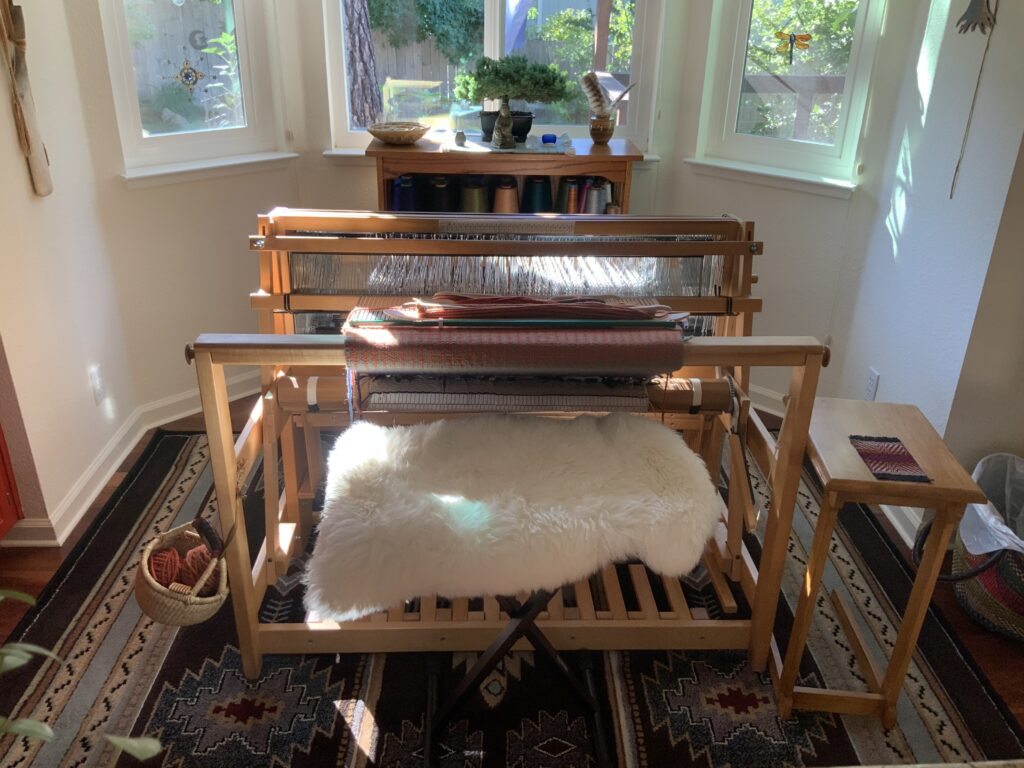
As the year, as difficult as this one has been, draws to a close, there is one other project to mention. After collecting fiber for about a year, I finally began my Blue Note Combo spin in March. Interestingly, I now listen to a good deal of jazz. 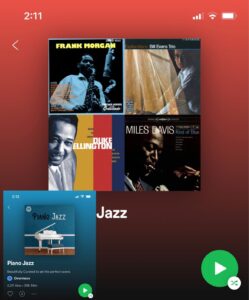
Spinning was completed in August and the sweater came off the needles a few days ago. I spun 1360 yards of a heavy worsted weight yarn and used 1076 yards in this sweater.
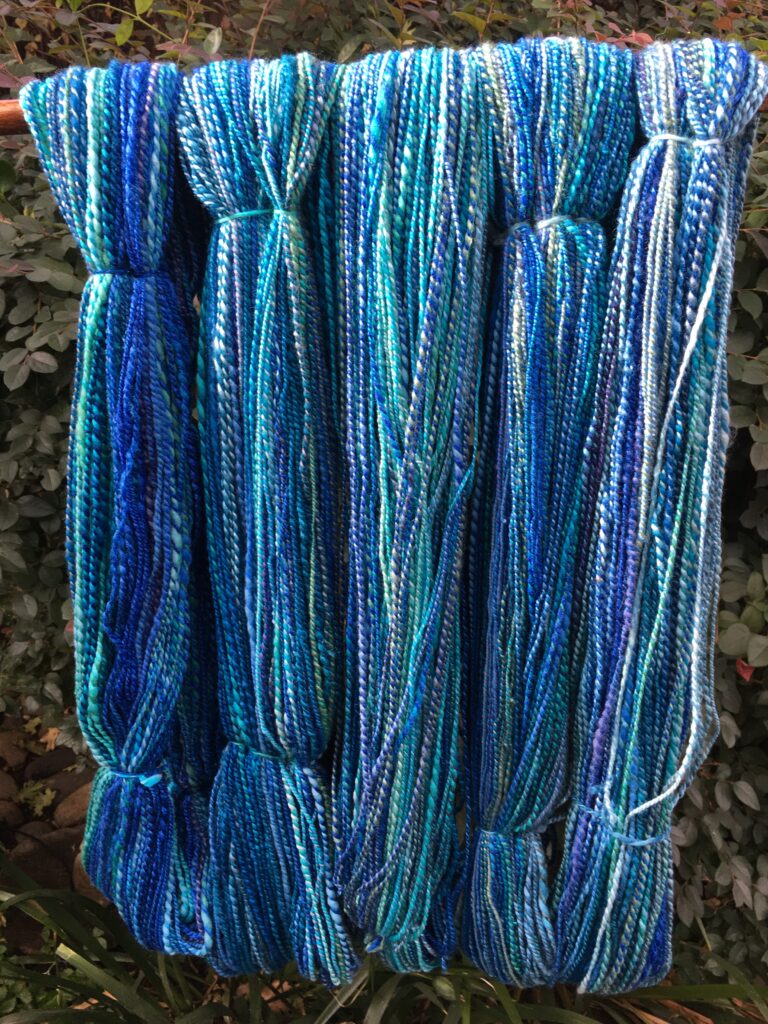
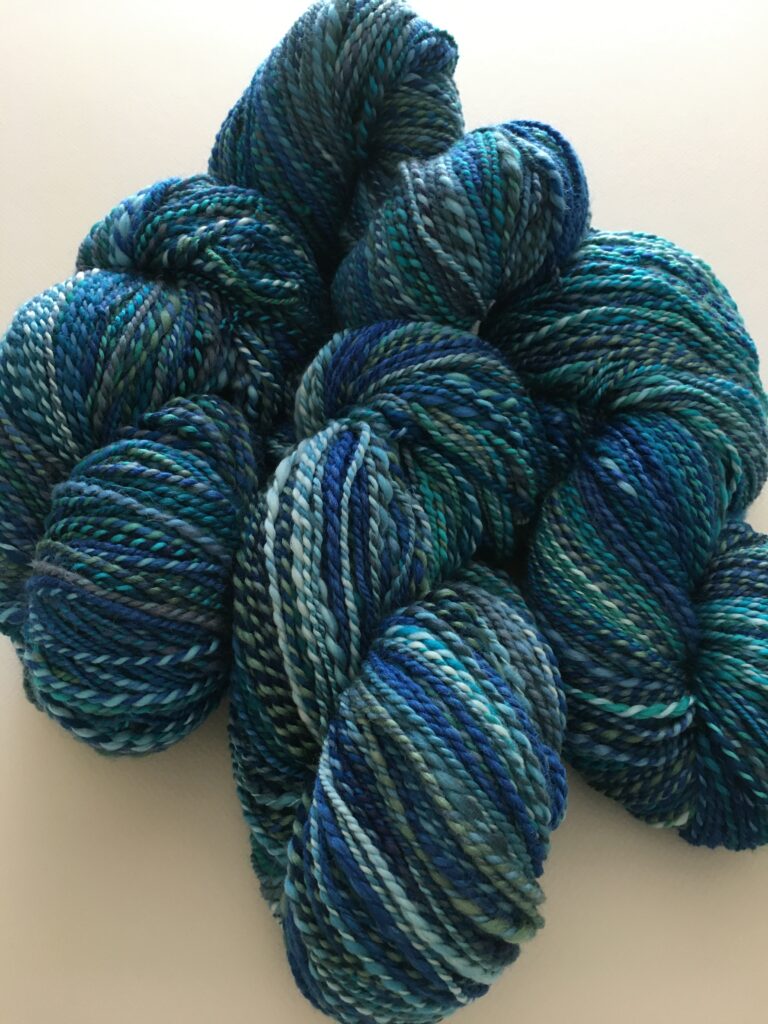
As can happen with wool and silk blends, wet blocking produced a rather larger than intended sweater. Thanks to recent conversation in my weaving group, I now have a solution for such a problem. This is a problem that plagued two earlier sweaters so they will be undergoing the same transformation. I placed a partially dry, damp sweater in a large lingerie bag, put the bag in the dryer on the delicate setting with the lowest temperature, and timed the drying for two to three minutes at a time, checking on the sweater after each brief period in the dryer. I’m happy to report that after about 12 minutes, my Blue Note sweater is much more to gauge specifications.
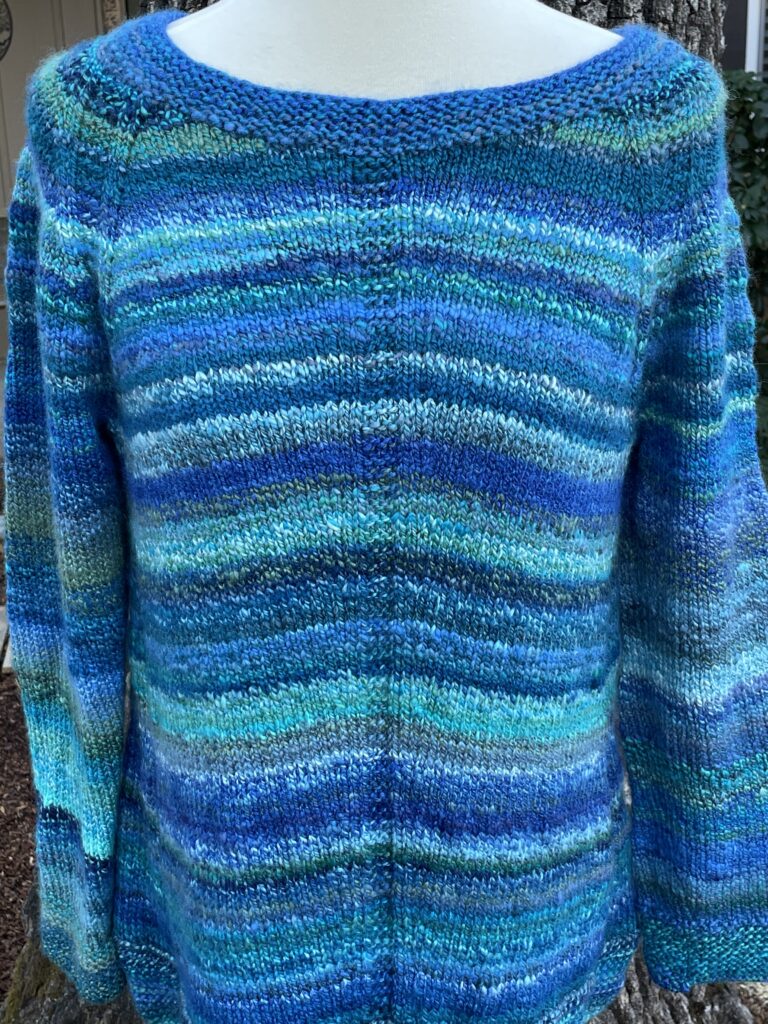
I am heartened as the Winter Solstice approaches. Certainly, we are not out of the woods yet. It is a very dark, mysterious forest with no clear exit and we do not know if we will find our way out. But light is returning. If we ask the right questions, perhaps we will find our way.
It will be very difficult to have my first ever holiday season without either of my two beloved kids. But I know I am among the very fortunate individuals who have not lost family members during this awful pandemic and during the horrid violence that has plagued our streets. I know how fortunate I am to enjoy the love and company of my best friend, husband, and partner. I didn’t think we could be even closer, but we are. And it seems important to just notice the small, ordinary, and wonderful moments.
The other day, as Michael and I headed to his dojo for our separate workouts (me on the elliptical with Bike the World videos on the iPad and loud, live Grateful Dead shows in my ears and Michael in graceful karate), I felt the warmth of our home, the sun in the room, and gave thanks. I hope you enjoy the poem below the photos.
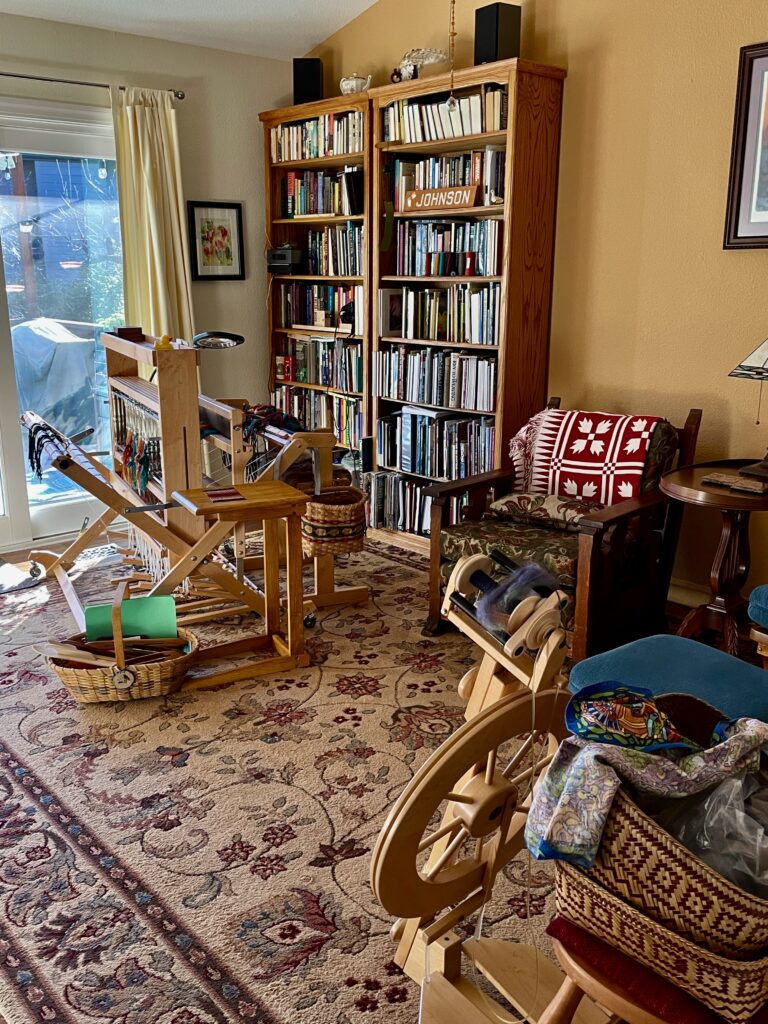
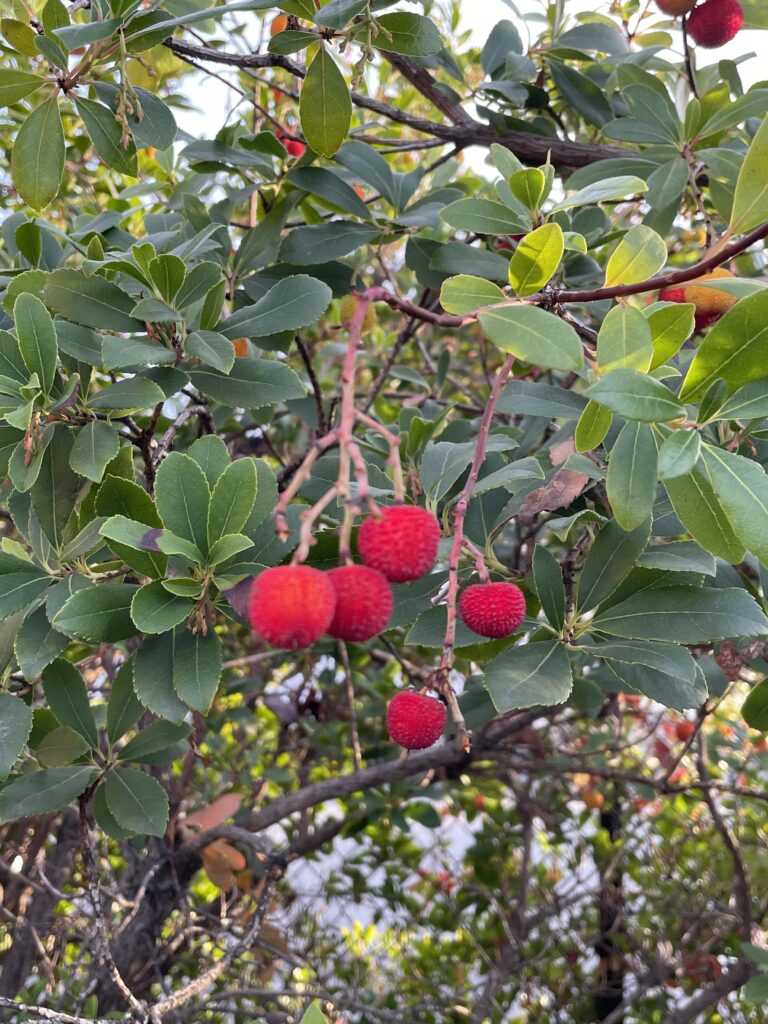
The Shortest Day
So the shortest day came, and the year died,
And everywhere down the centuries of the snow-white world
Came people singing, dancing,
To drive the dark away.
They lighted candles in the winter trees;
They hung their homes with evergreen;
They burned beseeching fires all night long
To keep the year alive,
And when the new year’s sunshine blazed awake
They shouted, reveling.
Through all the frosty ages you can hear them
Echoing behind us—Listen!!
All the long echoes sing the same delight,
This shortest day,
As promise wakens in the sleeping land:
They carol, feast, give thanks,
And dearly love their friends,
And hope for peace.
And so do we, here, now,
This year and every year.
Welcome Yule!
Susan Cooper
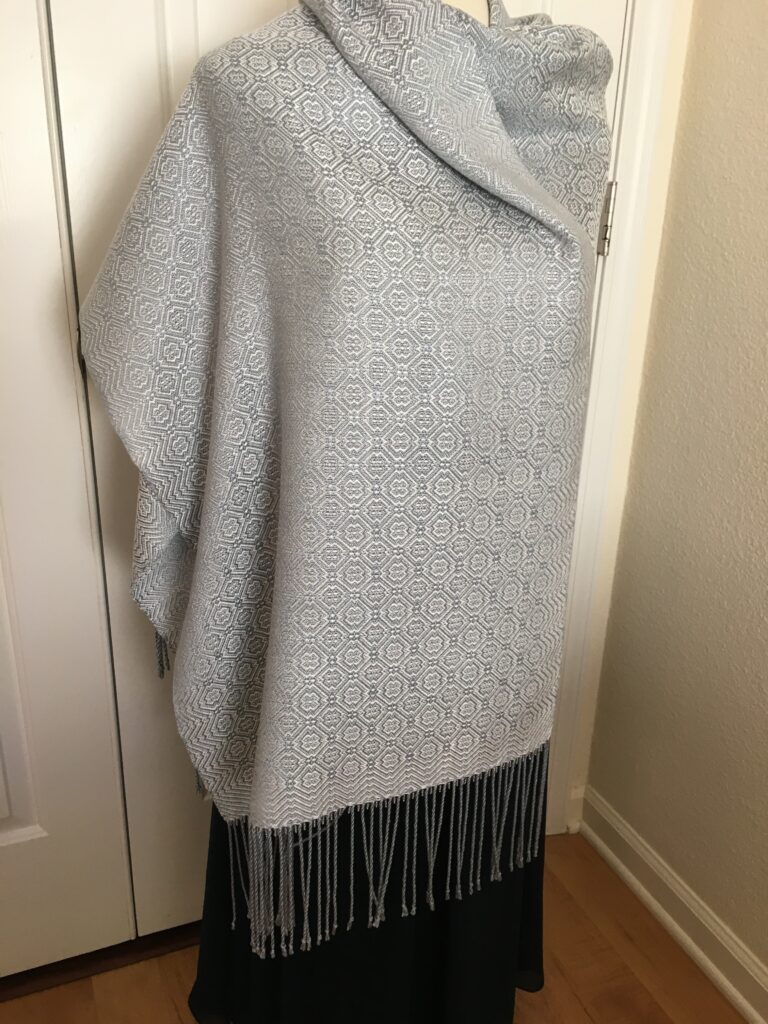
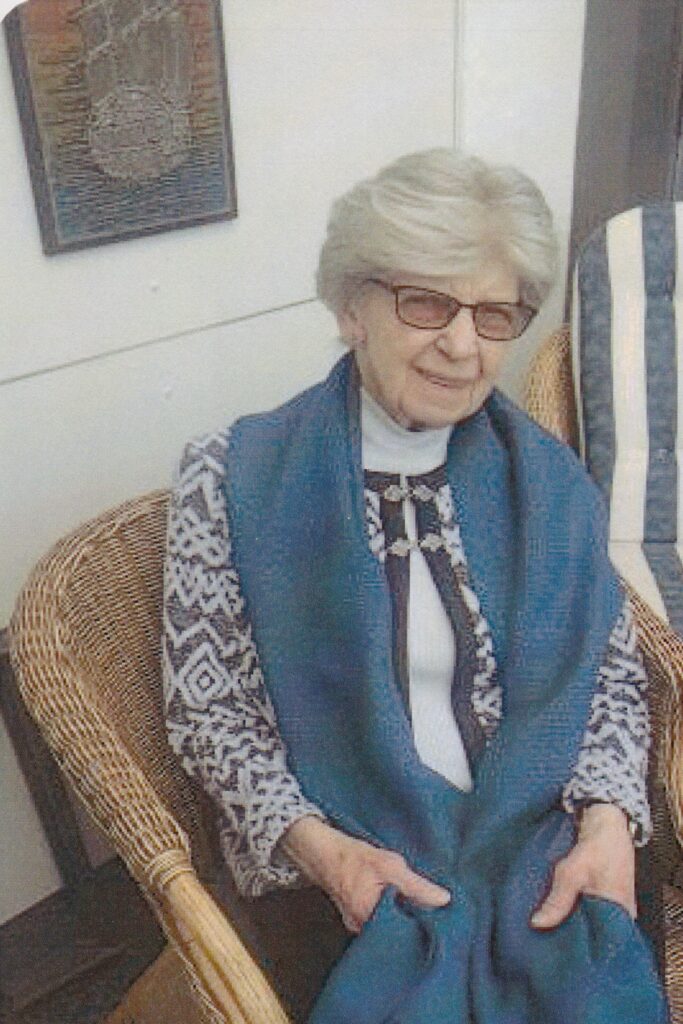
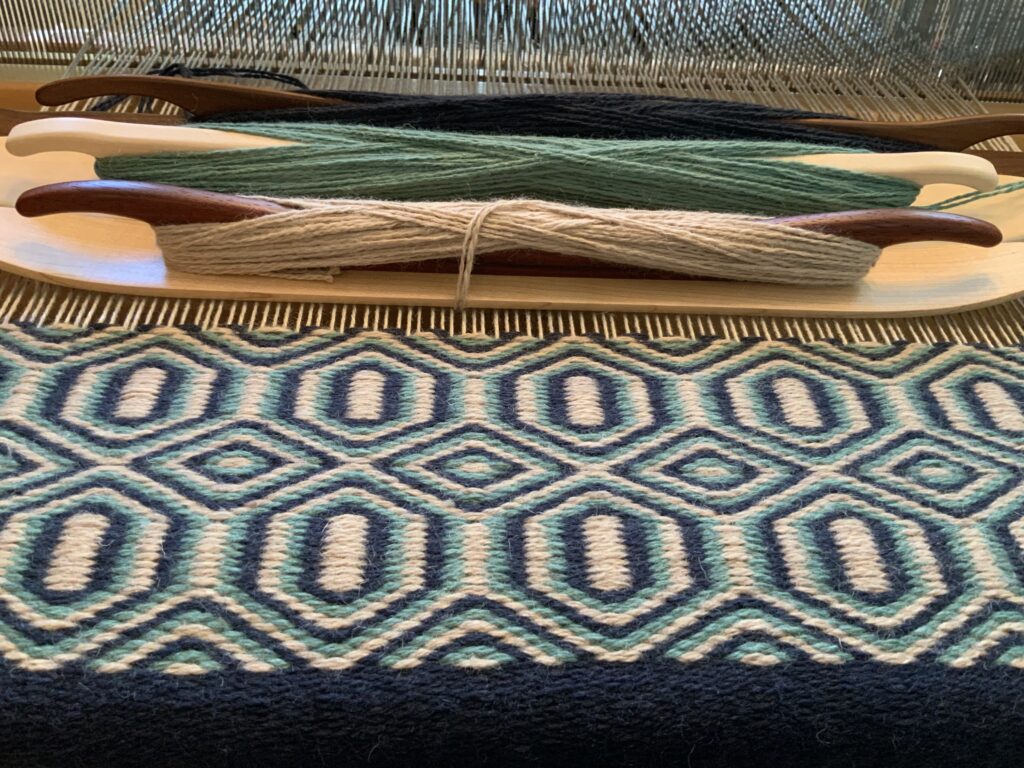
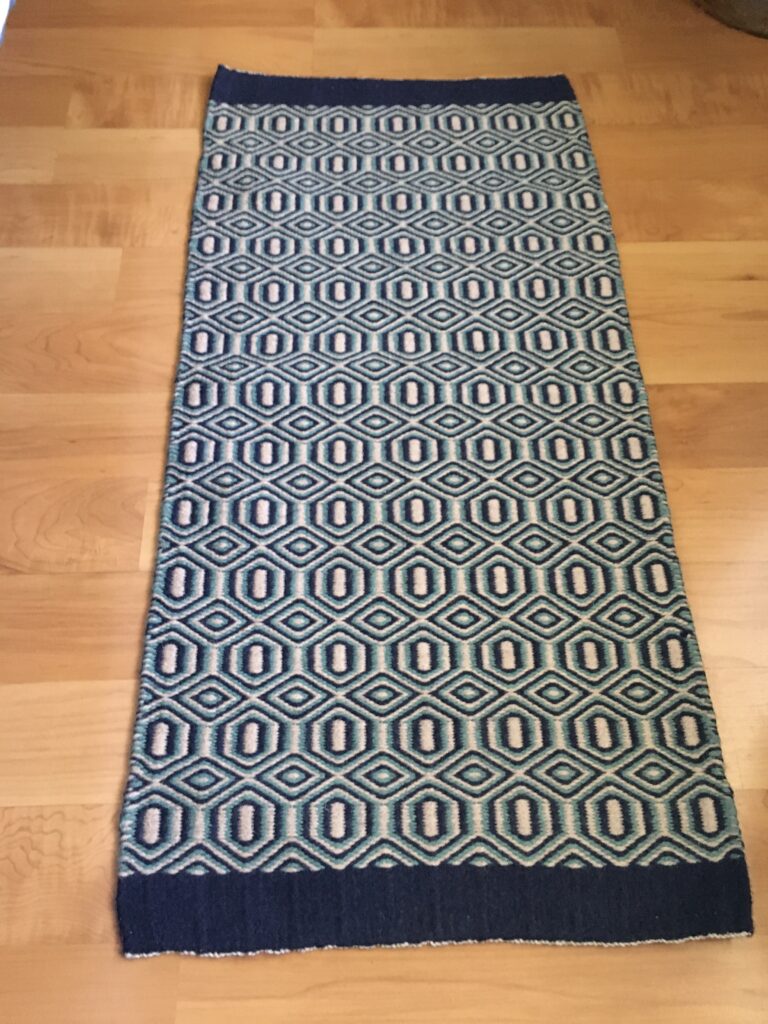
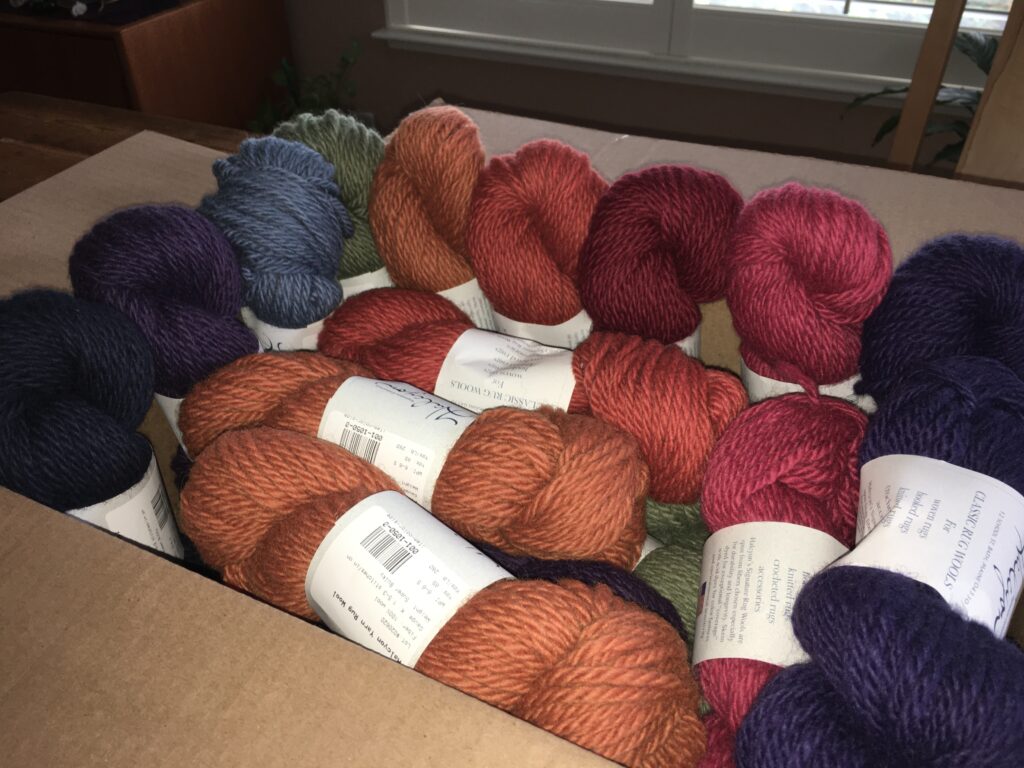

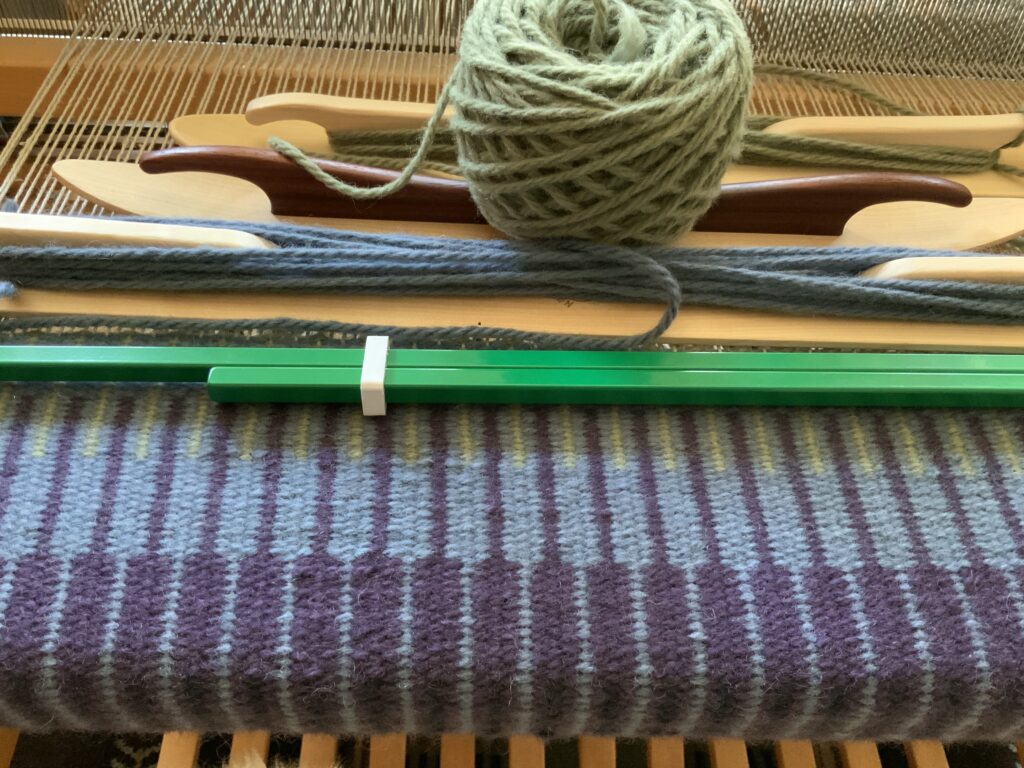

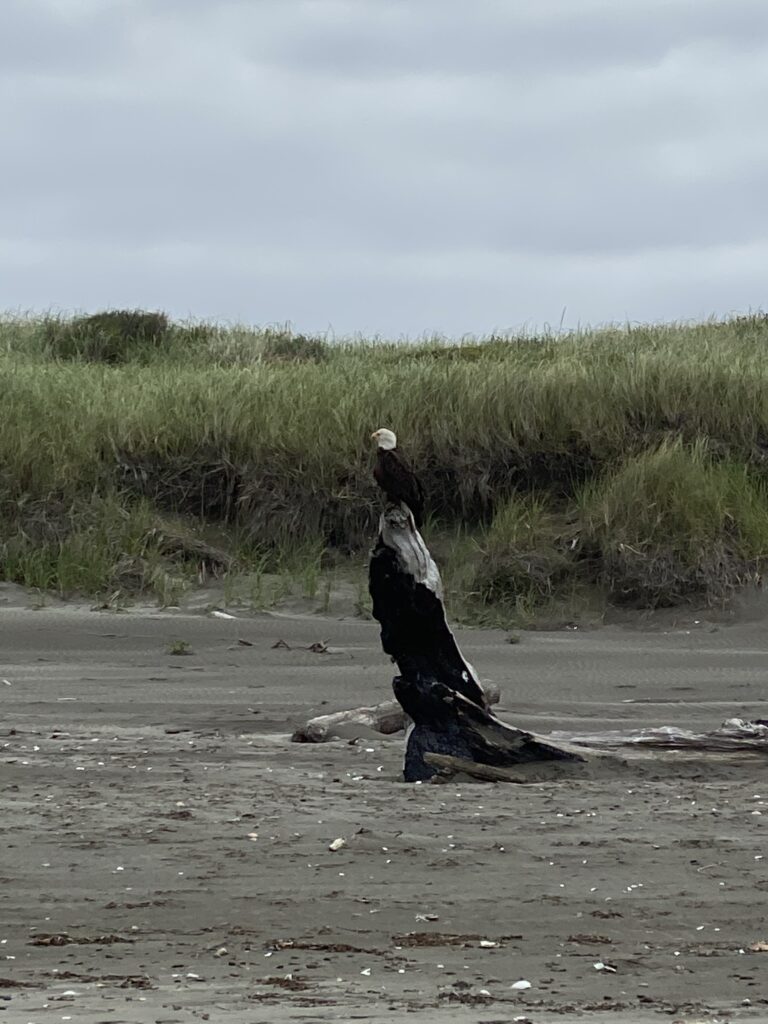
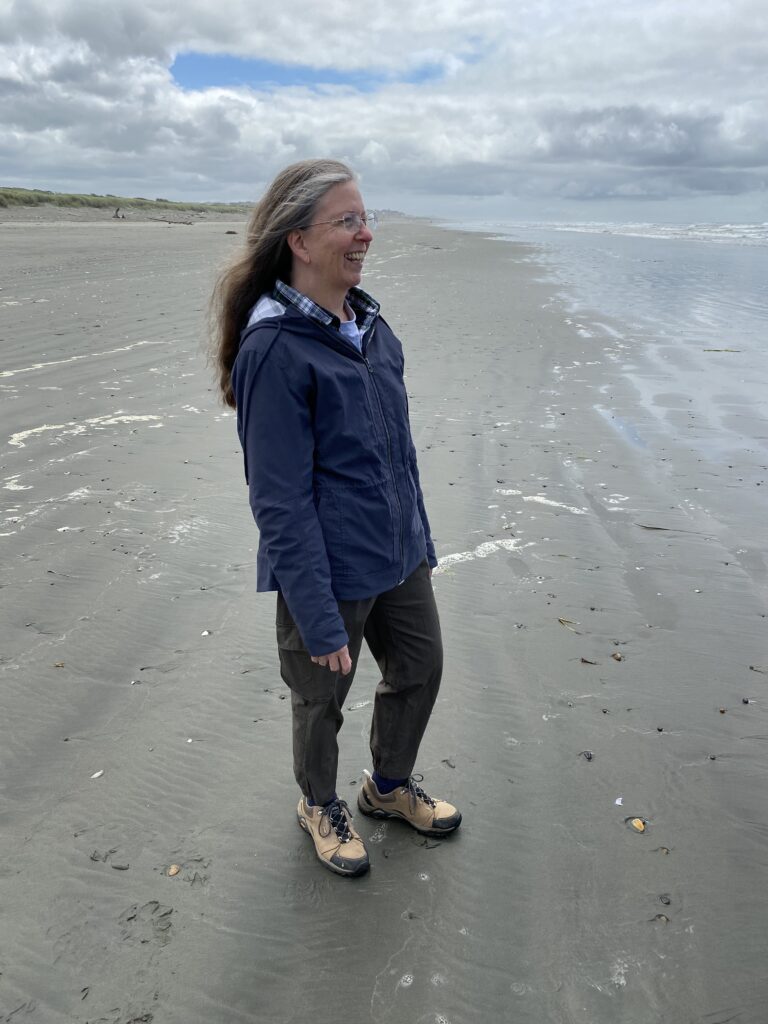
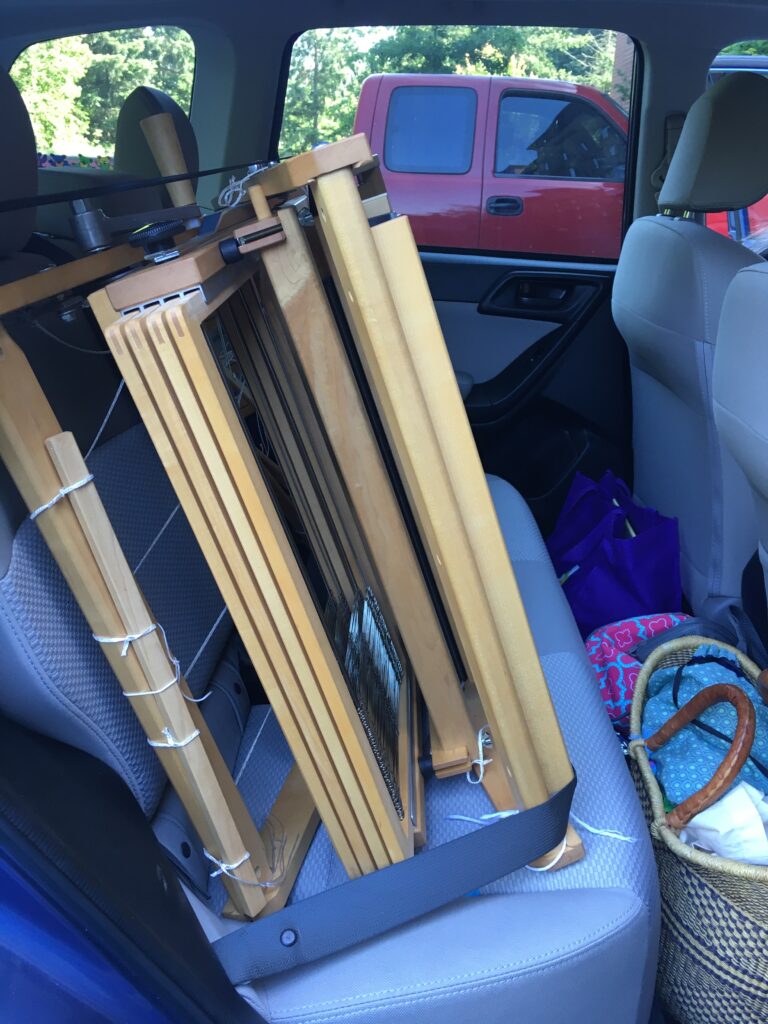
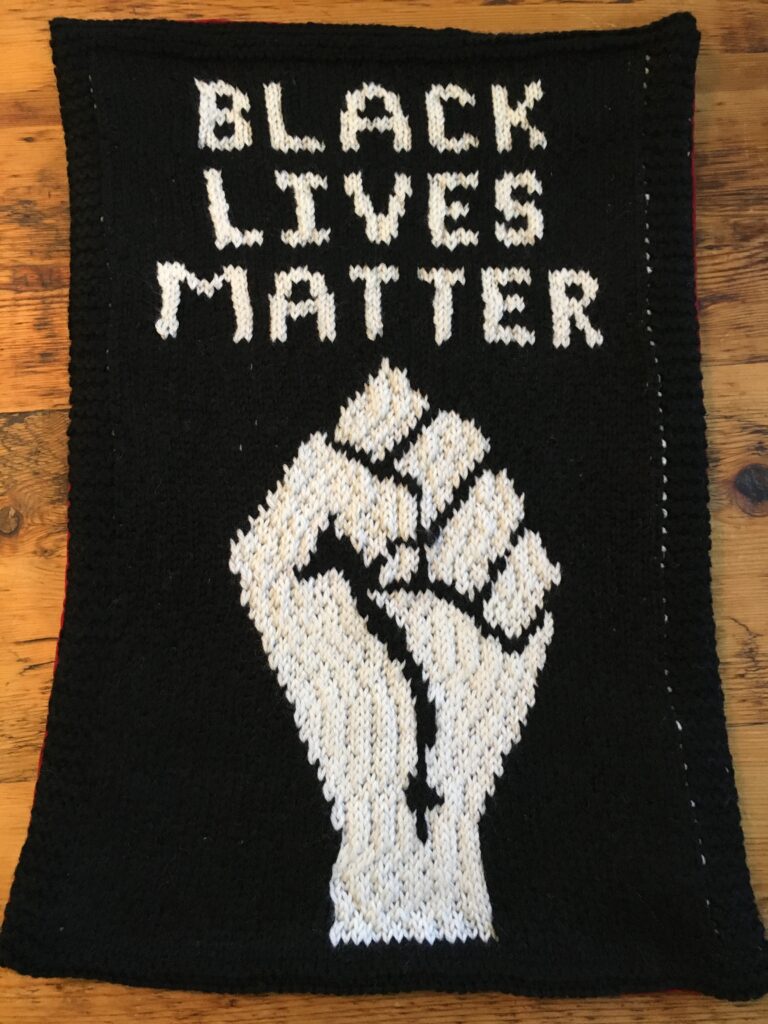
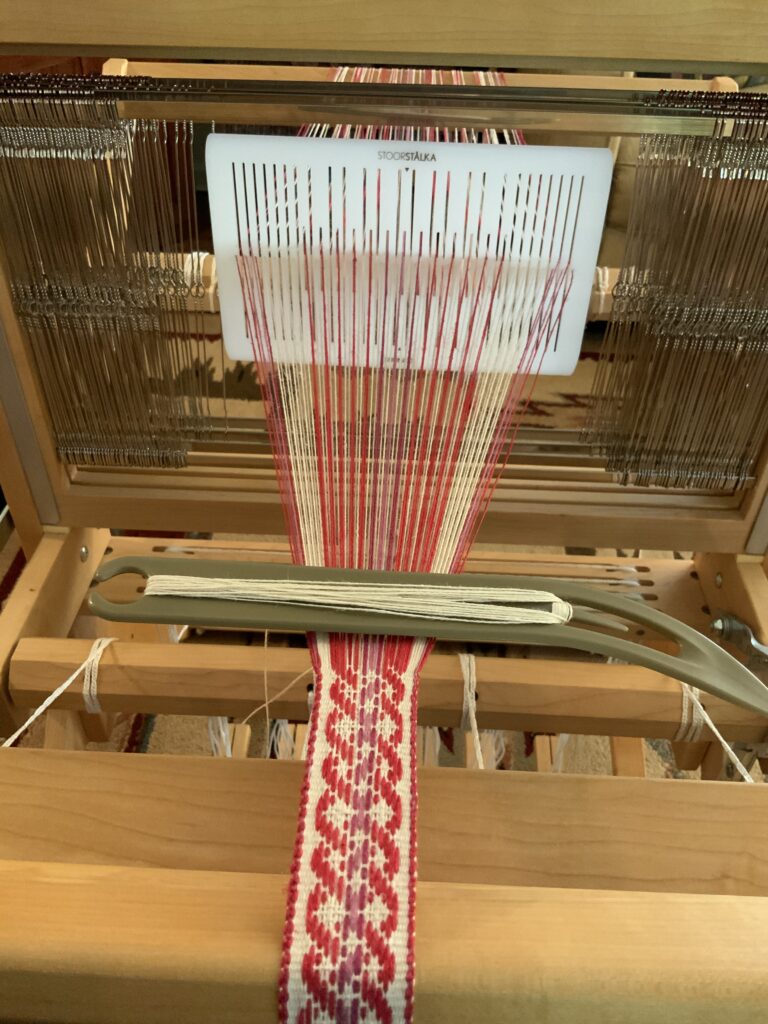
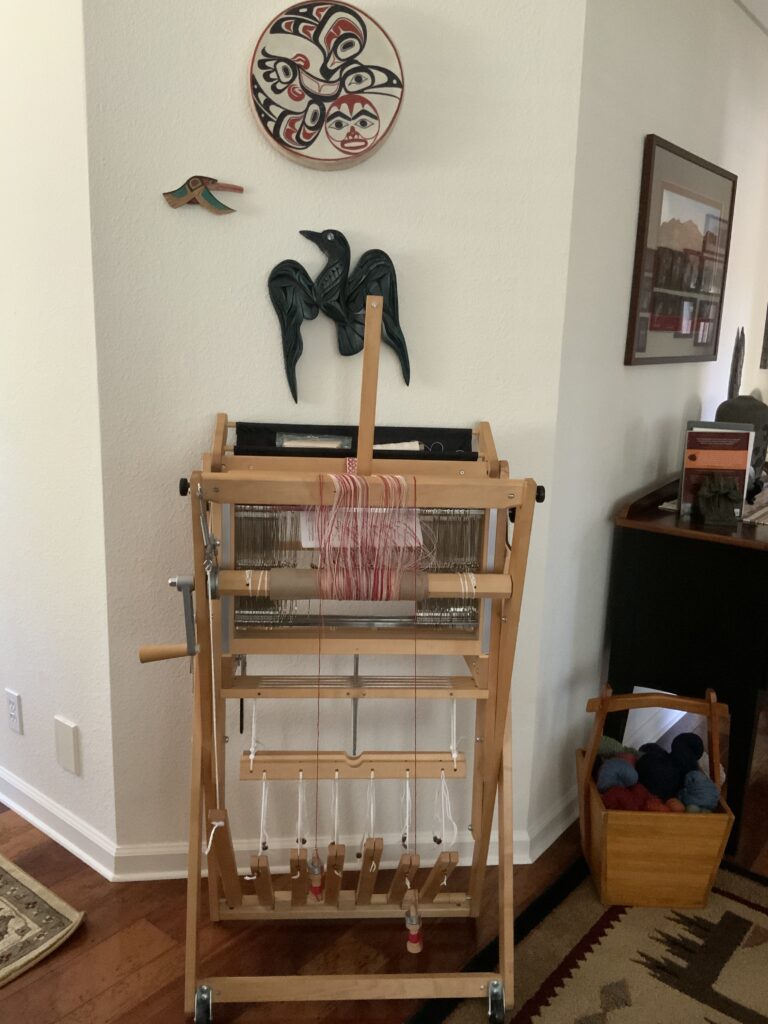
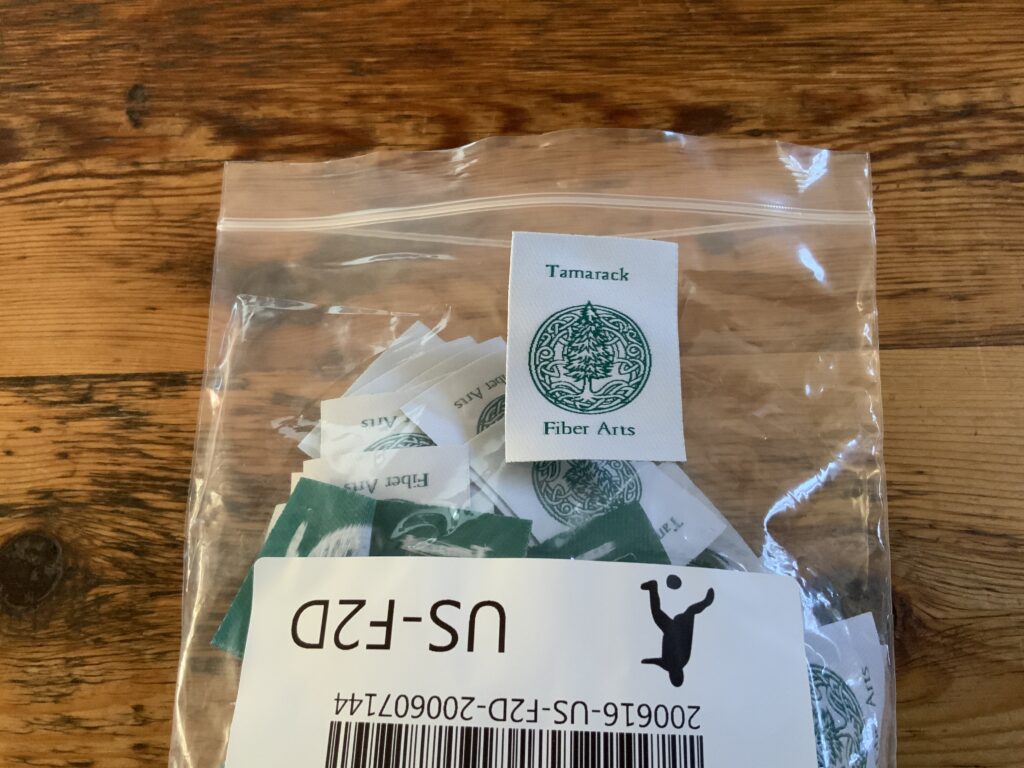
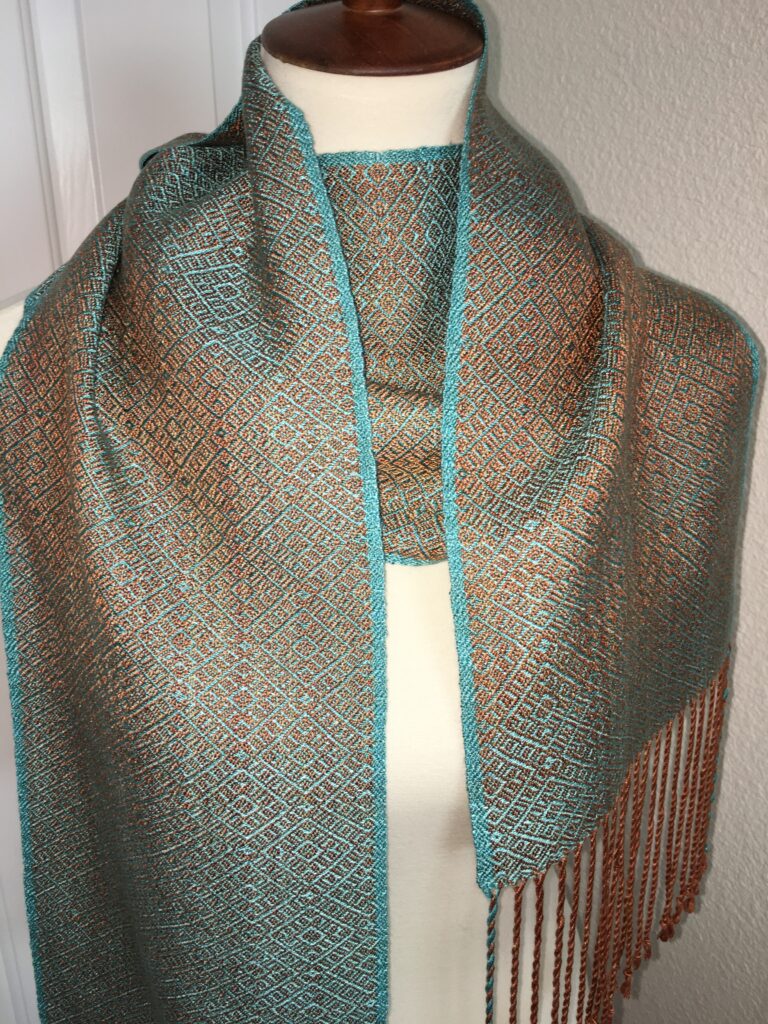
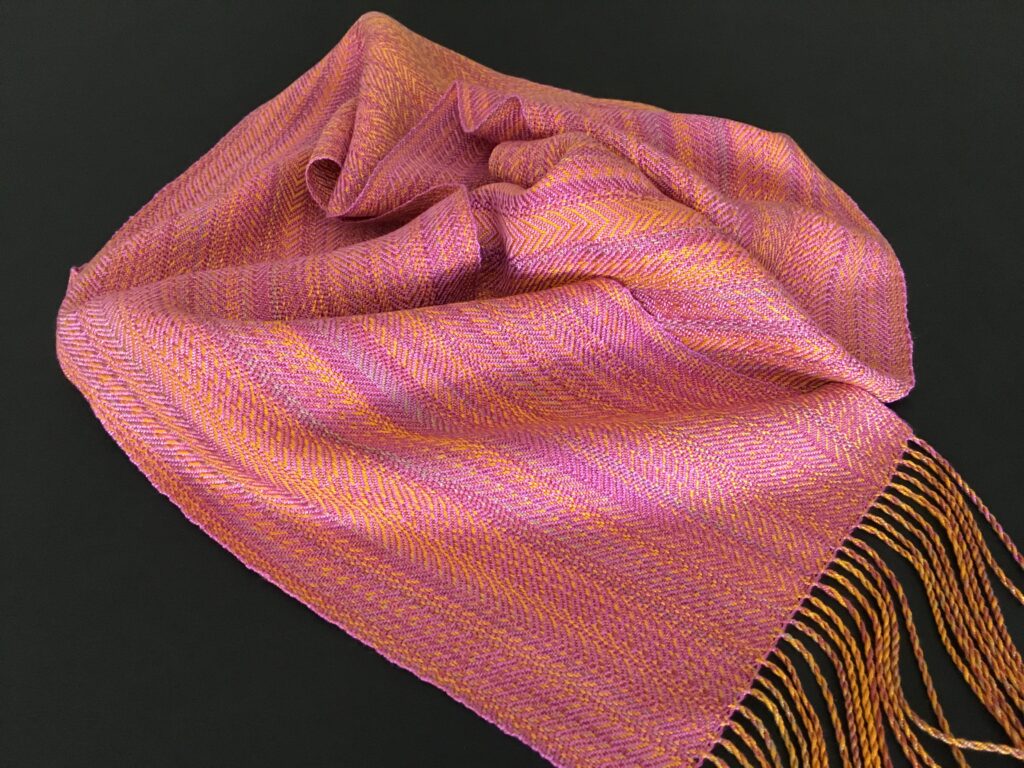
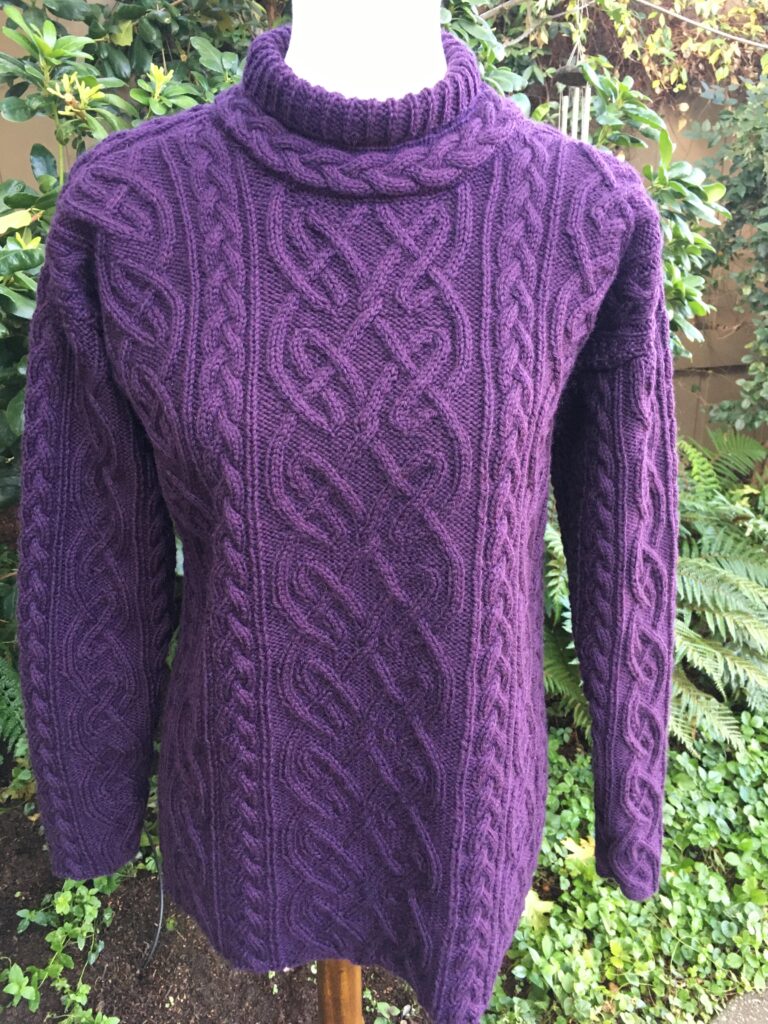
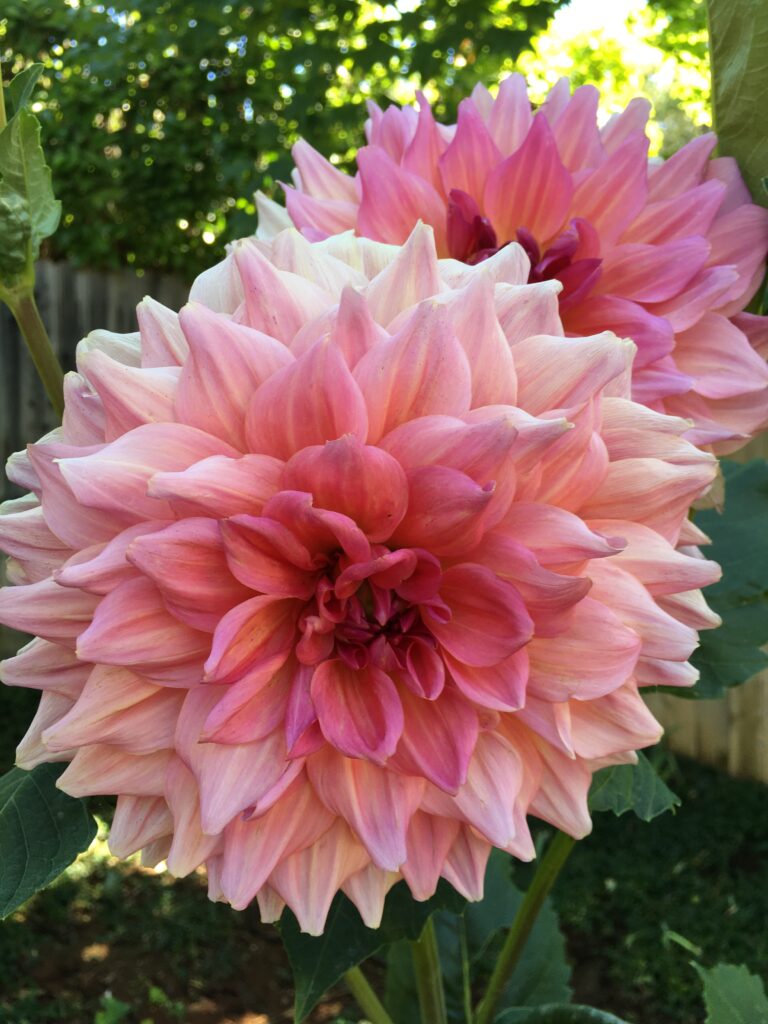
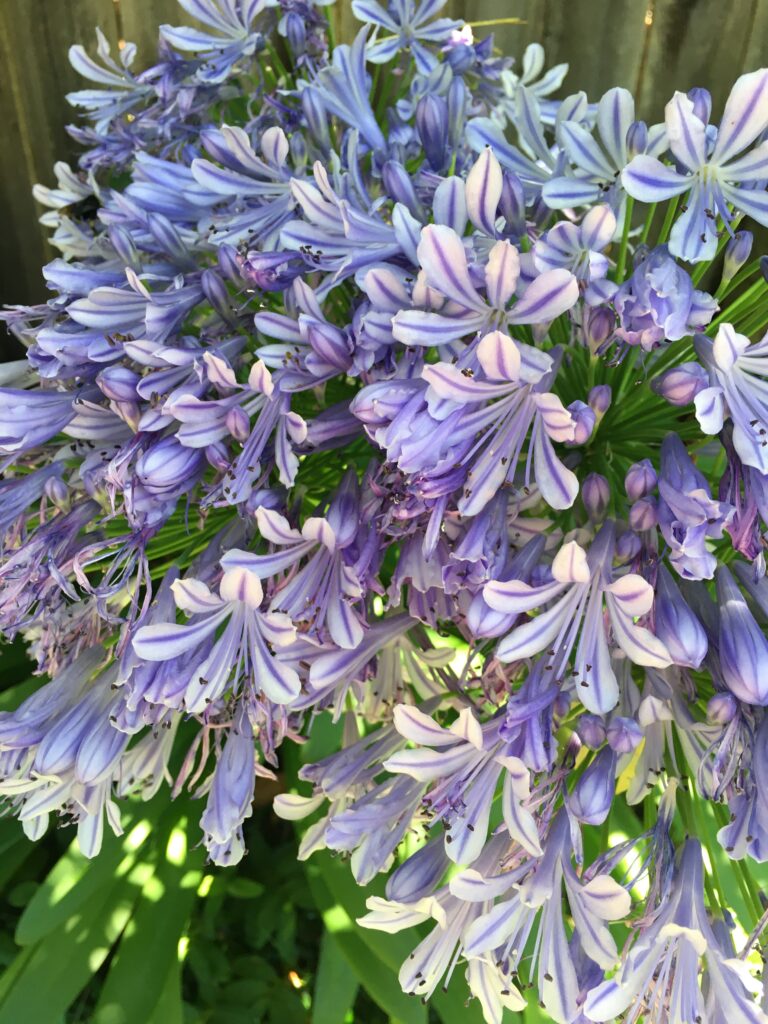

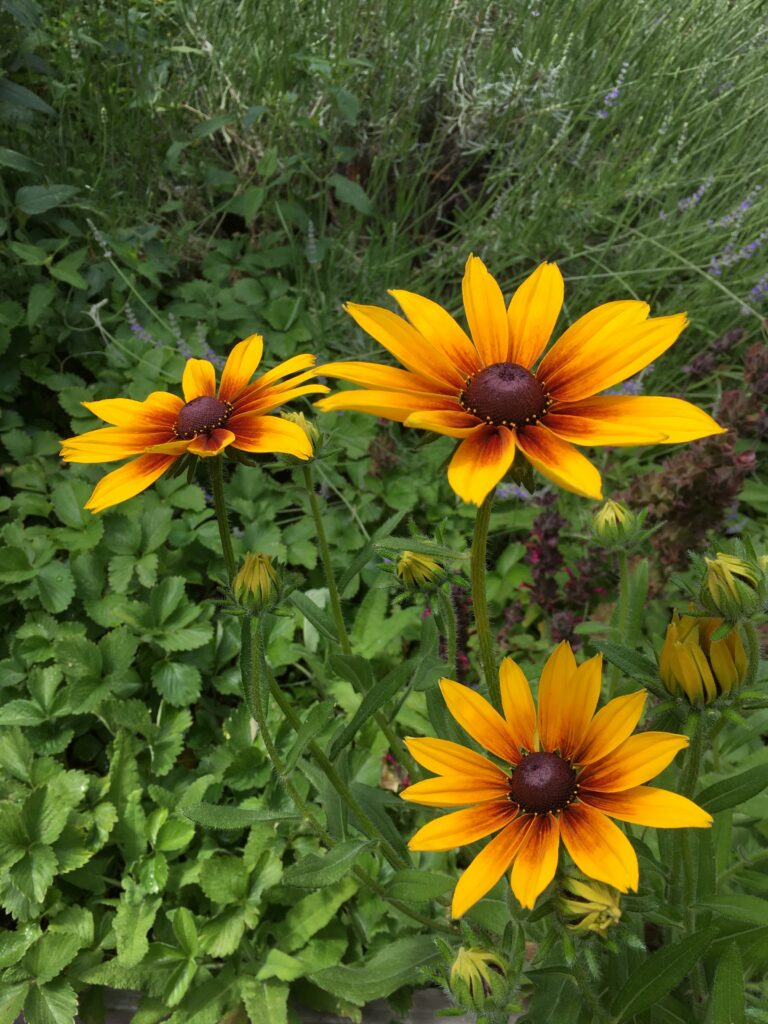
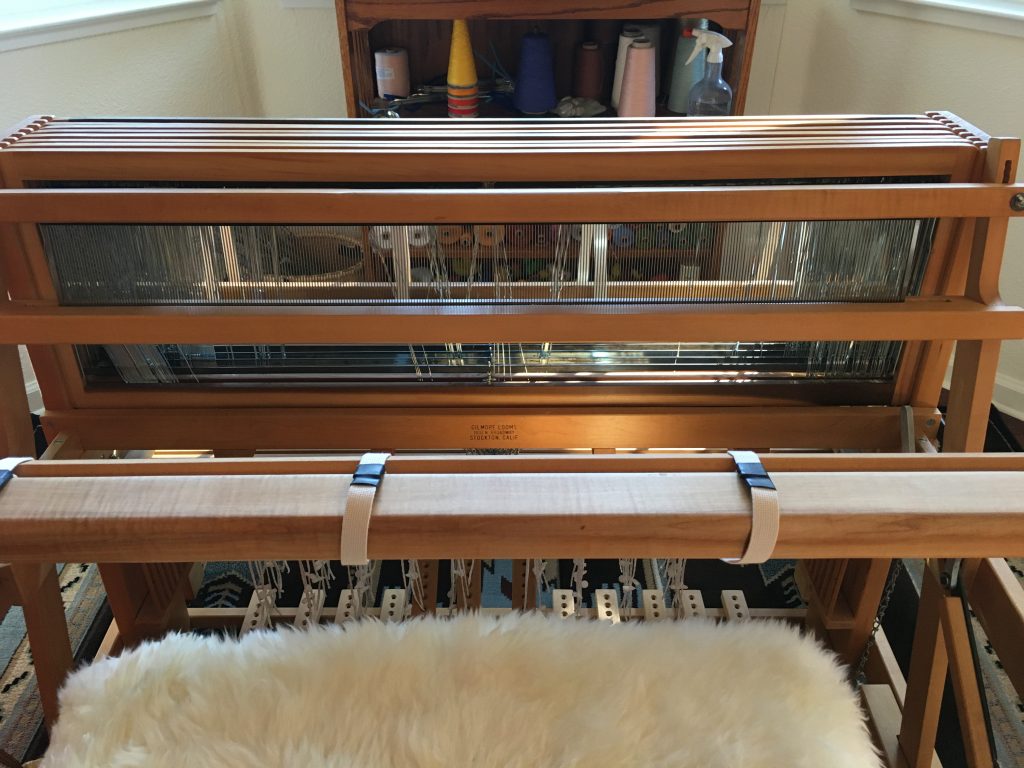
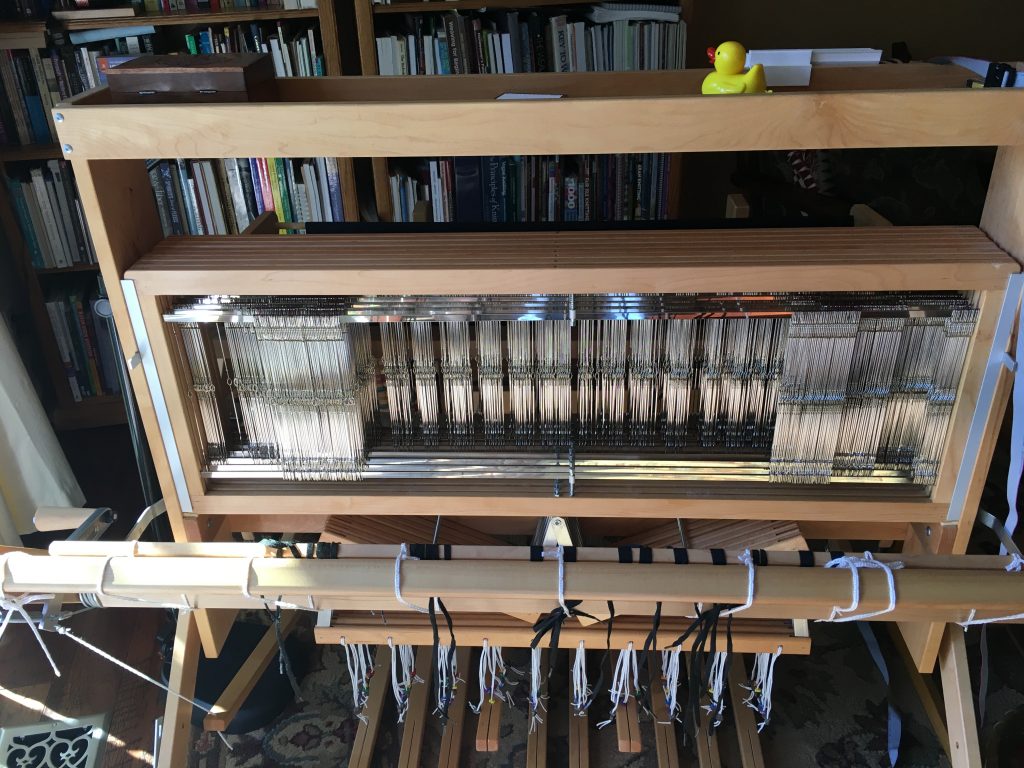
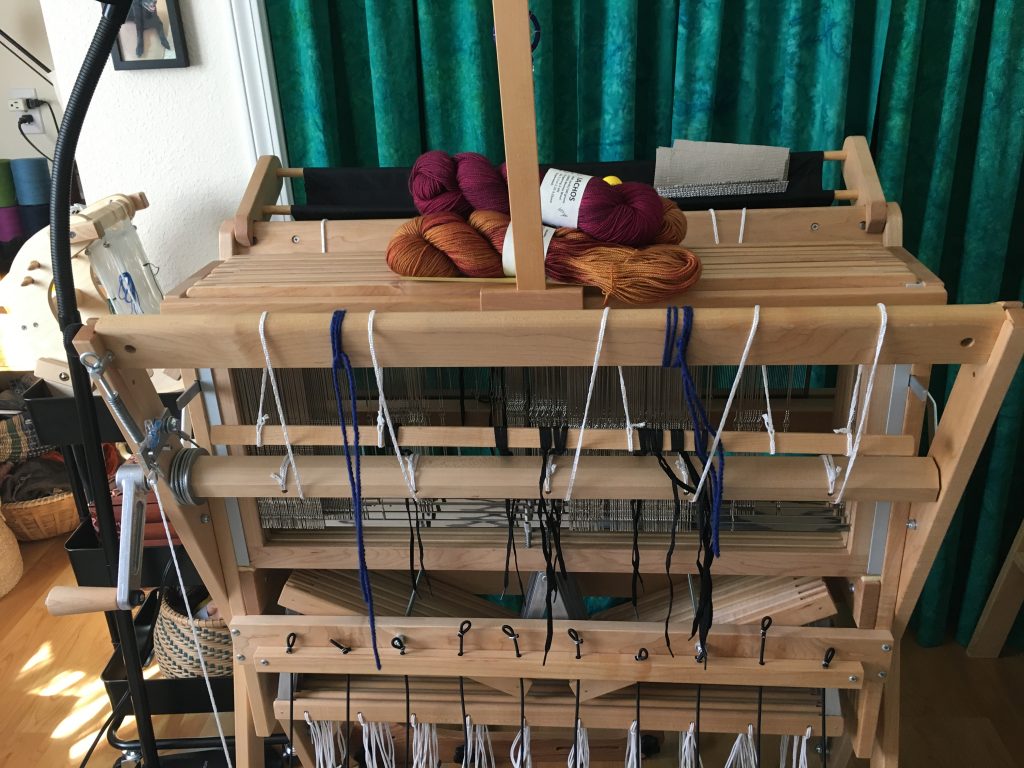
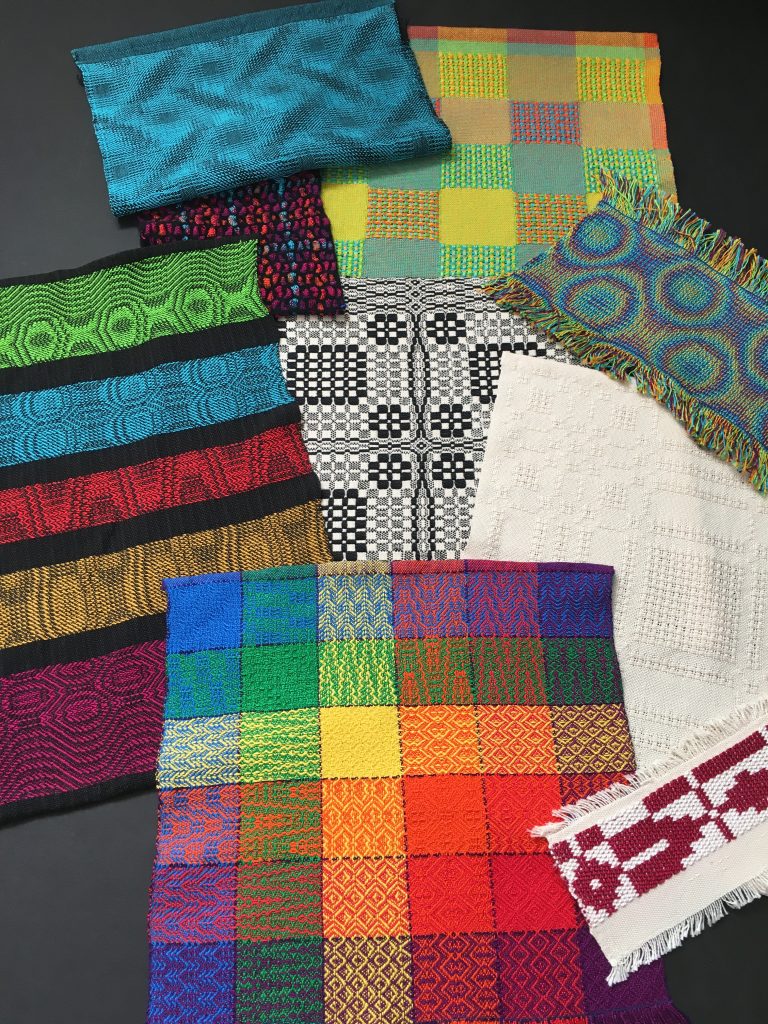
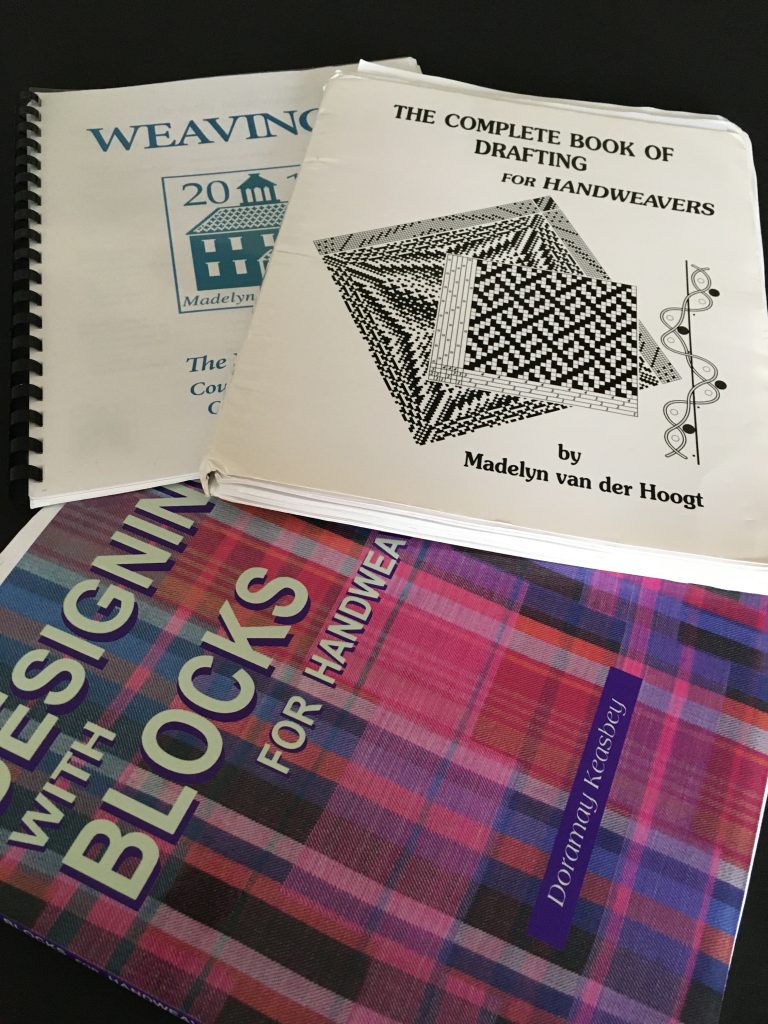
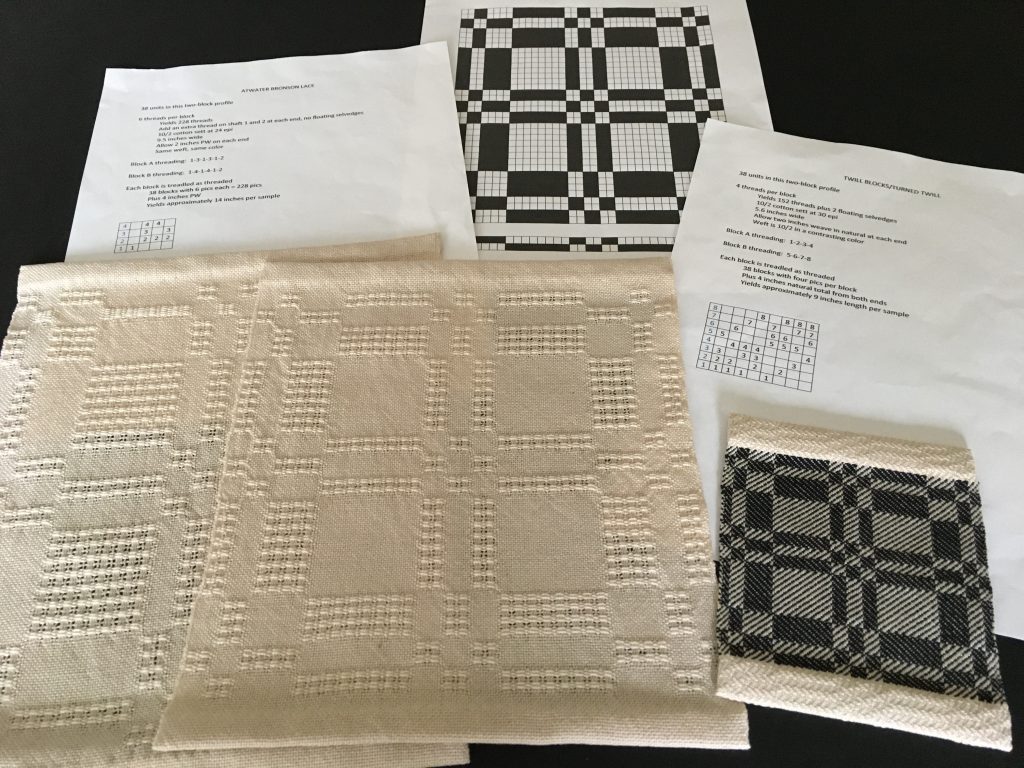
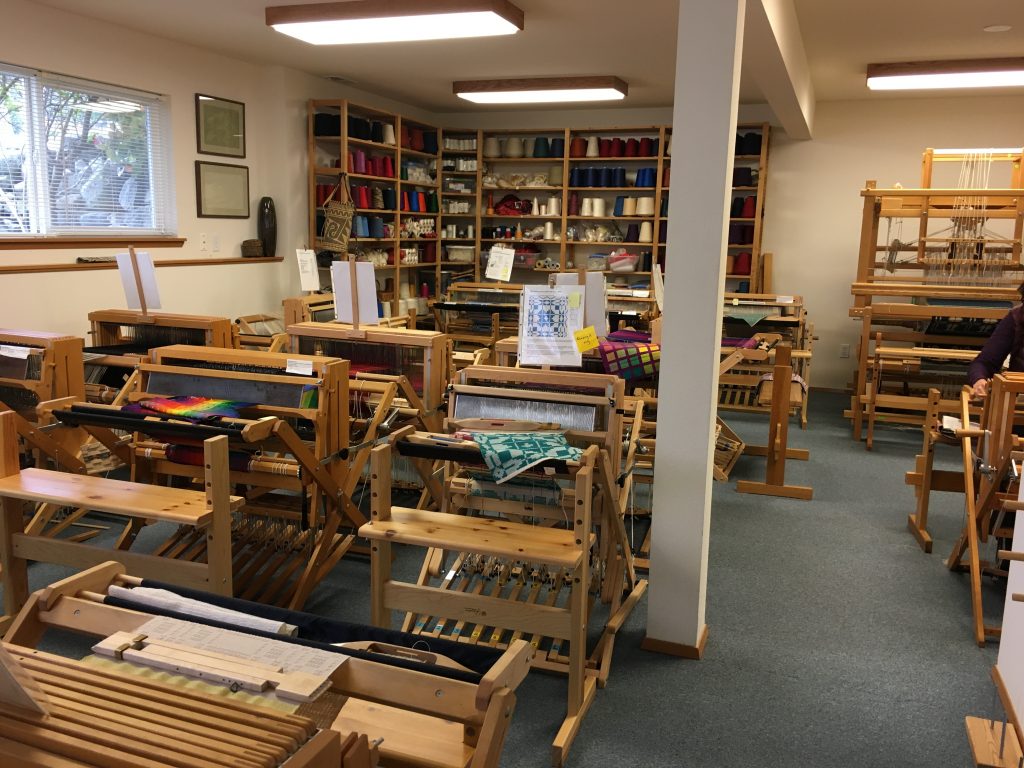
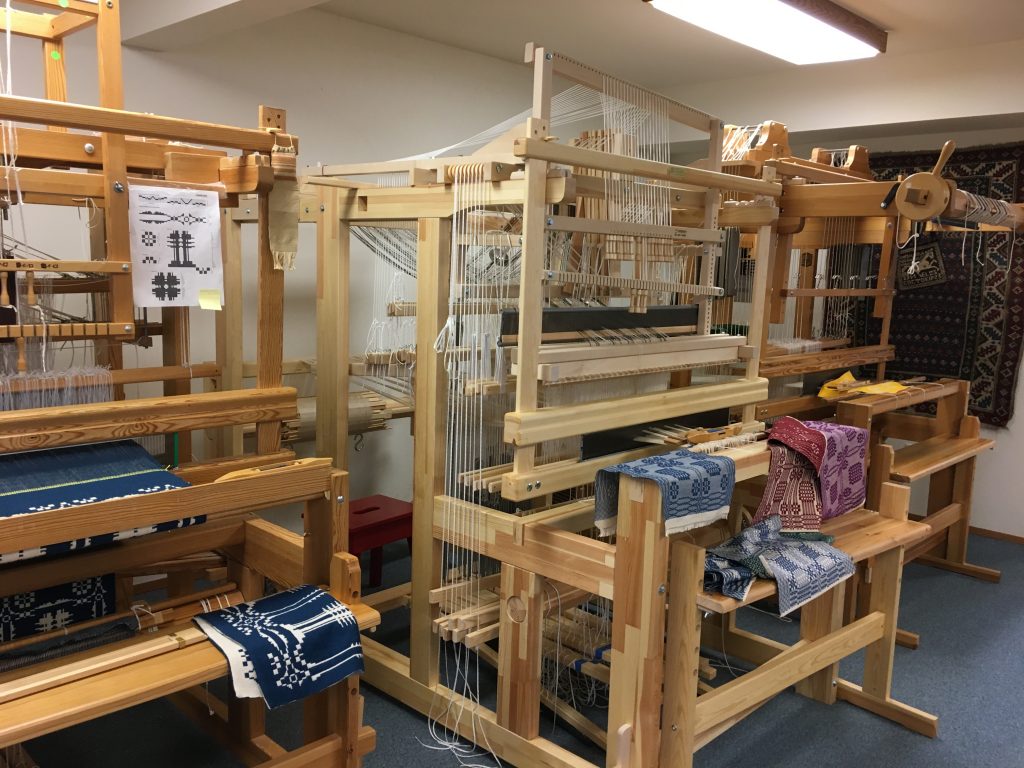
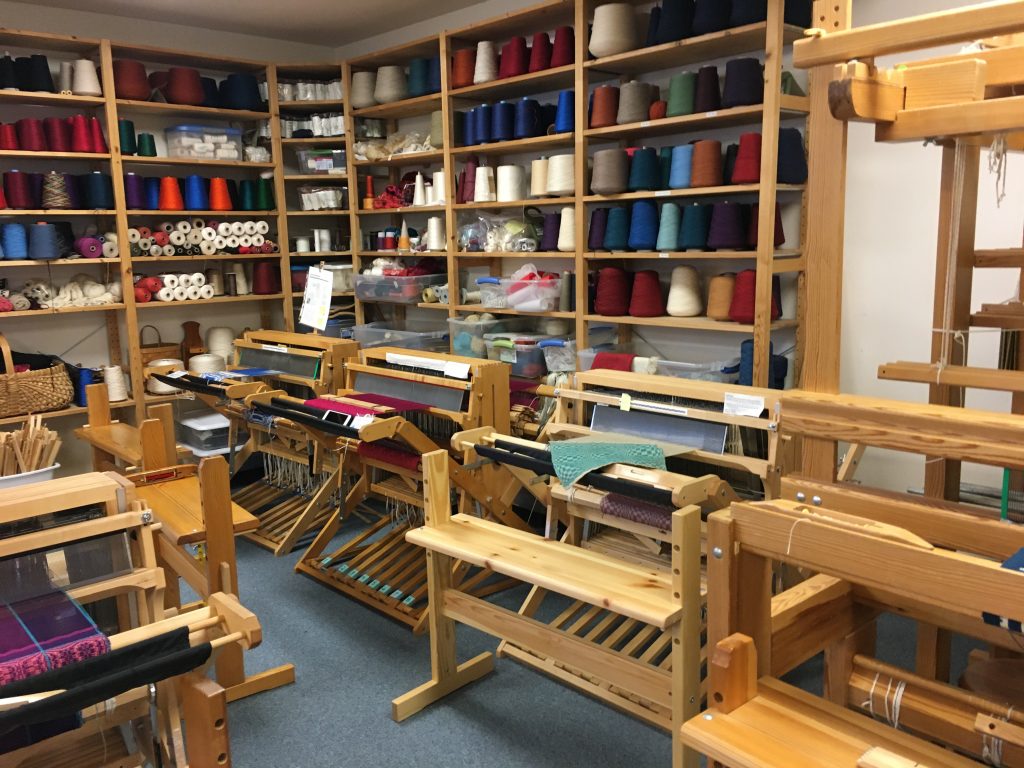
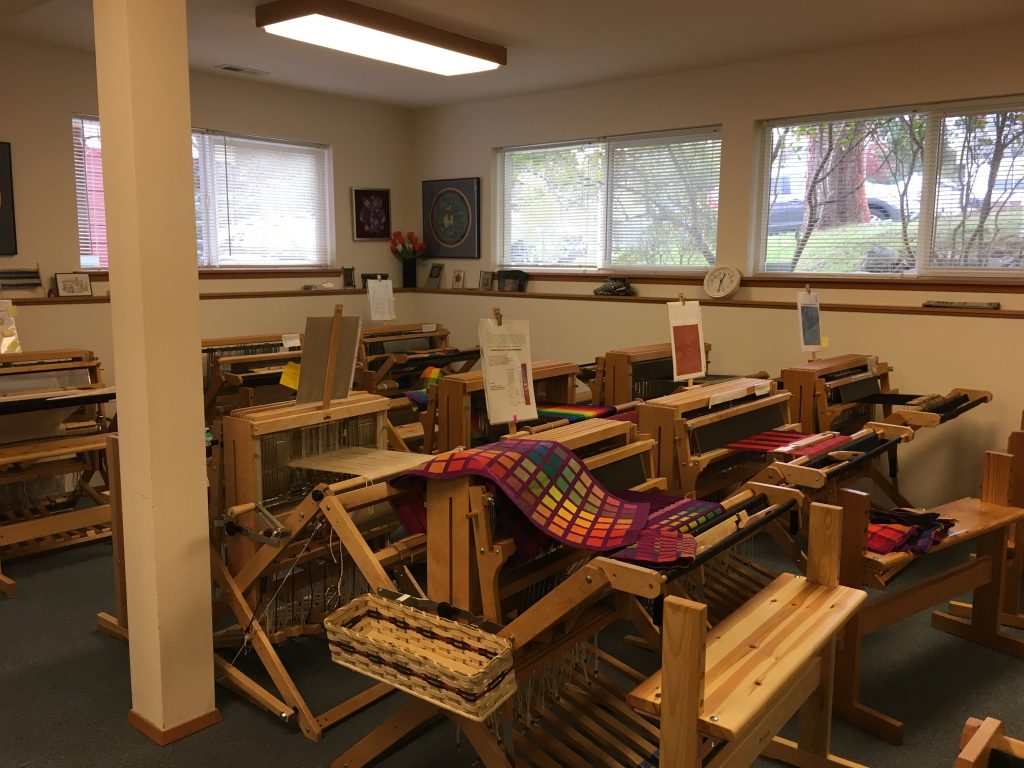
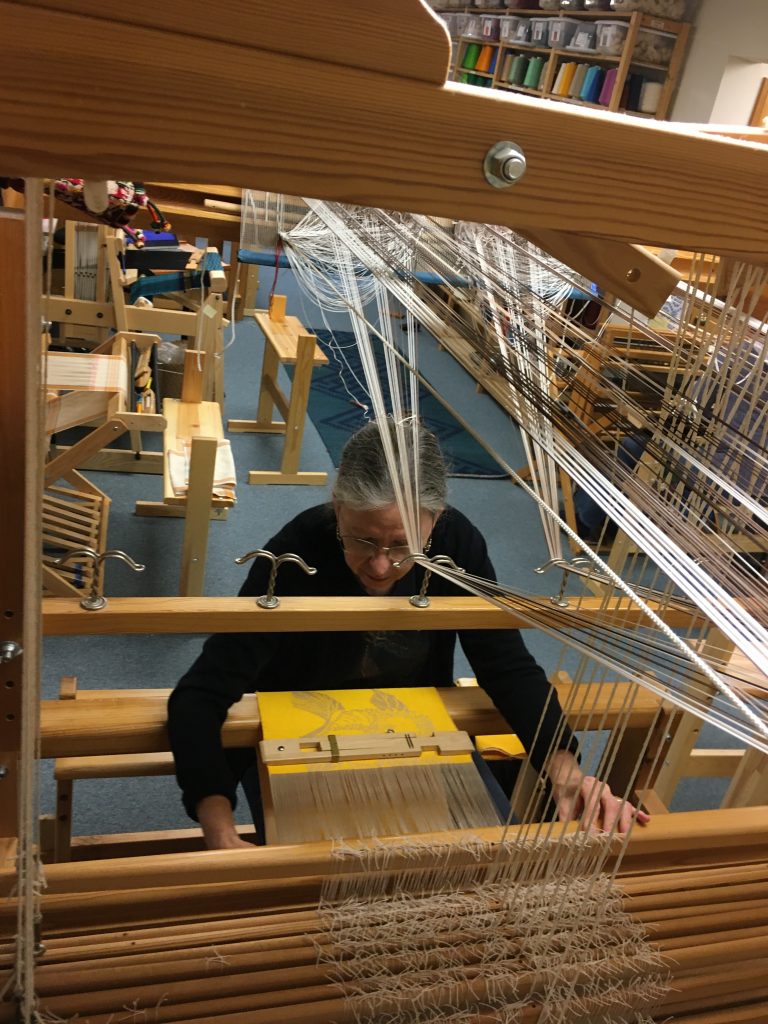
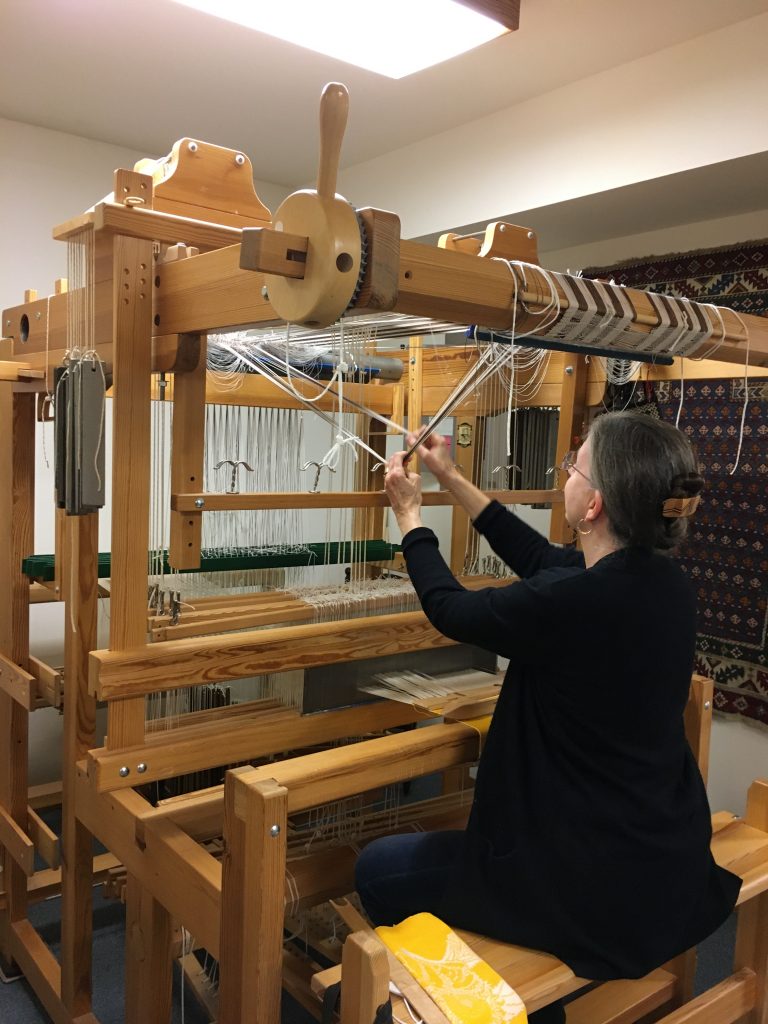
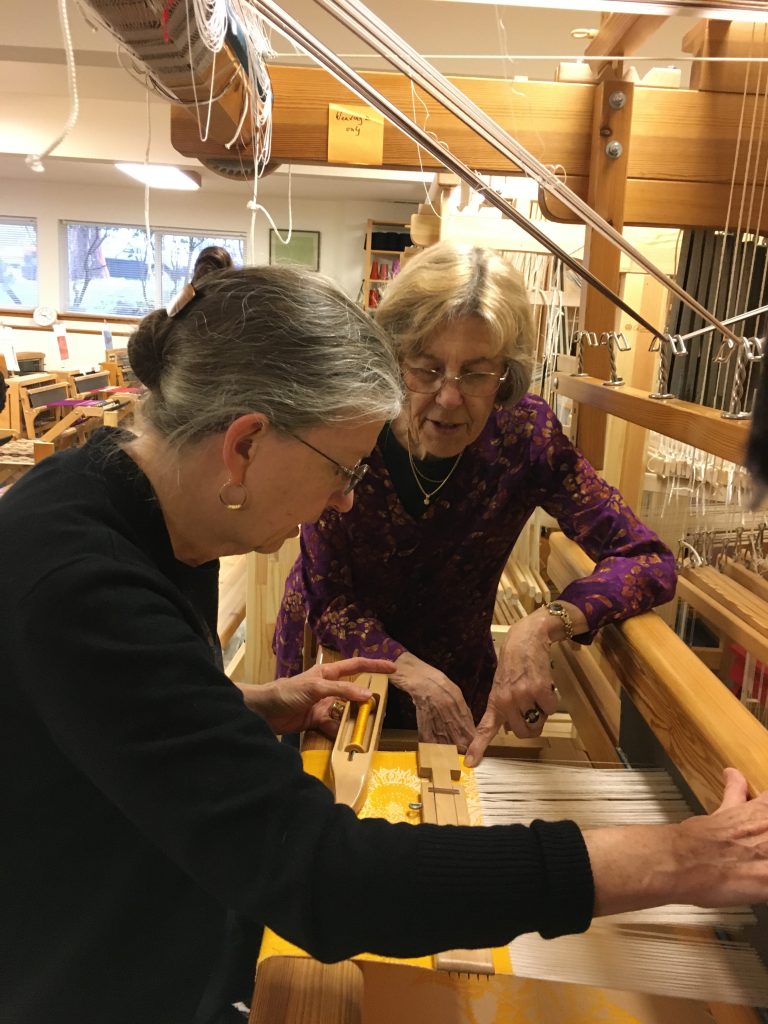
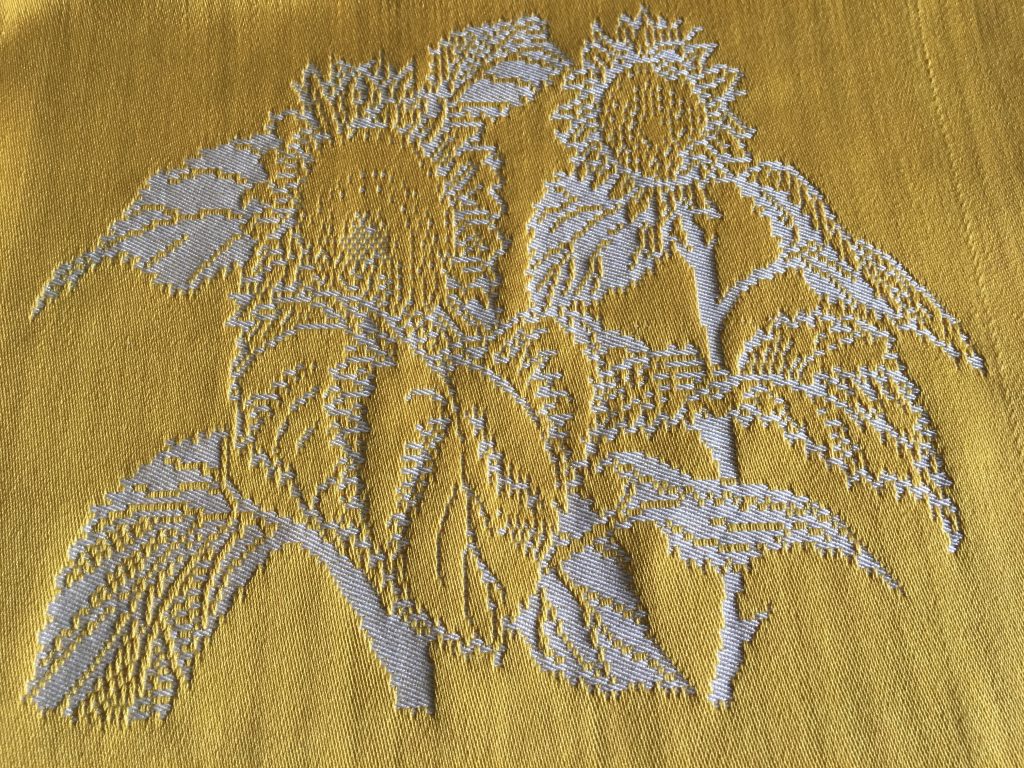


 for the holidays and I made my way through a couple of skeins. I spun a few mini-skeins to get started, including some very fine merino (bottom) and Shetland (top) to sample with.
for the holidays and I made my way through a couple of skeins. I spun a few mini-skeins to get started, including some very fine merino (bottom) and Shetland (top) to sample with.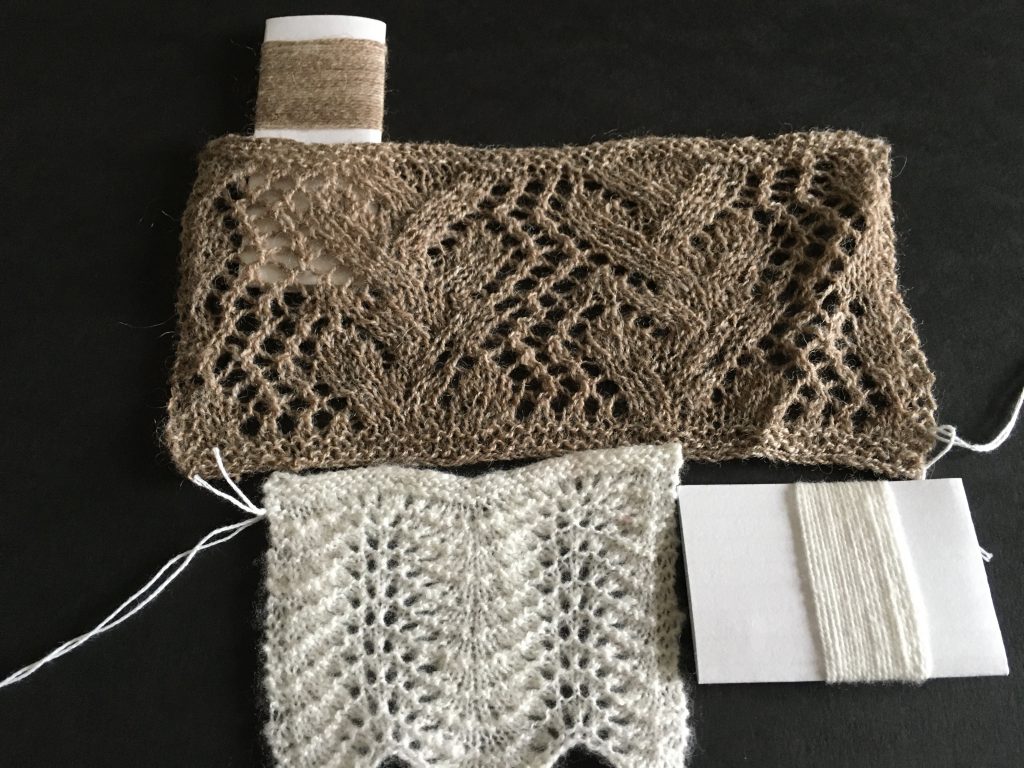
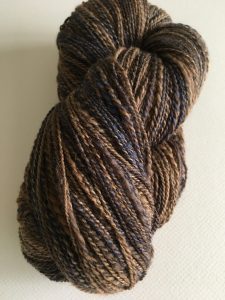
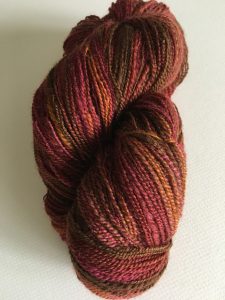
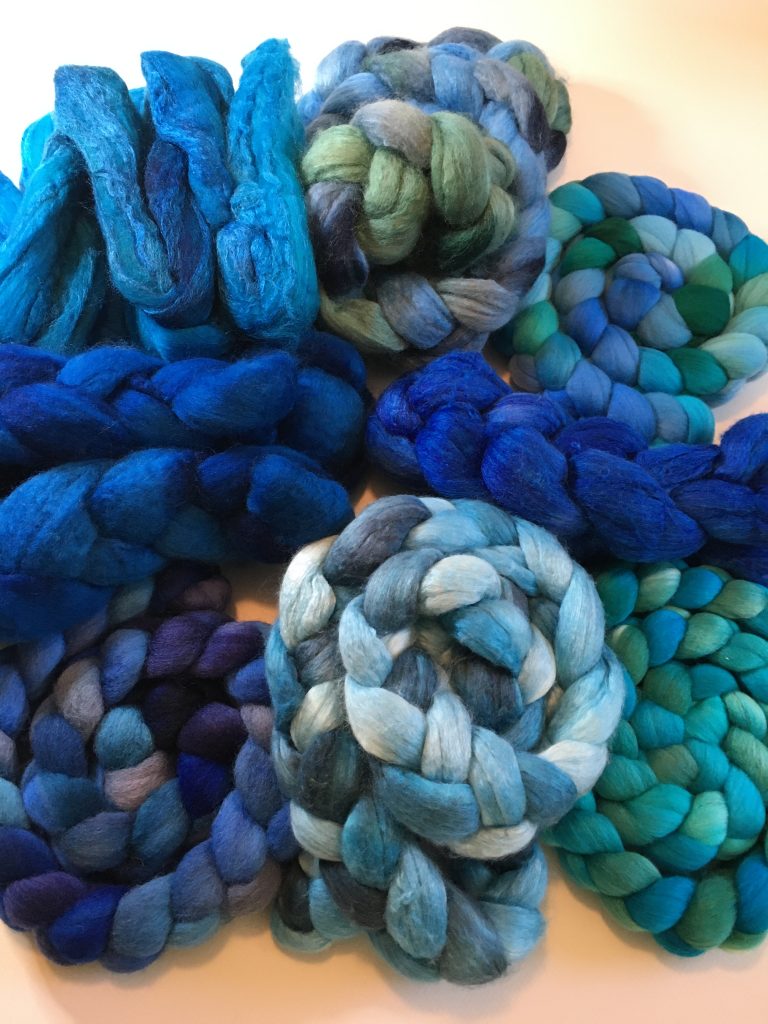

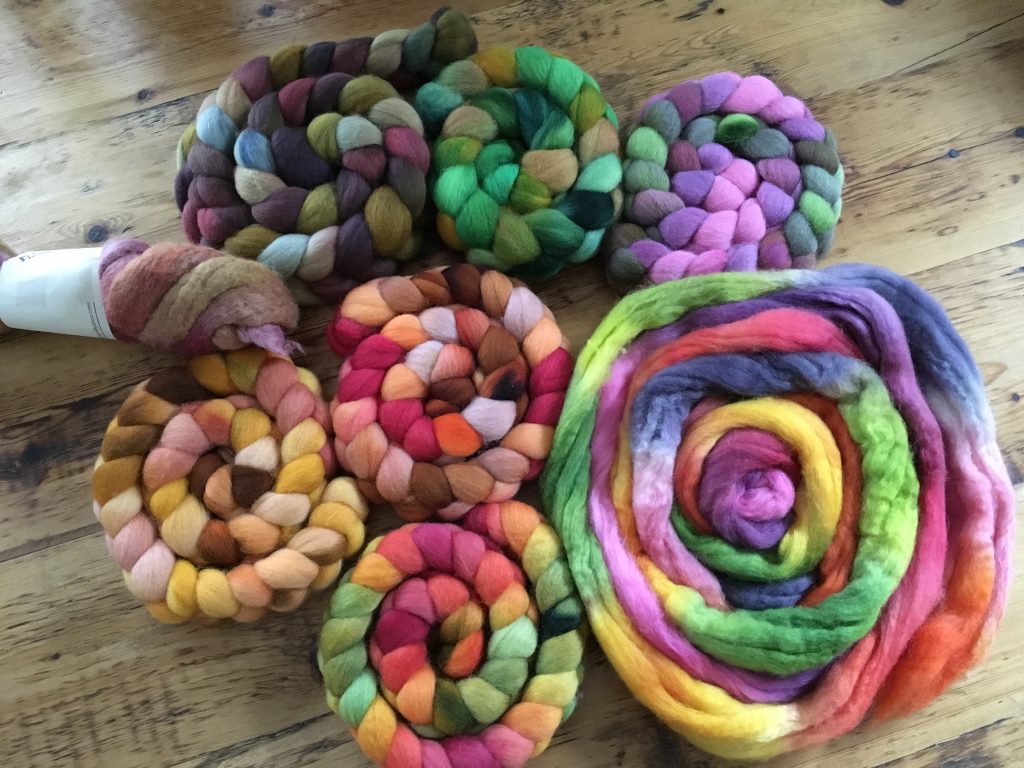 I’m pleased with how it turned out and how the sweater fits.
I’m pleased with how it turned out and how the sweater fits. 
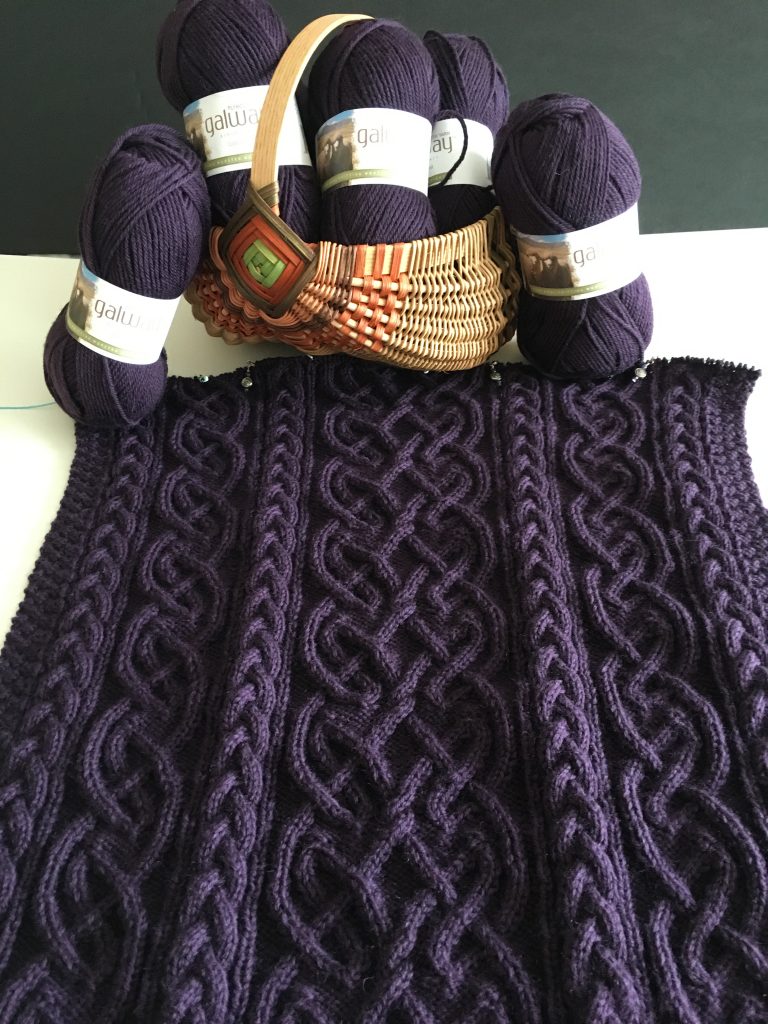 True, I did not keep my promise of not casting on until other projects came out of hibernation, but at least I only started one project! Of course, with having visited the Stitches West marketplace, I have several skeins sitting out with one big project planned.
True, I did not keep my promise of not casting on until other projects came out of hibernation, but at least I only started one project! Of course, with having visited the Stitches West marketplace, I have several skeins sitting out with one big project planned. 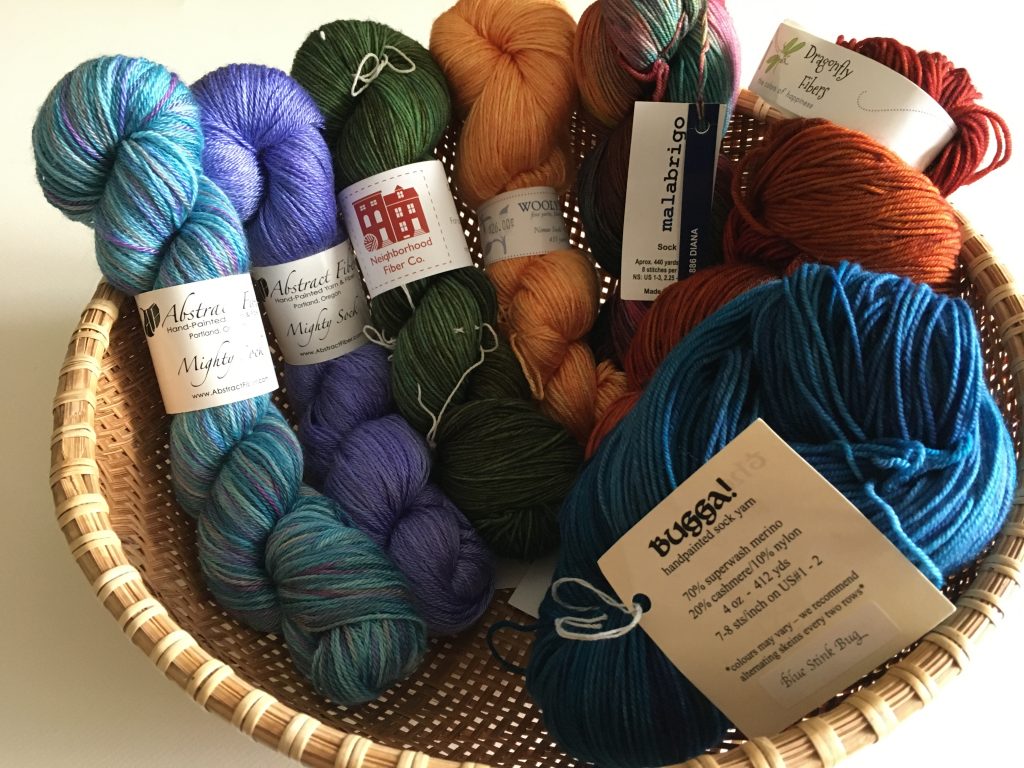
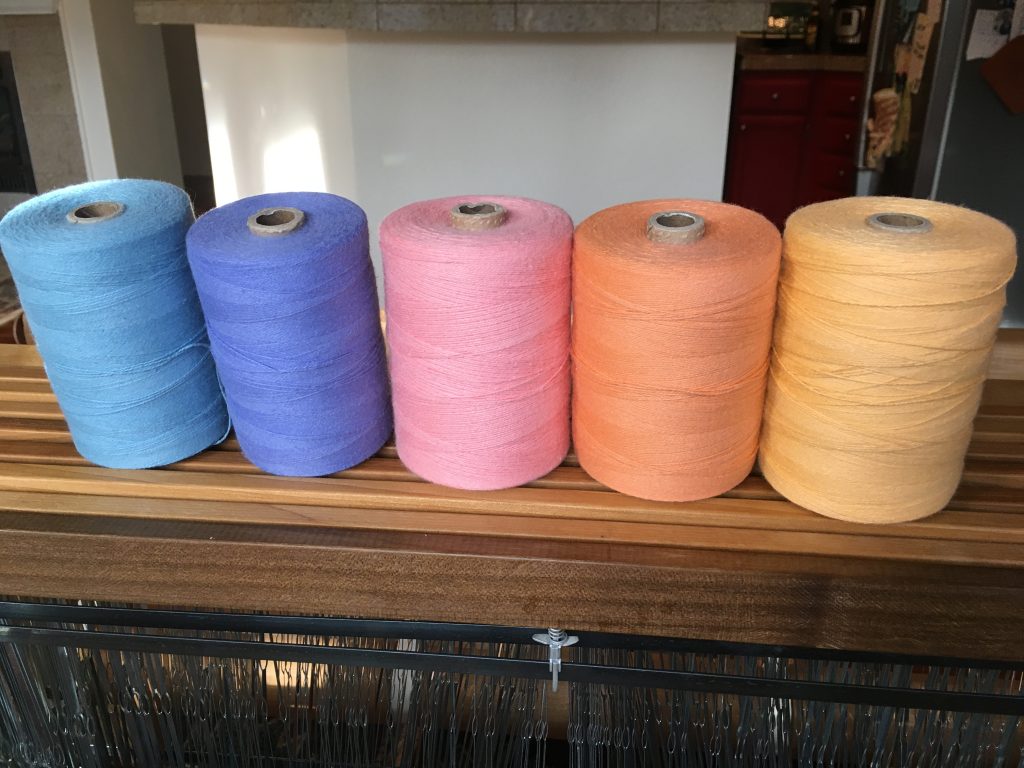
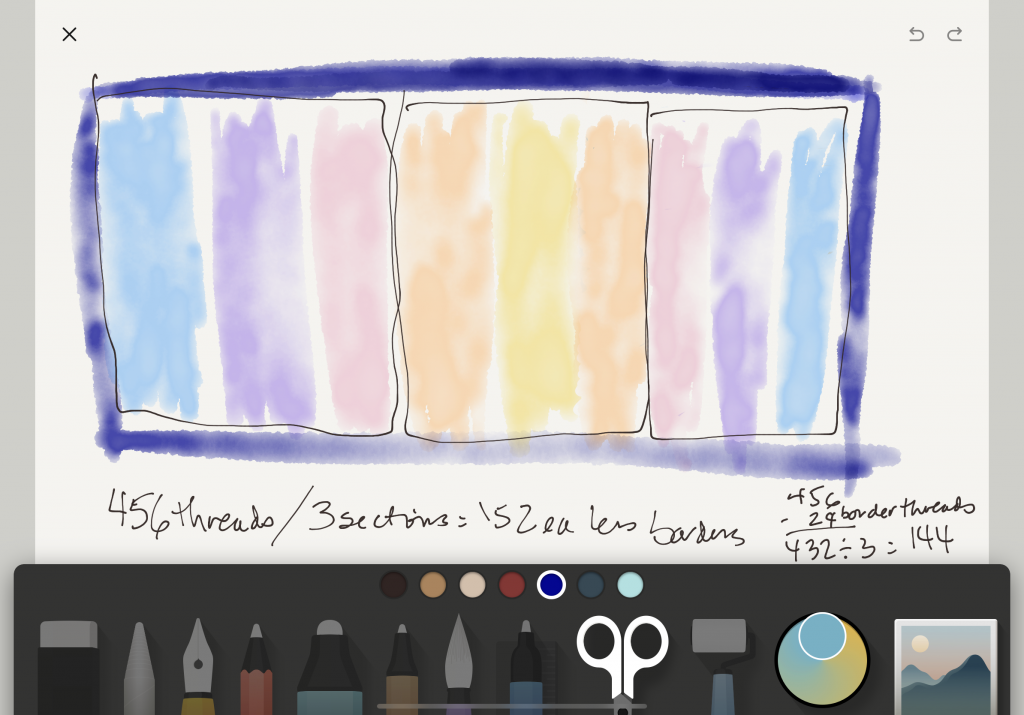 (I’m liking the app Paper) and moving tubes of cotton around, I settled on plain weave and stripes to complement her many windows with view of sky. It was fun, taught me a great deal, and I’m sure to repeat the experiment with better results next time. My daughter was pleased, so that’s all that counts for this run of sky towels.
(I’m liking the app Paper) and moving tubes of cotton around, I settled on plain weave and stripes to complement her many windows with view of sky. It was fun, taught me a great deal, and I’m sure to repeat the experiment with better results next time. My daughter was pleased, so that’s all that counts for this run of sky towels.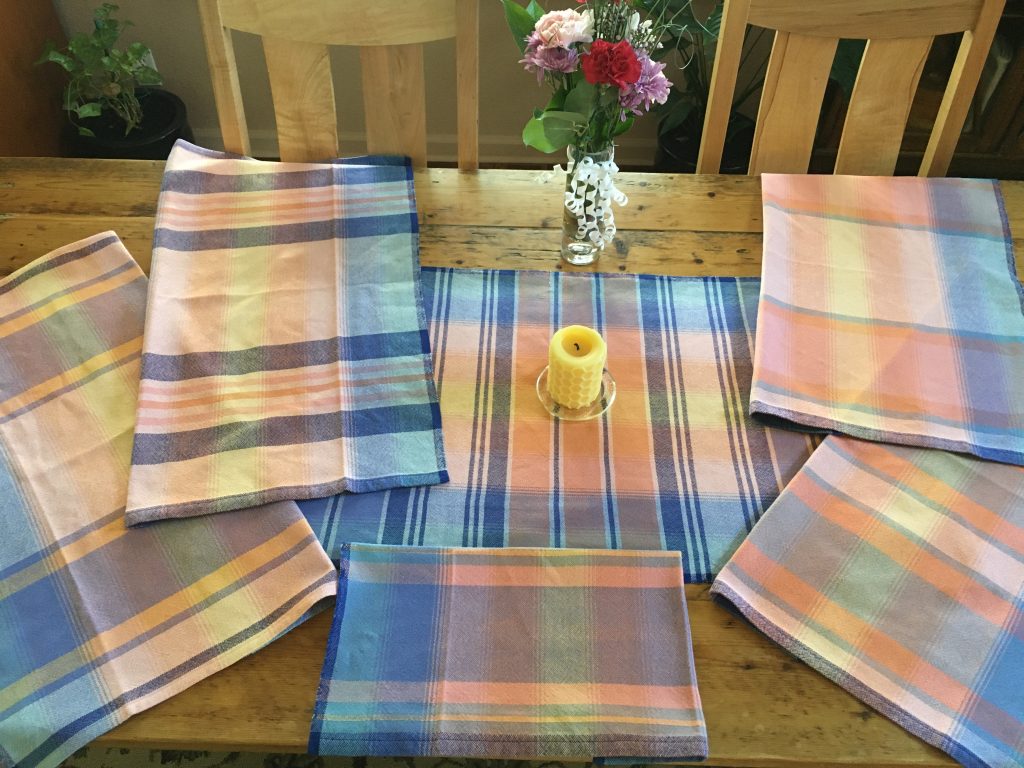
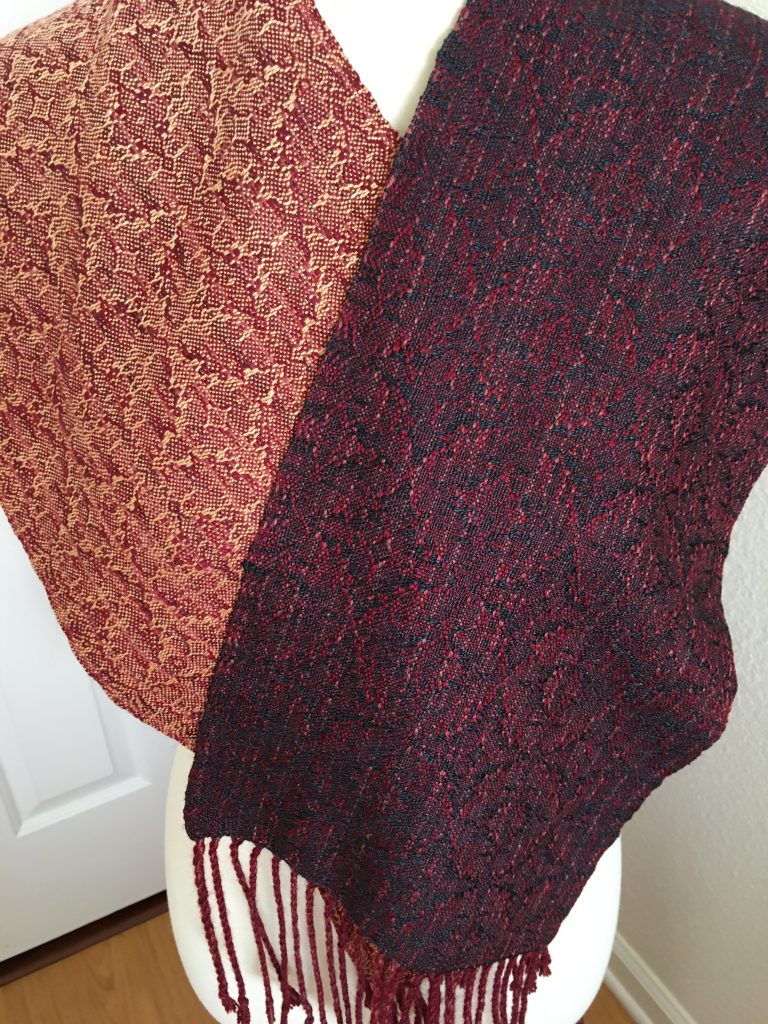
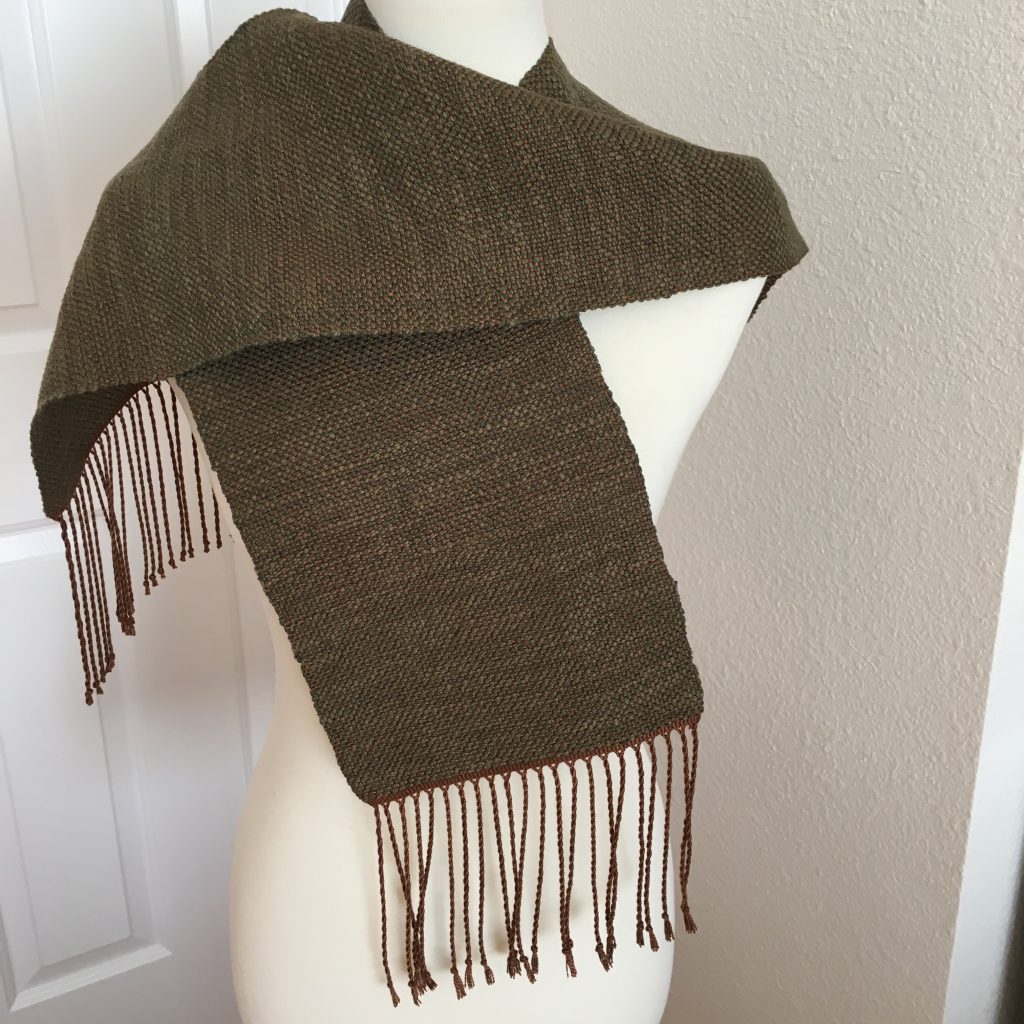
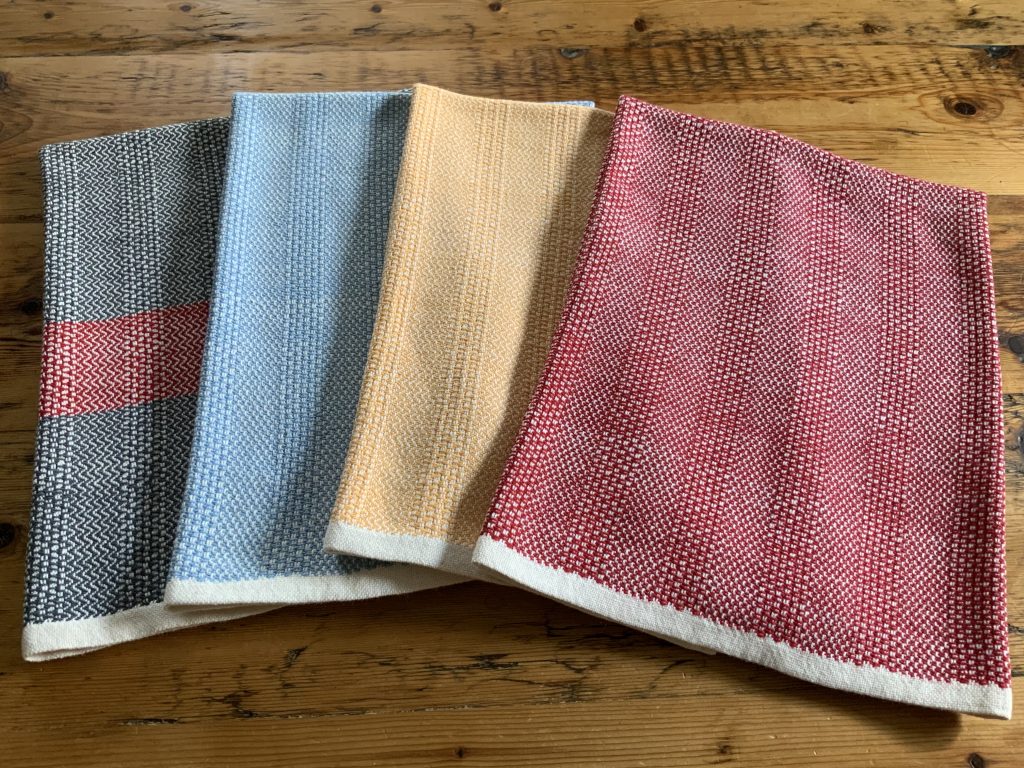
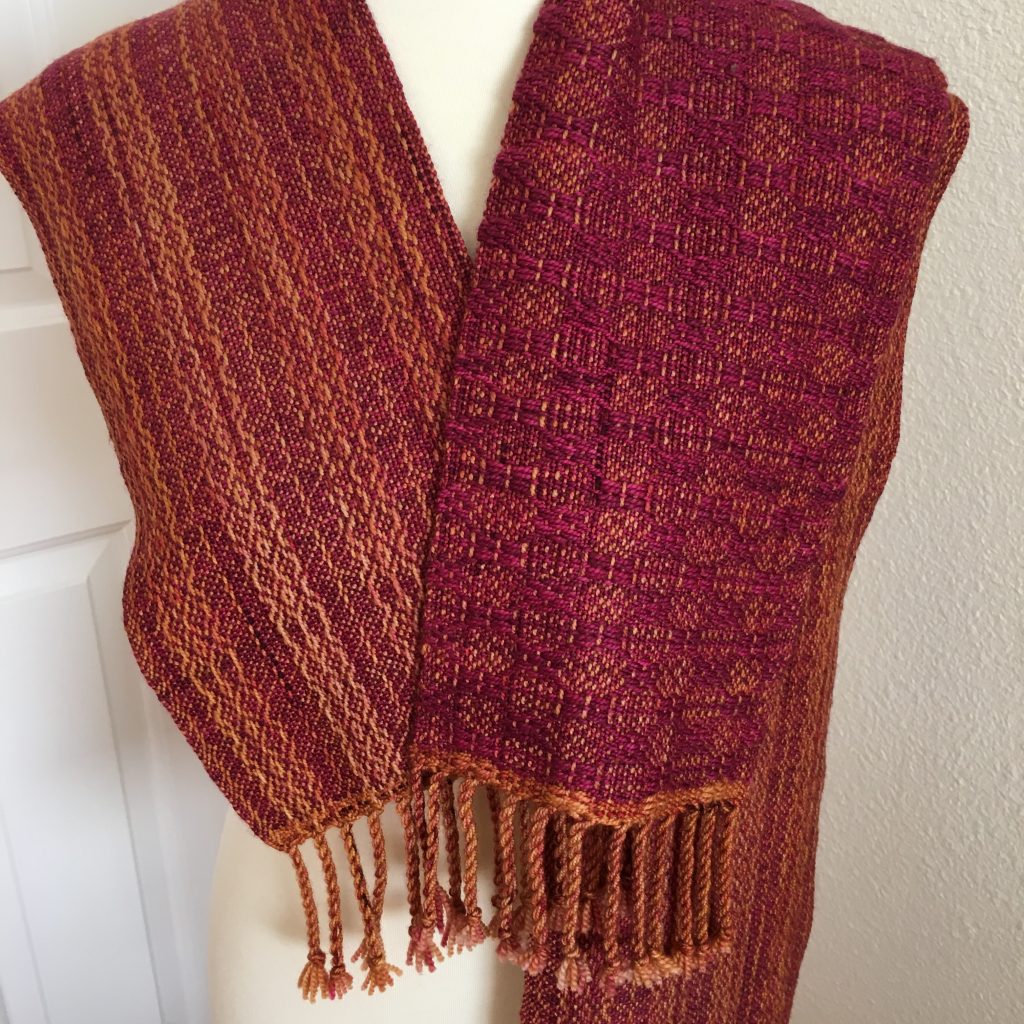
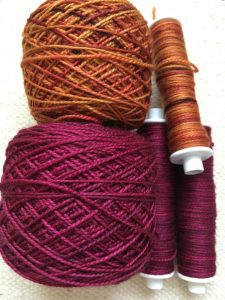
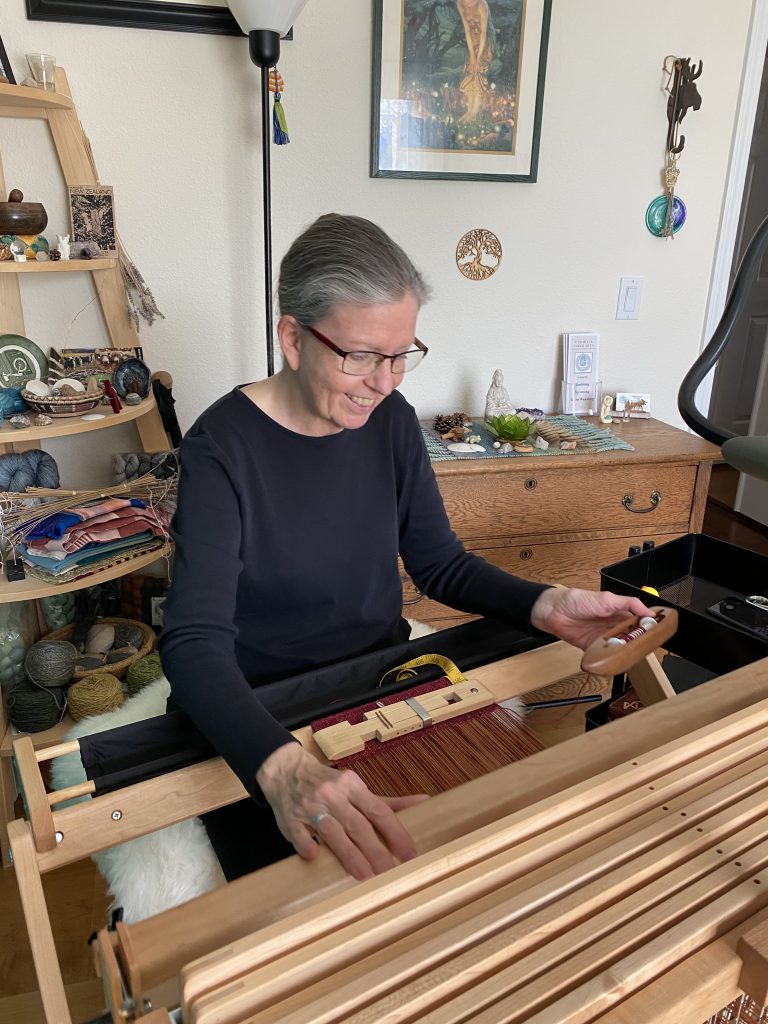 And the project planning involved takes me out of any fears or dark thoughts that loom on the edge.
And the project planning involved takes me out of any fears or dark thoughts that loom on the edge.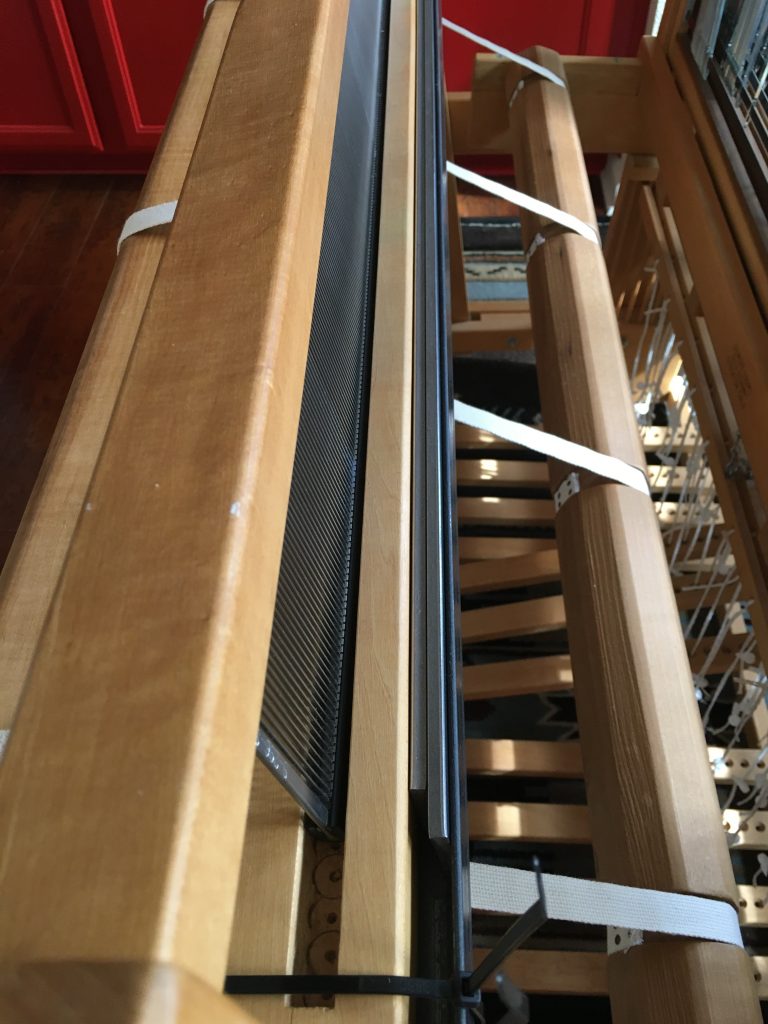 The angle iron and weights are in place now and I have selected a draft. I’m not convinced rug weaving will be my “thing” but I’m certainly going to give it a try. I figure two rugs and then I will decide: be a rug weaver or move Gil along to a loving home. In any event, a slightly used Wolf Pup LT is coming my way from Oregon (via my youngest kiddo in Washington) once we can move about again. Dare I say “safely” move about?
The angle iron and weights are in place now and I have selected a draft. I’m not convinced rug weaving will be my “thing” but I’m certainly going to give it a try. I figure two rugs and then I will decide: be a rug weaver or move Gil along to a loving home. In any event, a slightly used Wolf Pup LT is coming my way from Oregon (via my youngest kiddo in Washington) once we can move about again. Dare I say “safely” move about?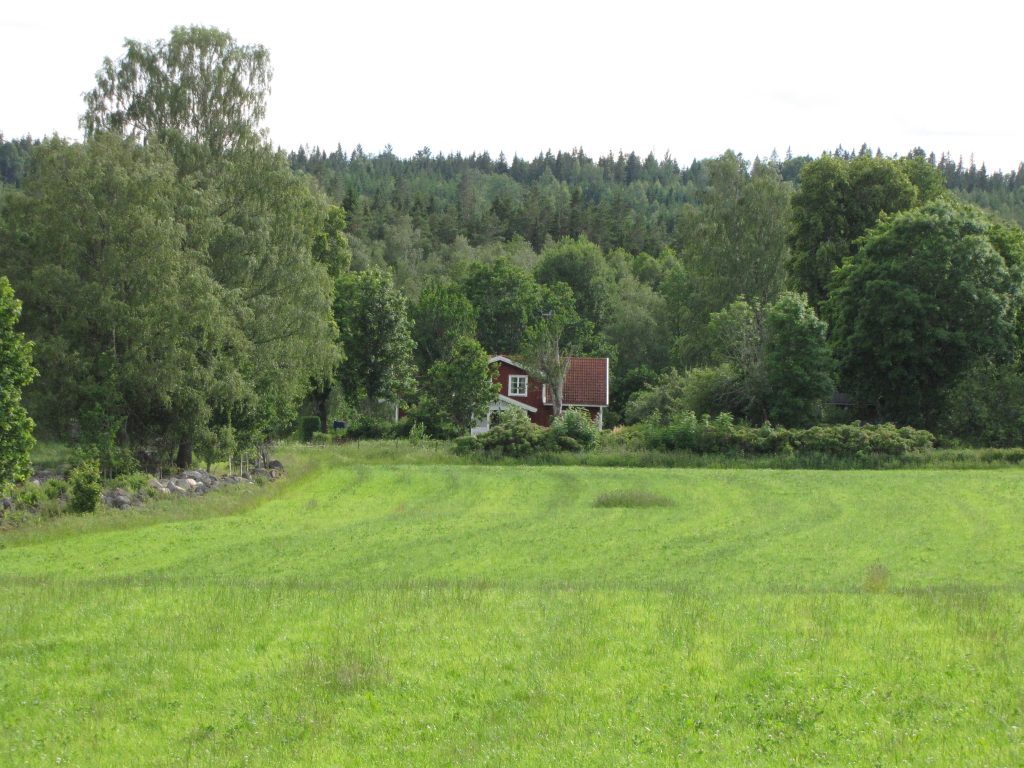


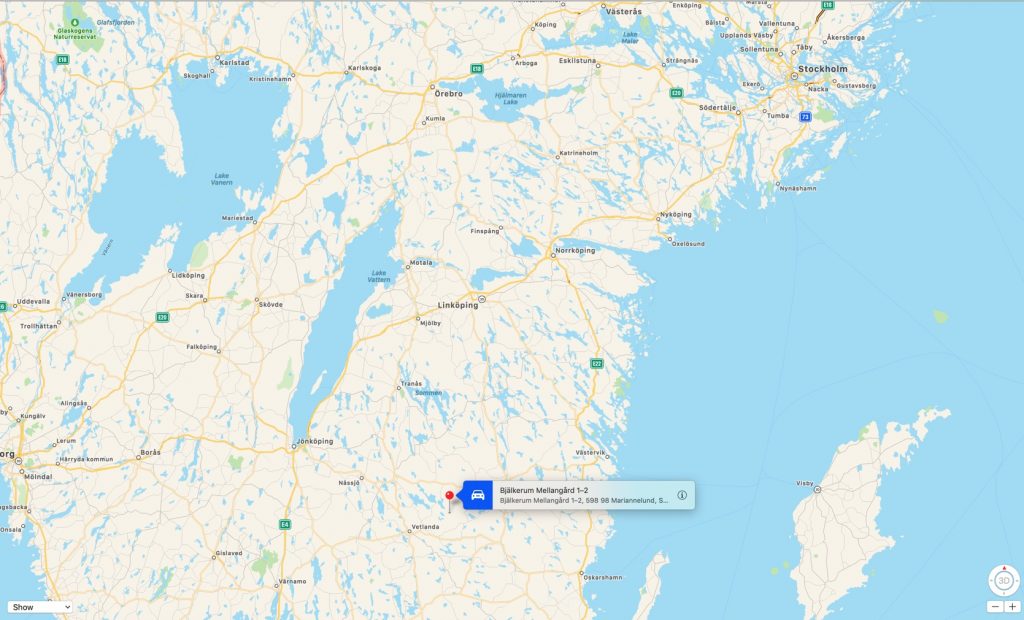 and was originally a dairy farm.
and was originally a dairy farm.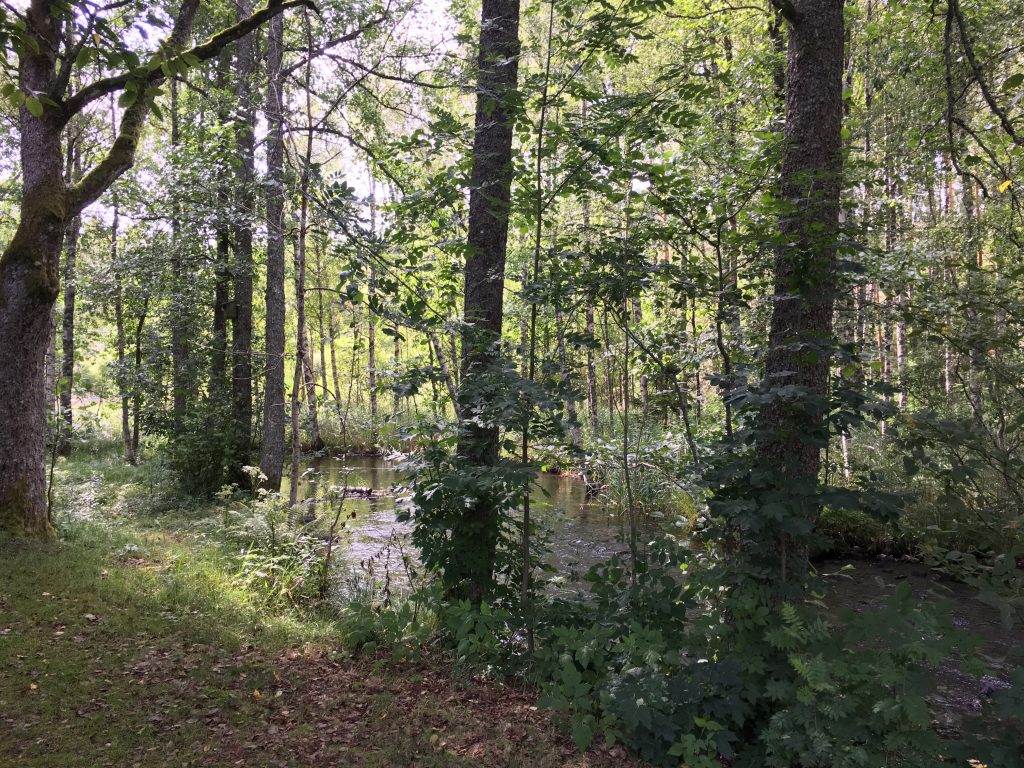
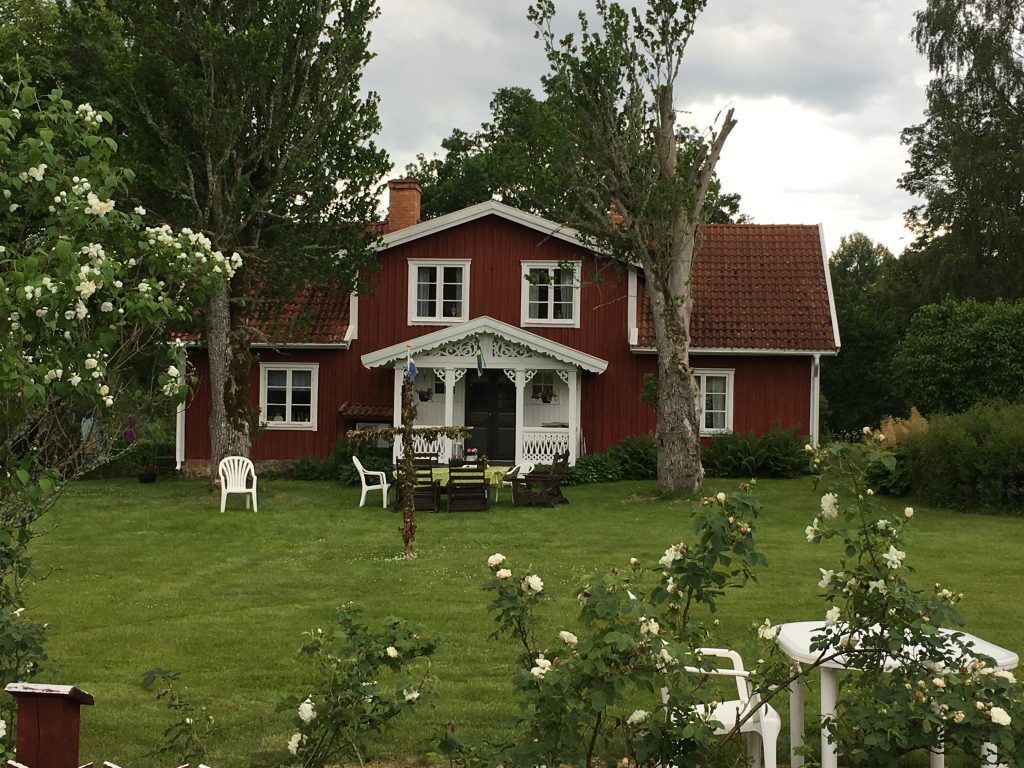
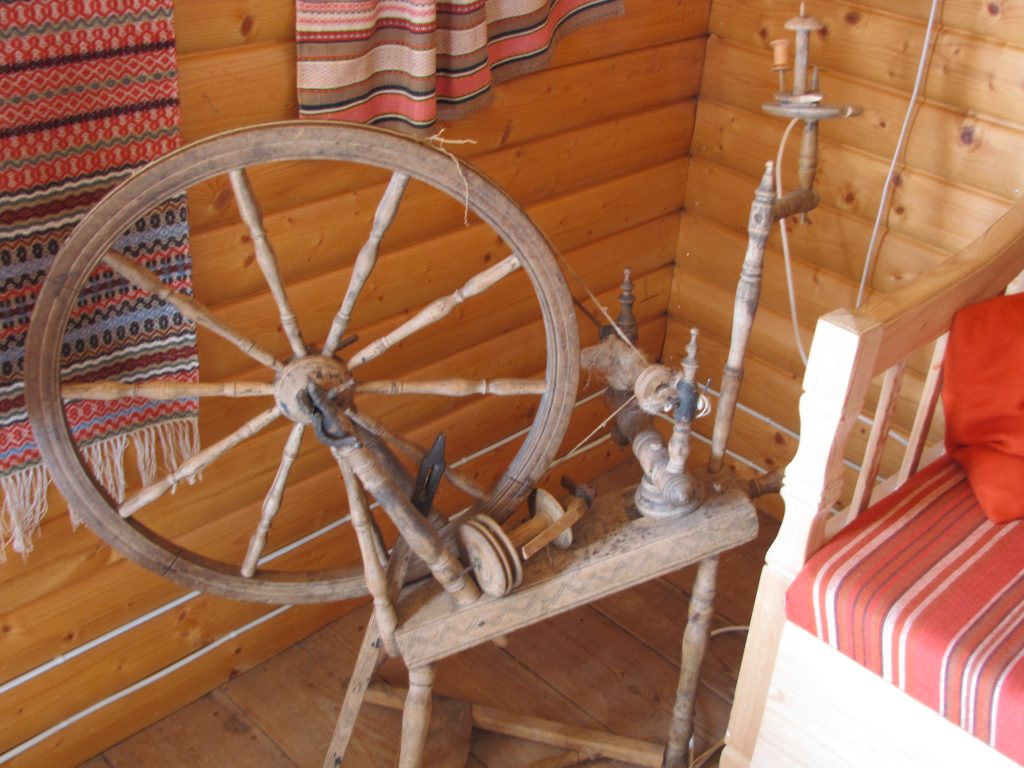
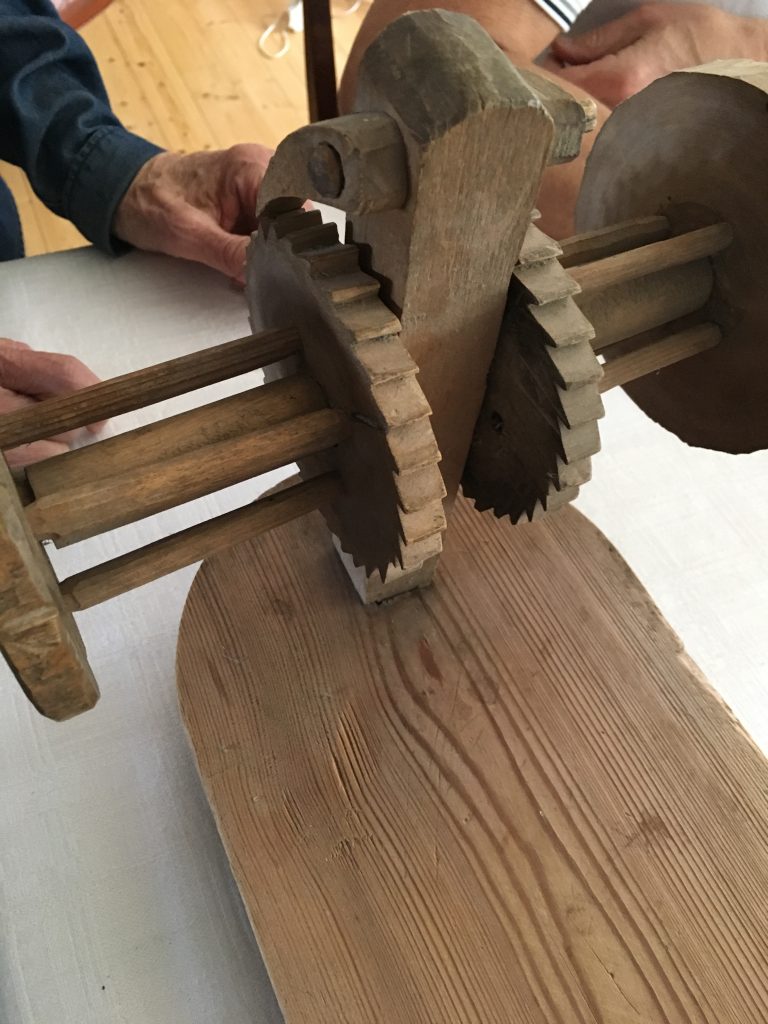
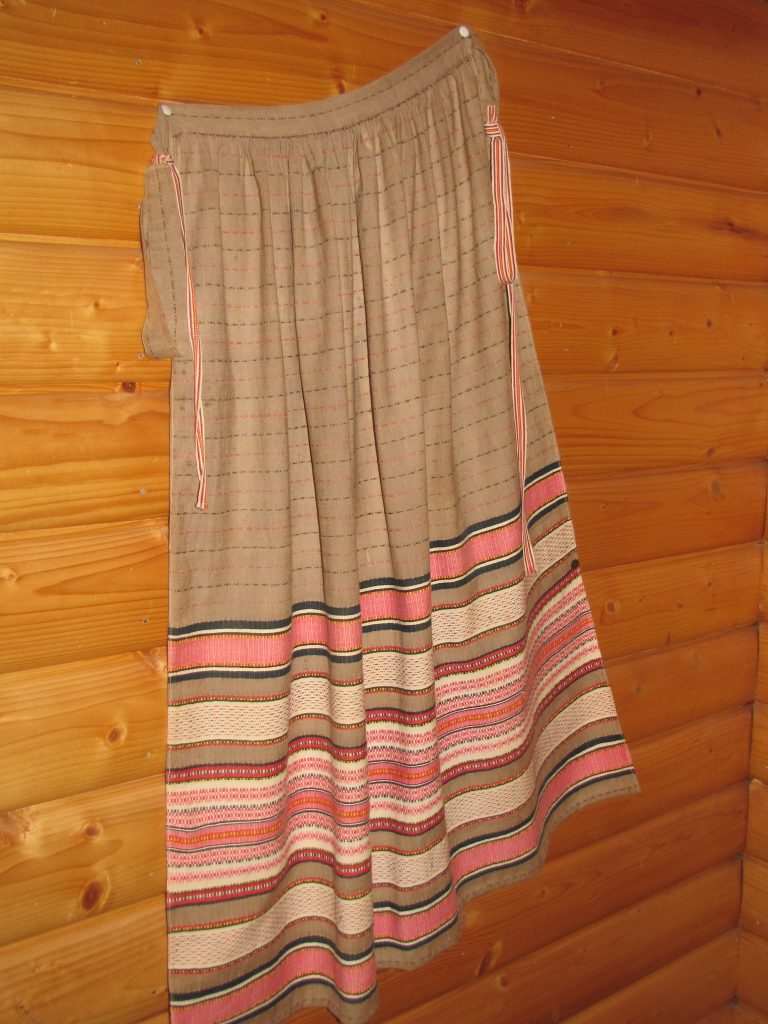
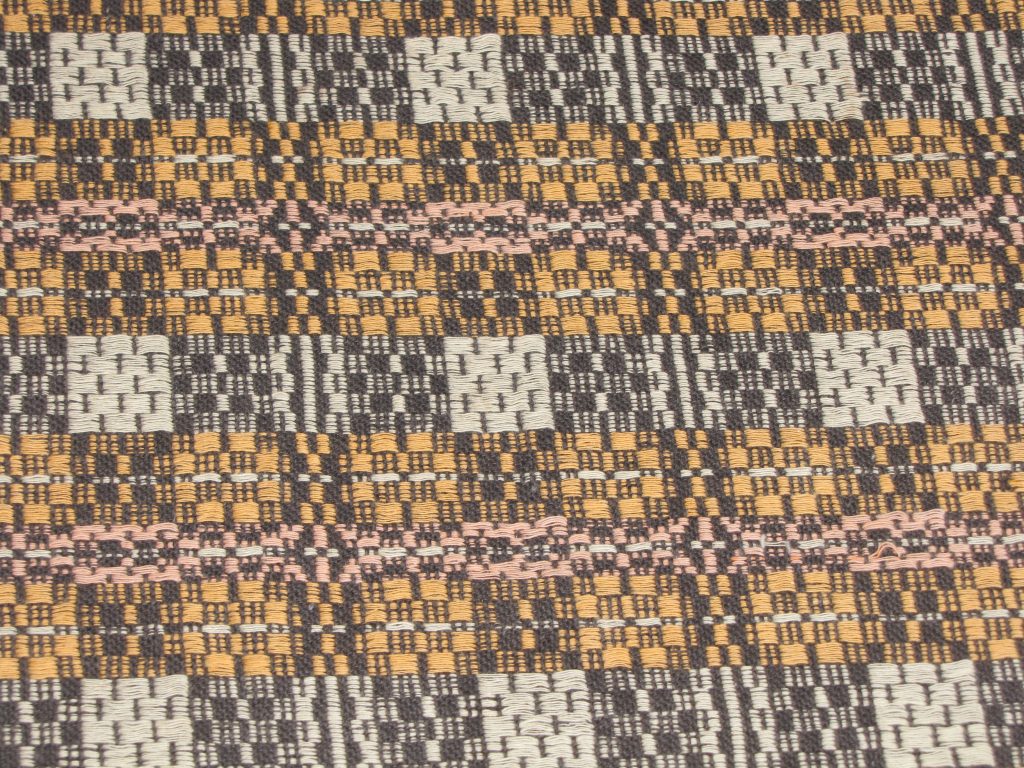
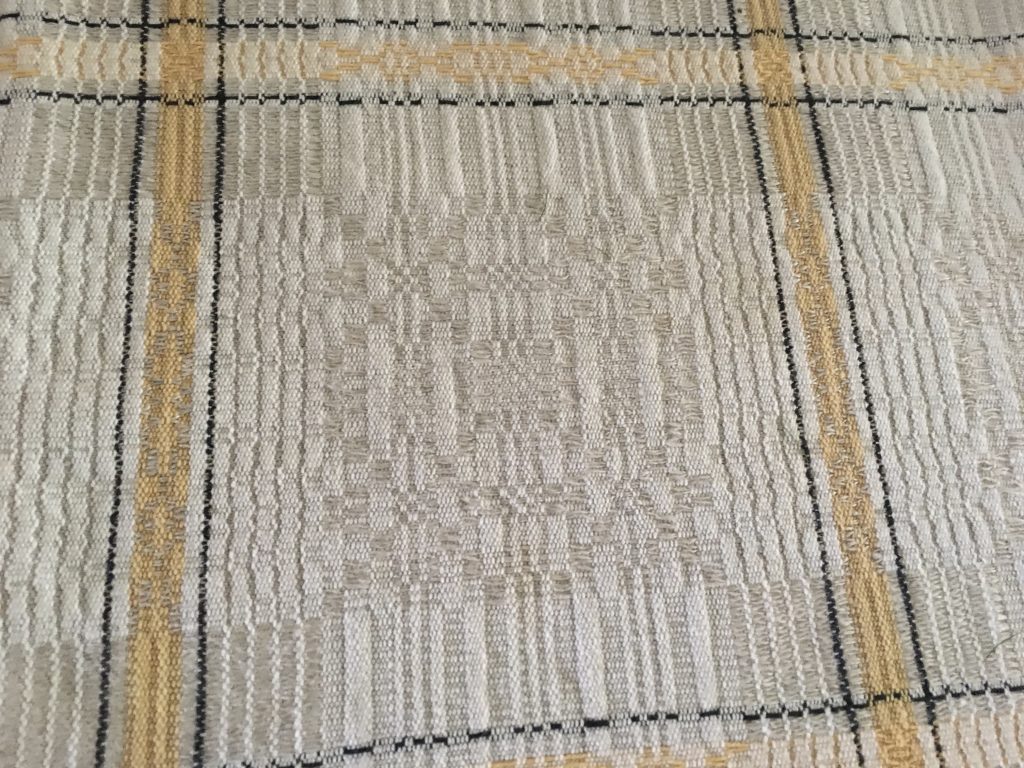
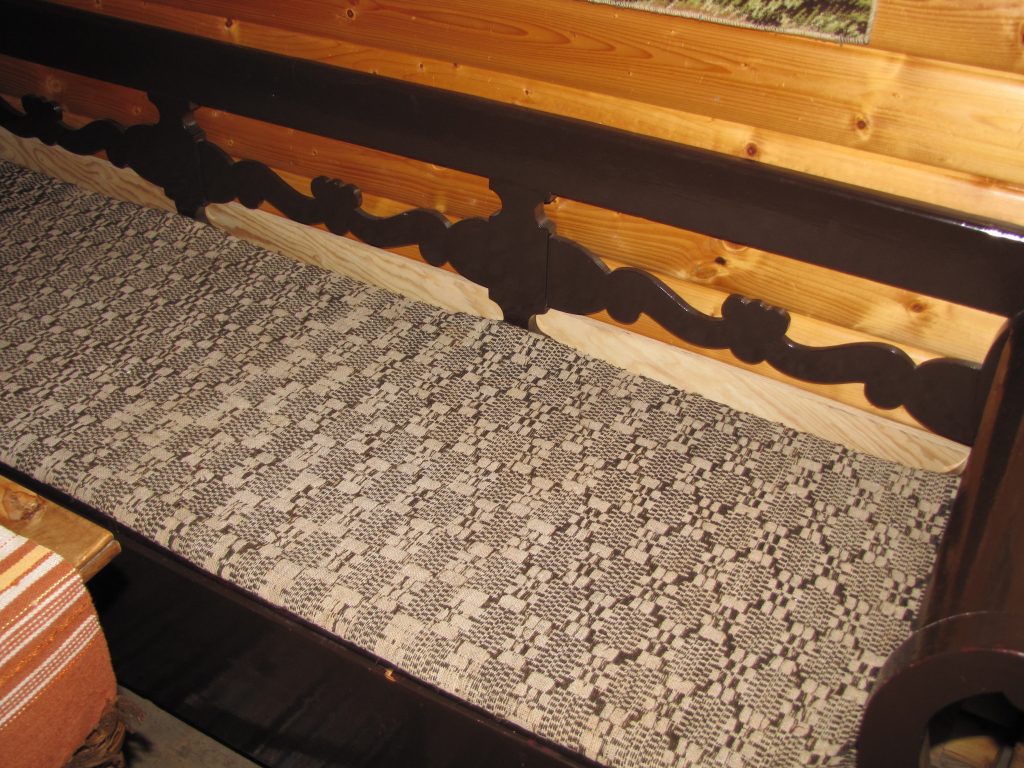 When the family understood my excitement as a spinner and newer weaver, they also became enthusiastic. Soon Annica, who makes everything so beautiful and welcoming, and Margaretha, the elder of the family, took me to the cabinet in the dining room and we were exploring table cloths, hand towels, and wall hangings that ancestors created in years past.
When the family understood my excitement as a spinner and newer weaver, they also became enthusiastic. Soon Annica, who makes everything so beautiful and welcoming, and Margaretha, the elder of the family, took me to the cabinet in the dining room and we were exploring table cloths, hand towels, and wall hangings that ancestors created in years past.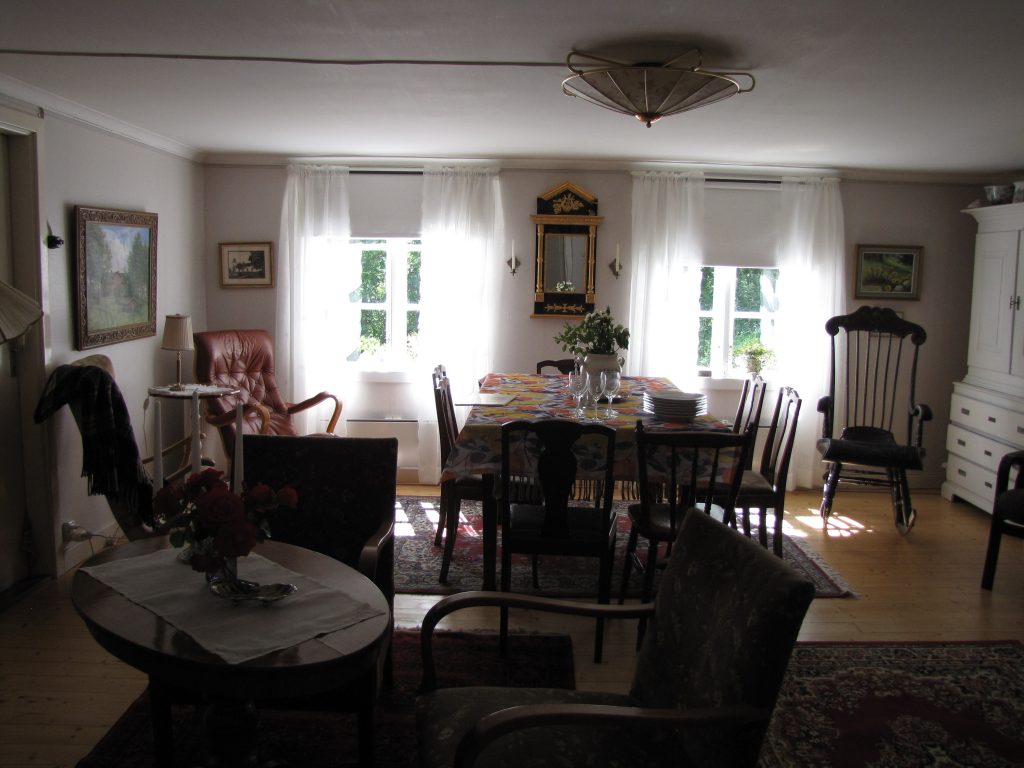
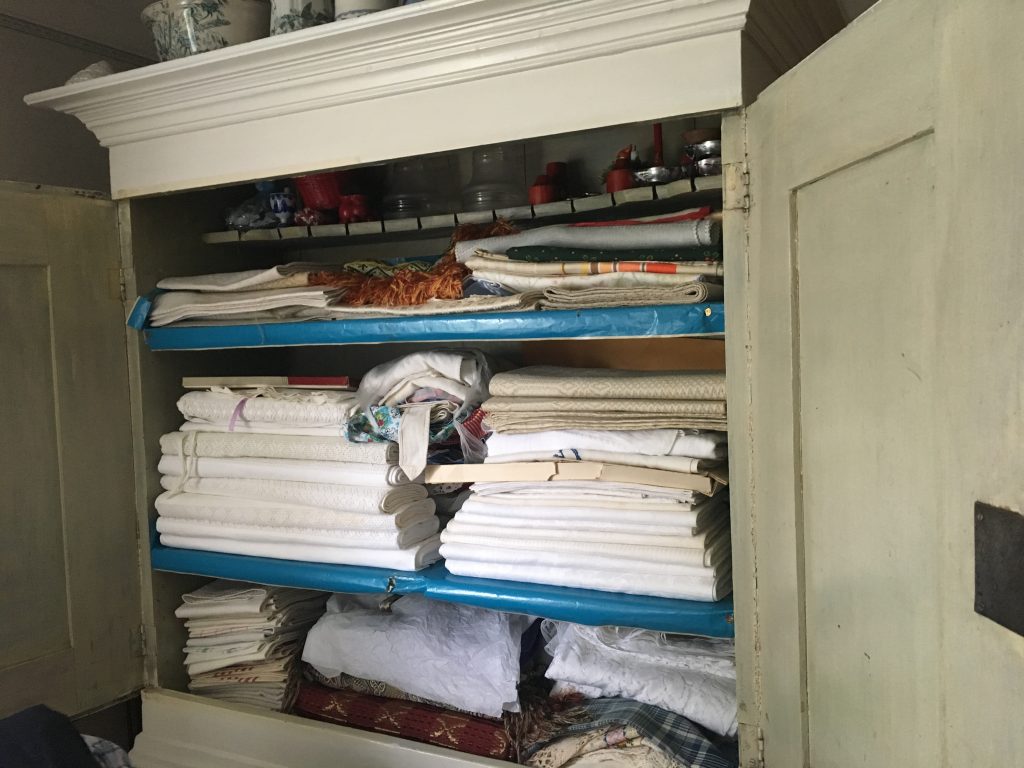
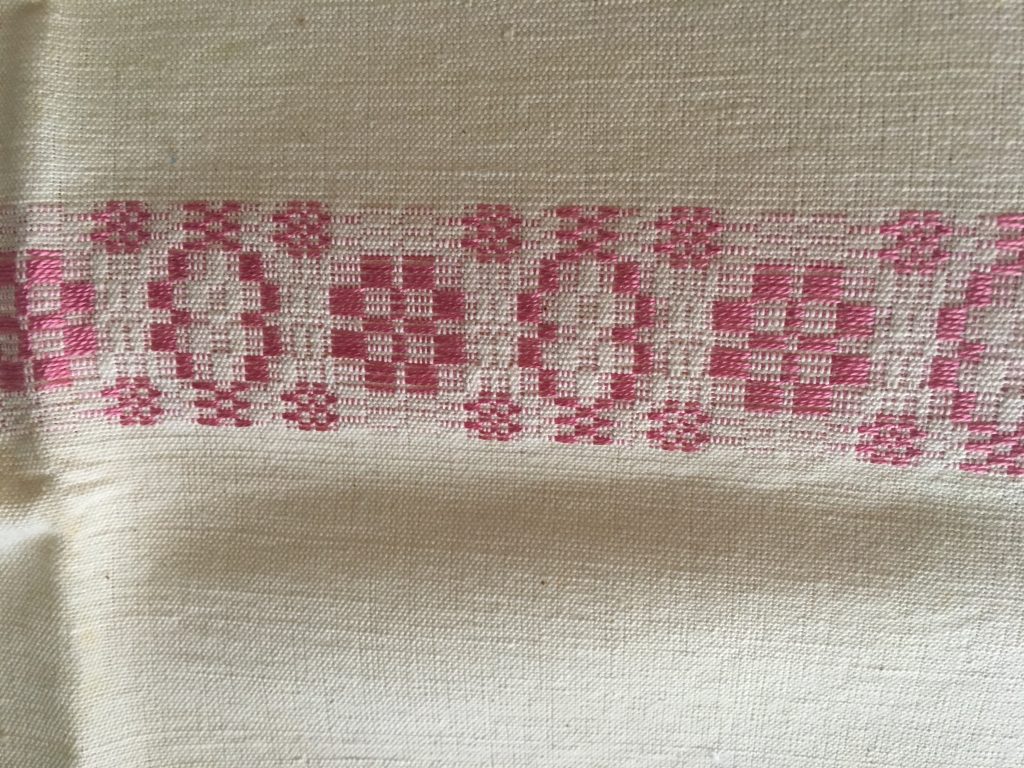
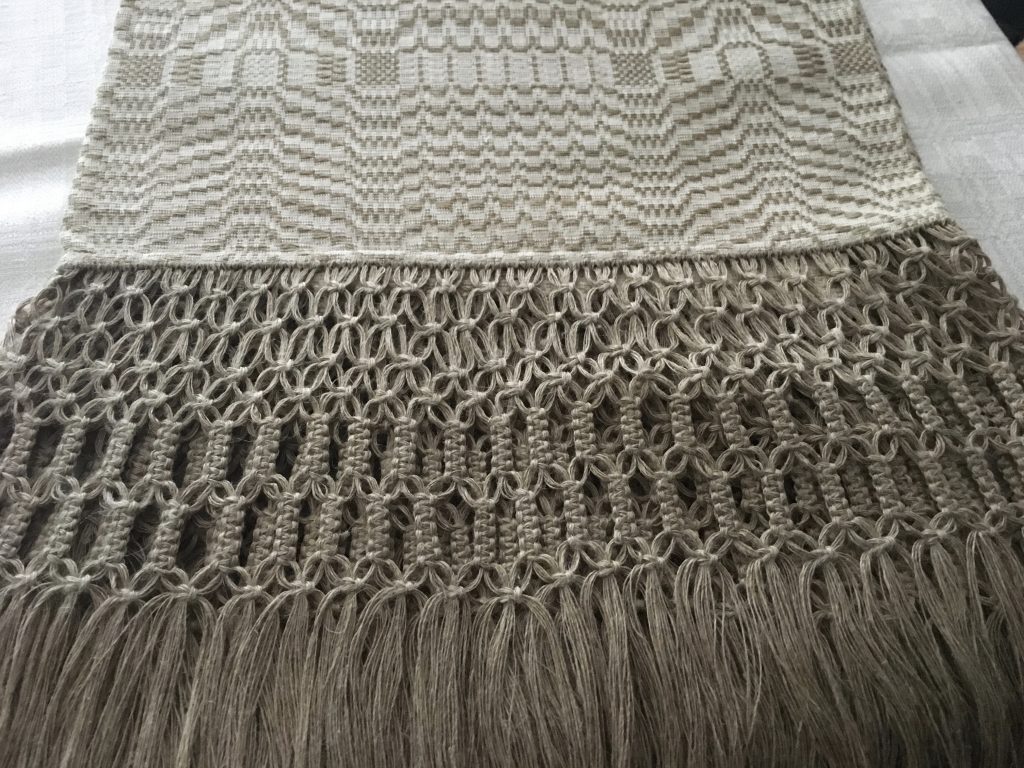
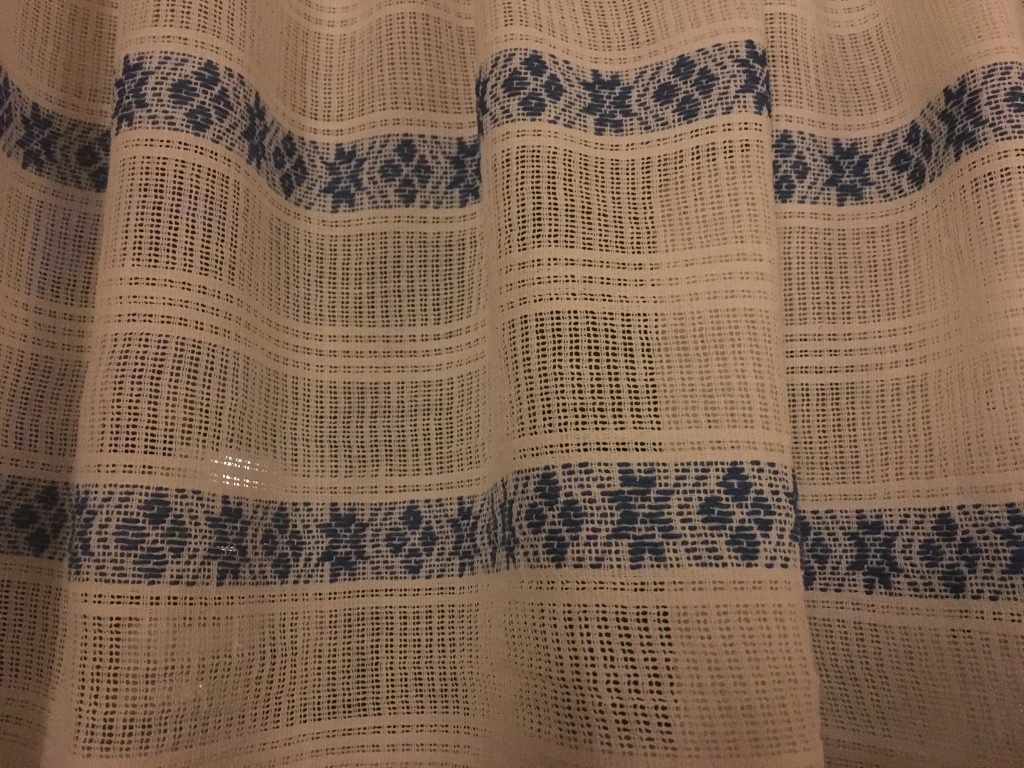
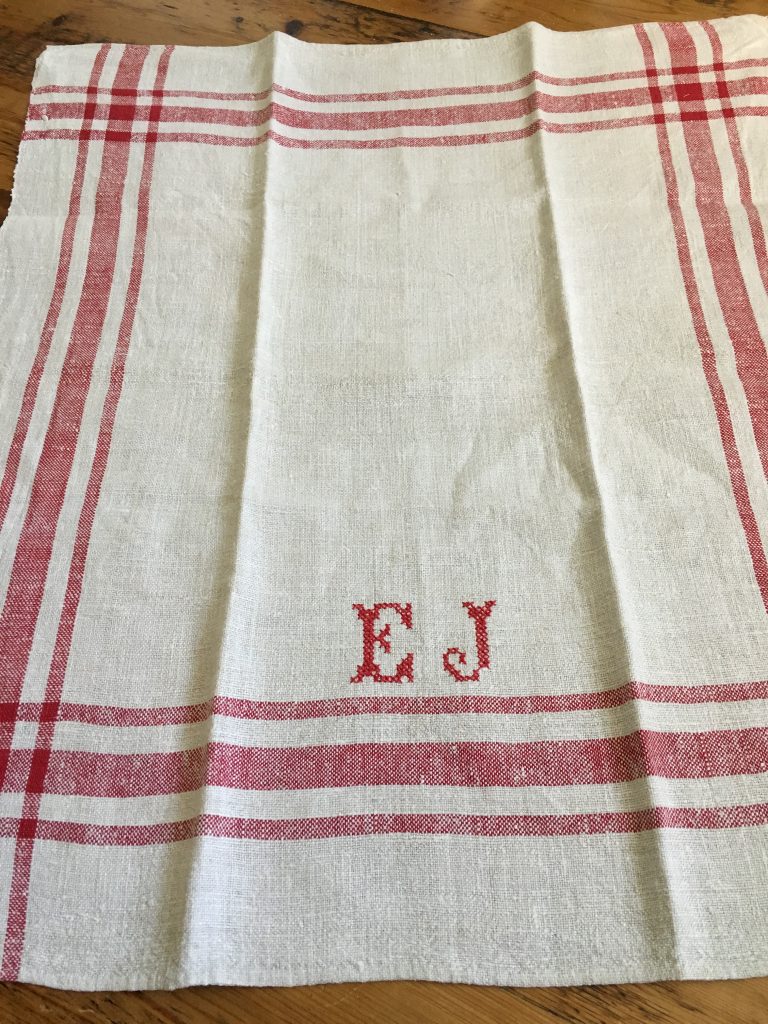
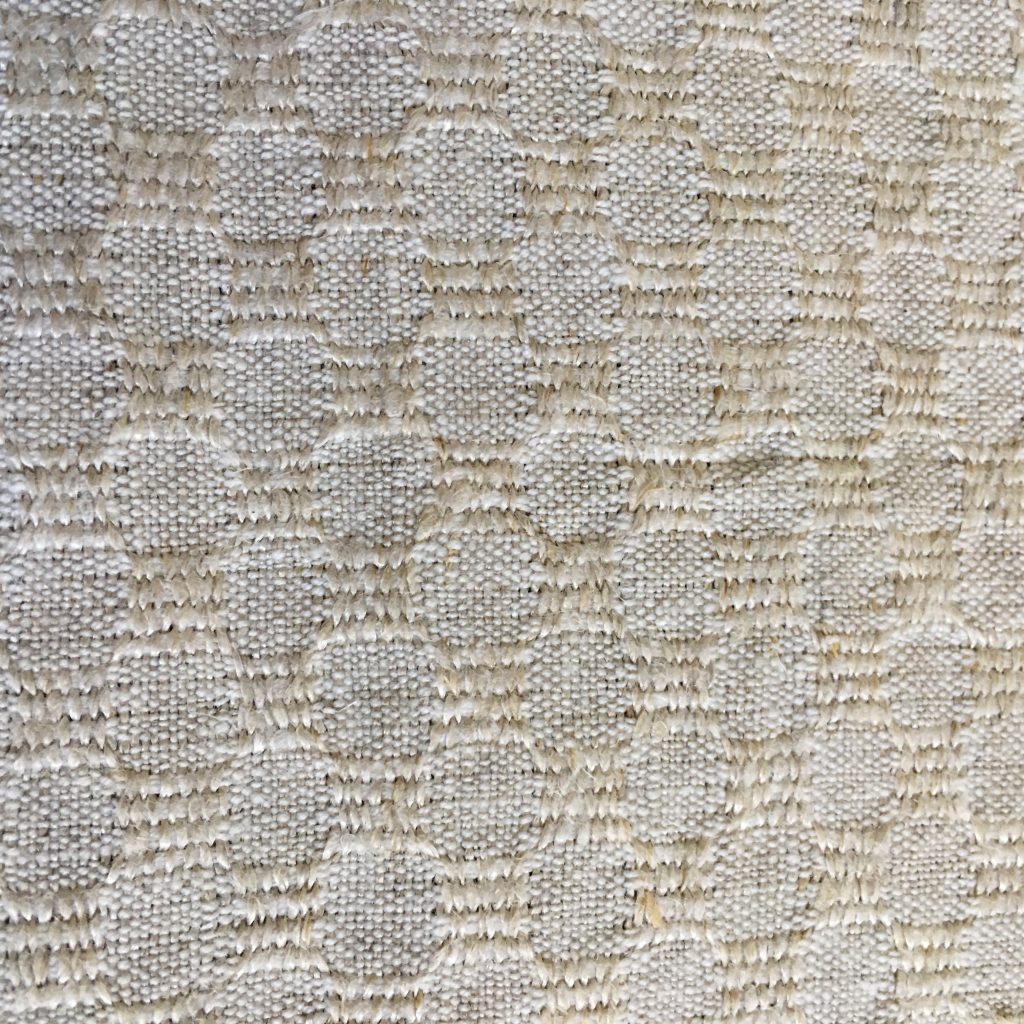
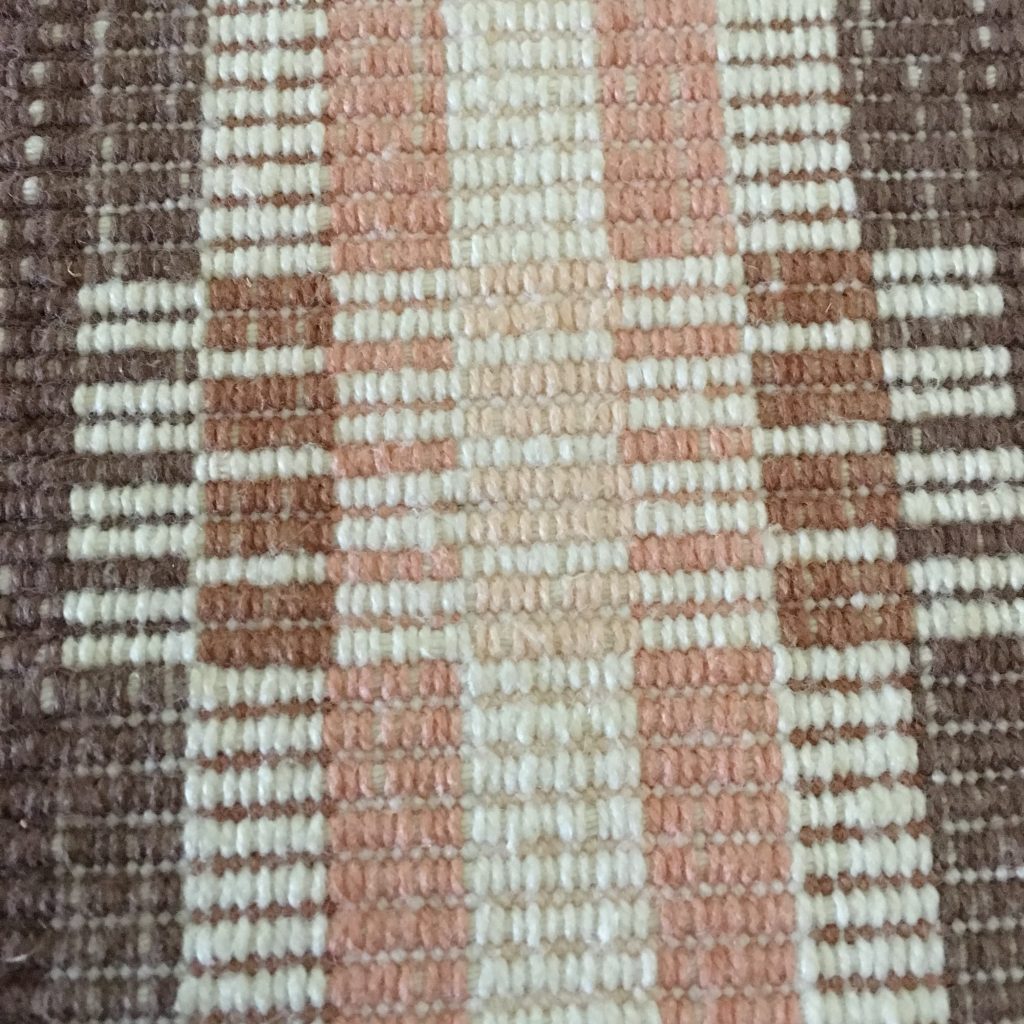 I also have a very fine linen table square that came from somewhere else as it would require more shafts than available on the loom at the farm.
I also have a very fine linen table square that came from somewhere else as it would require more shafts than available on the loom at the farm. 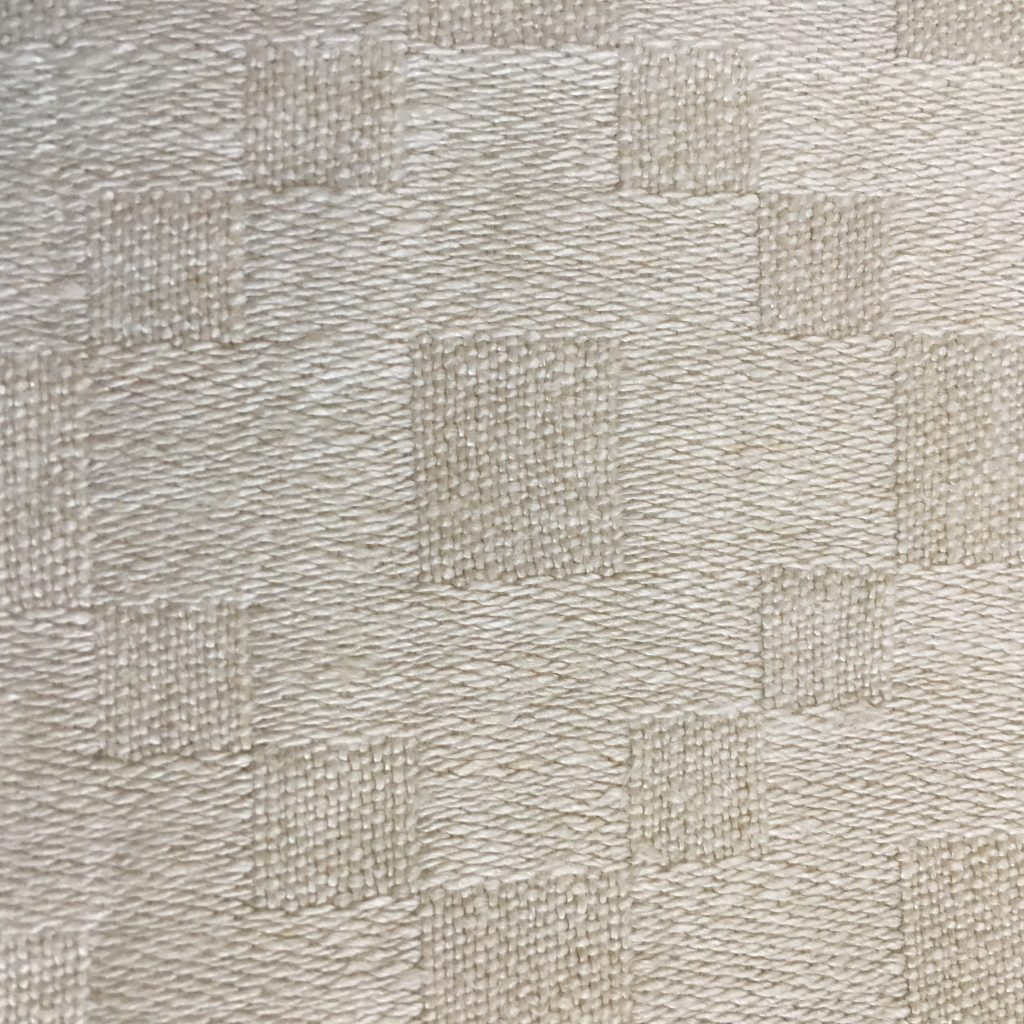
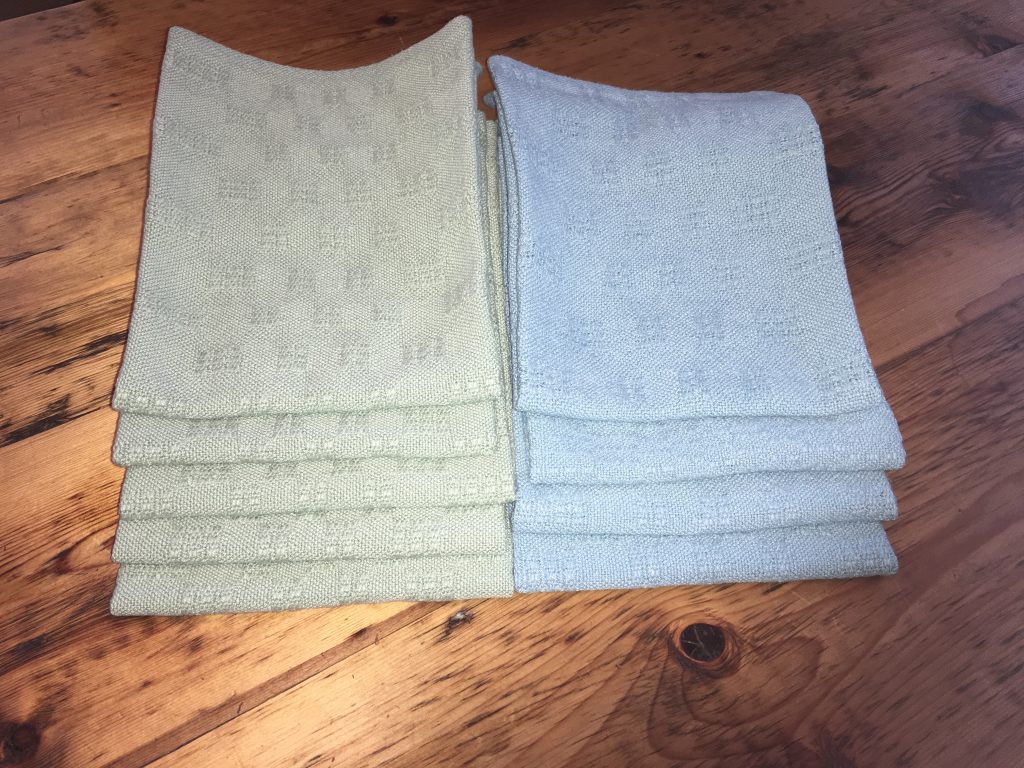
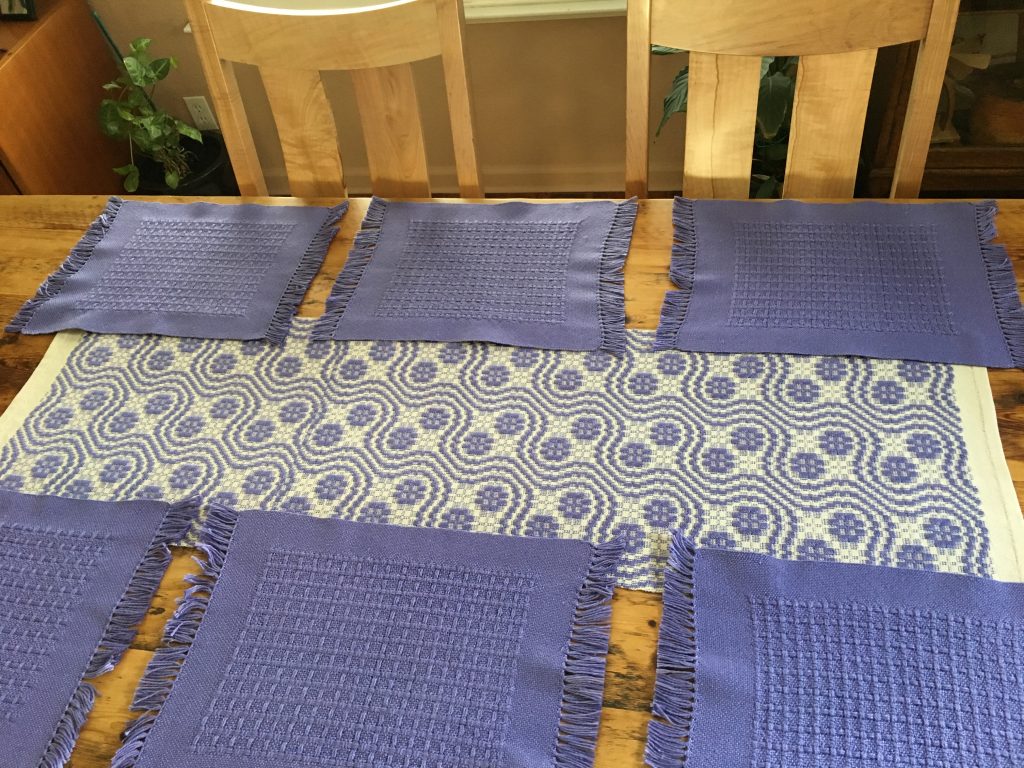
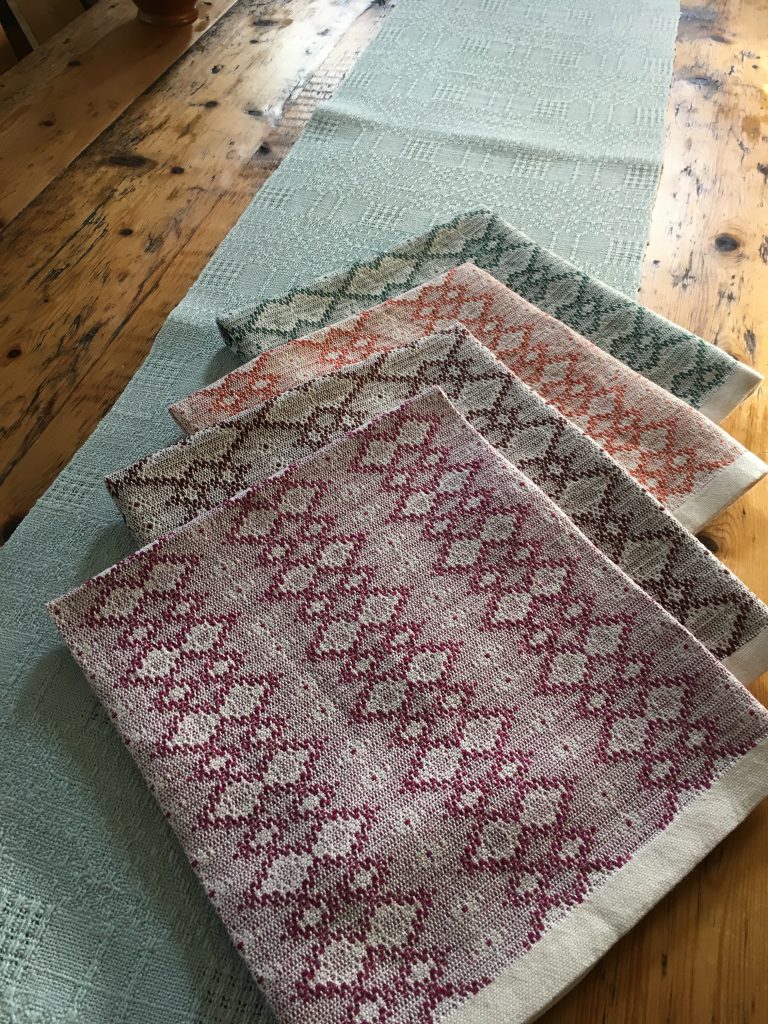
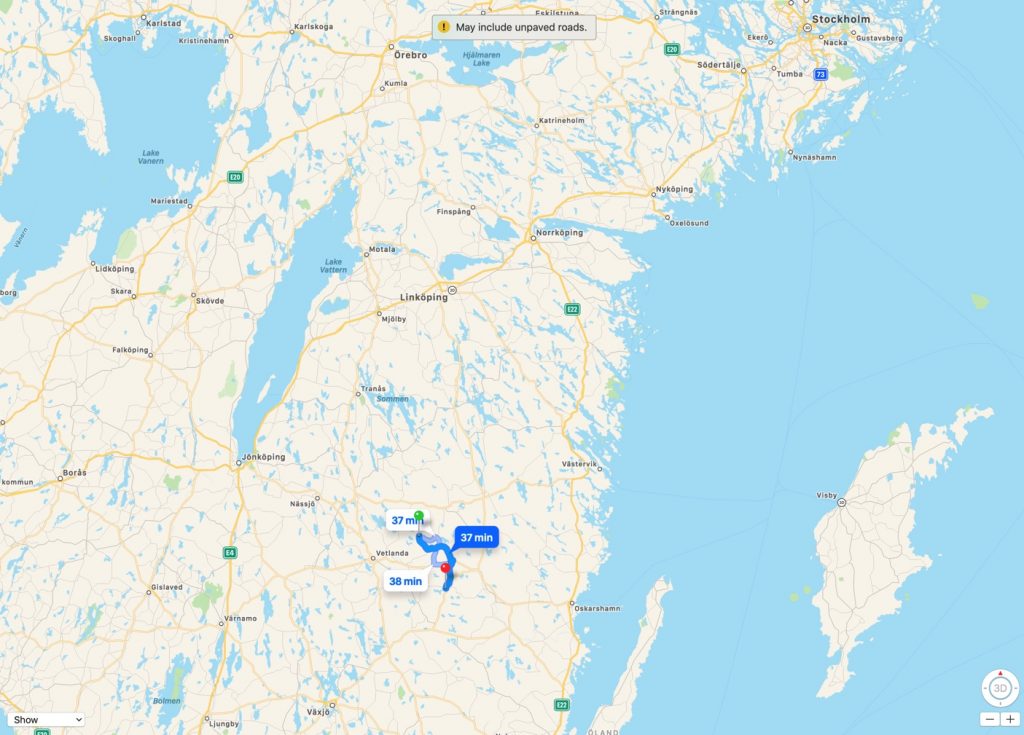
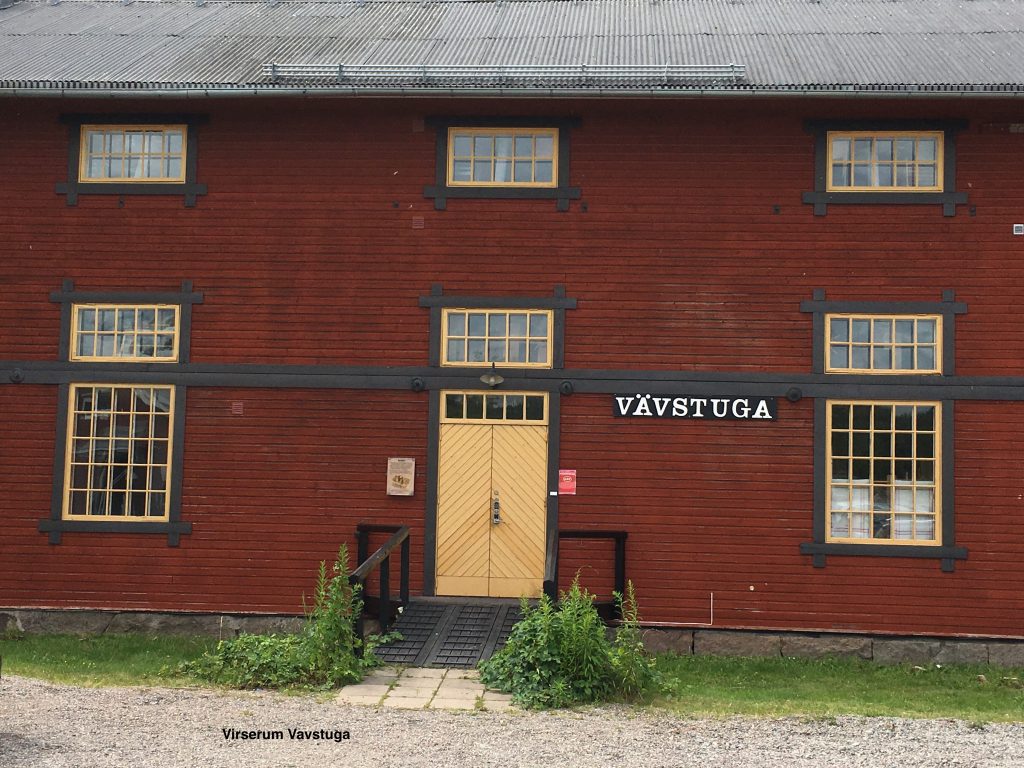
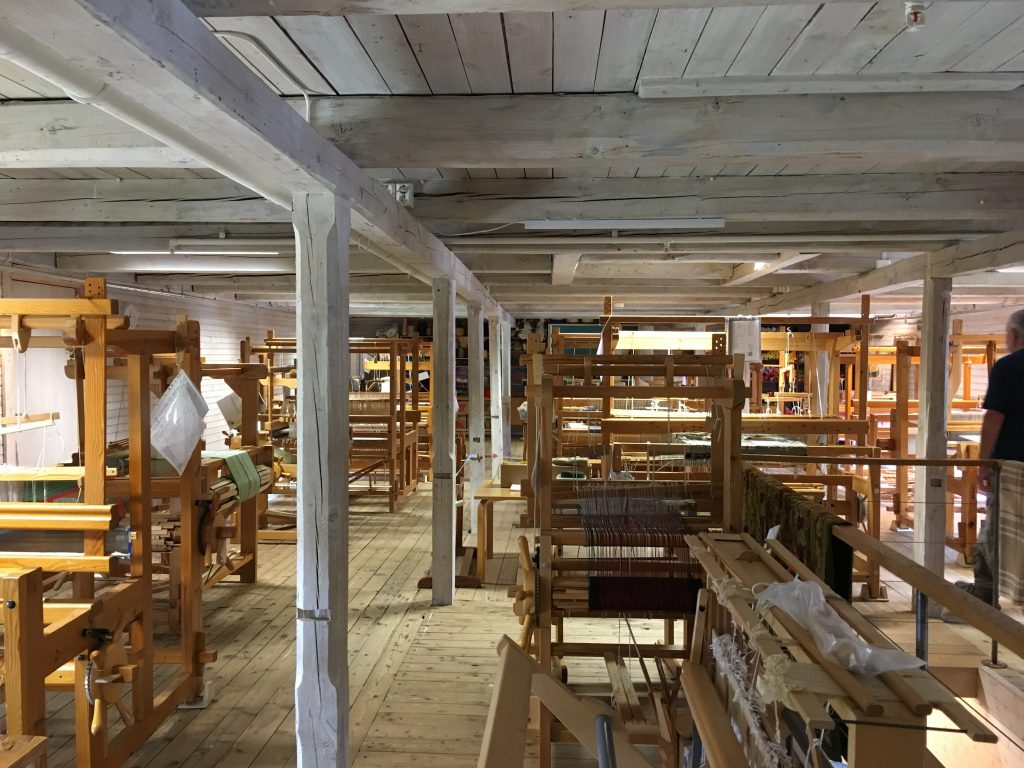
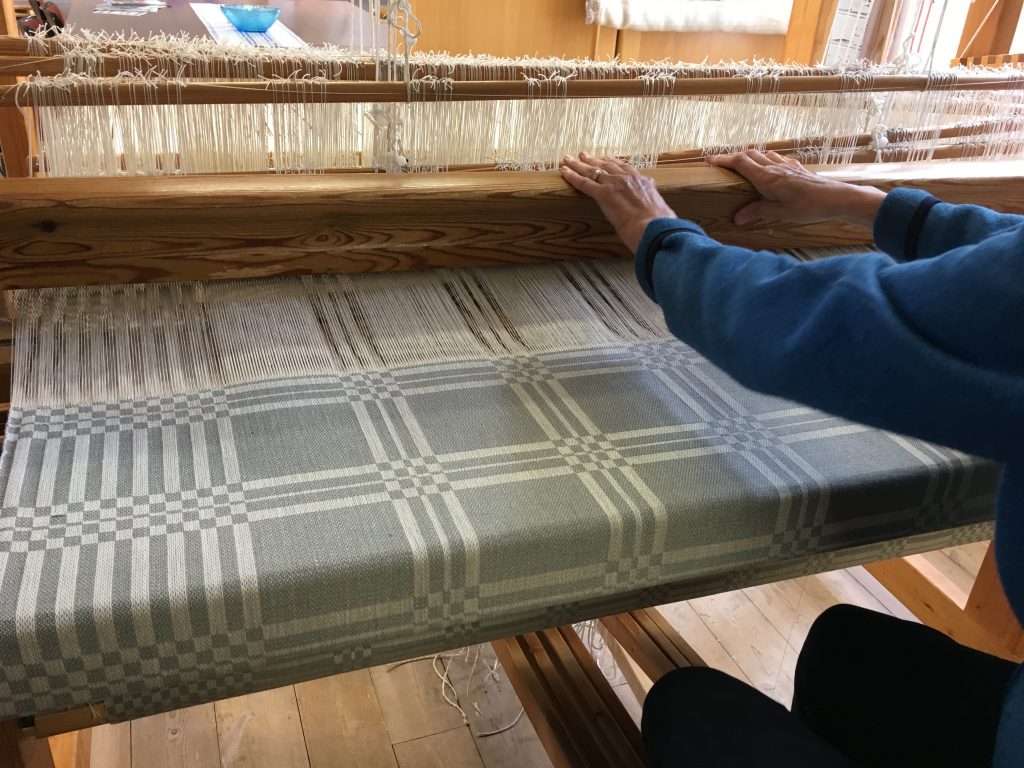
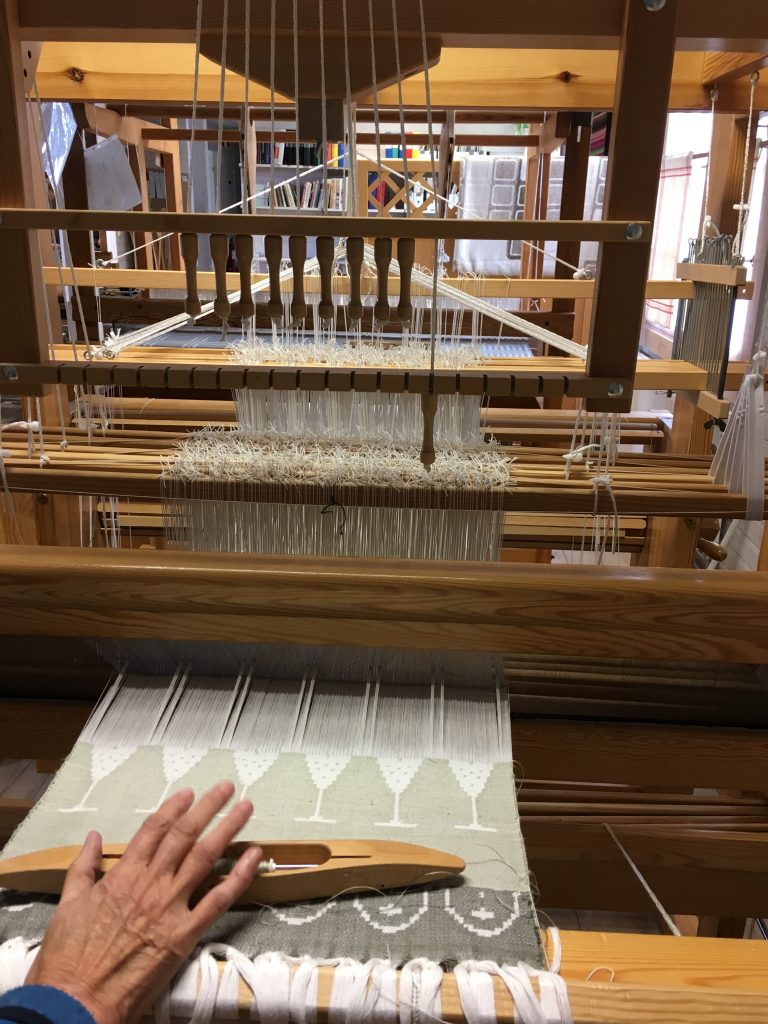
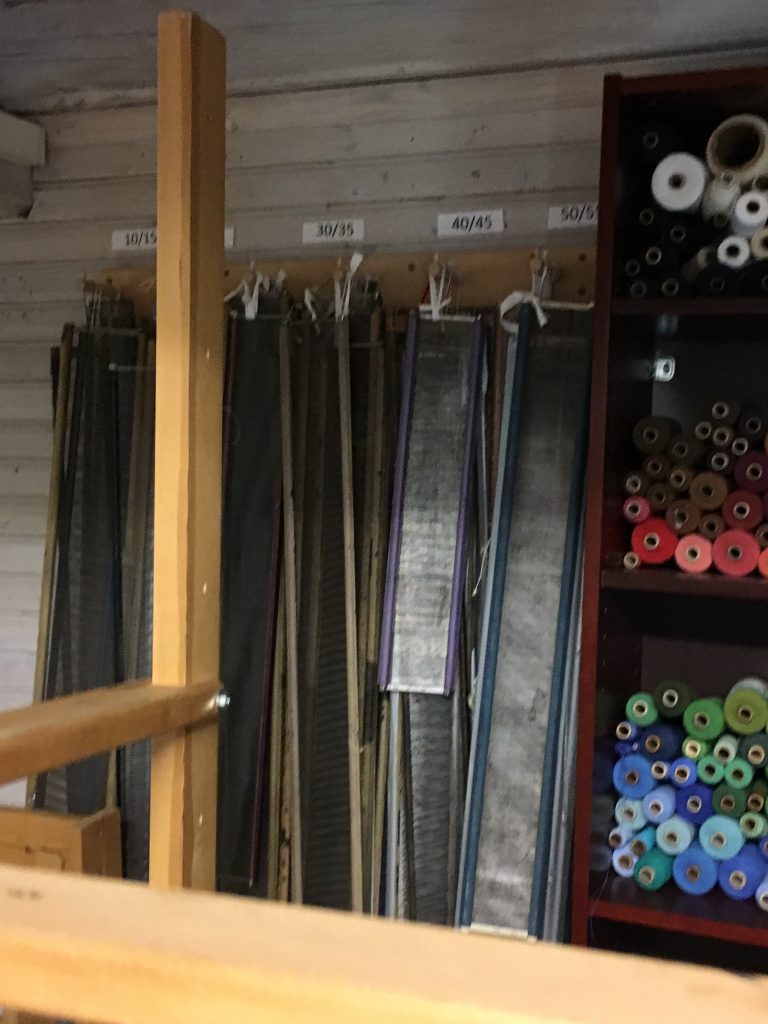
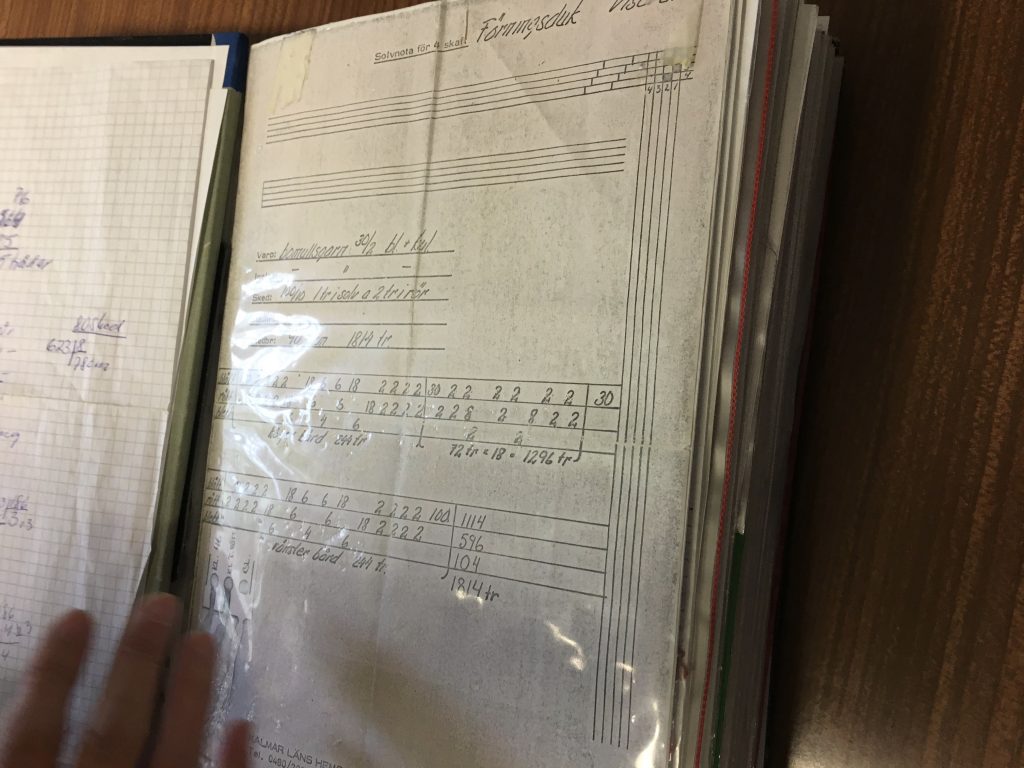
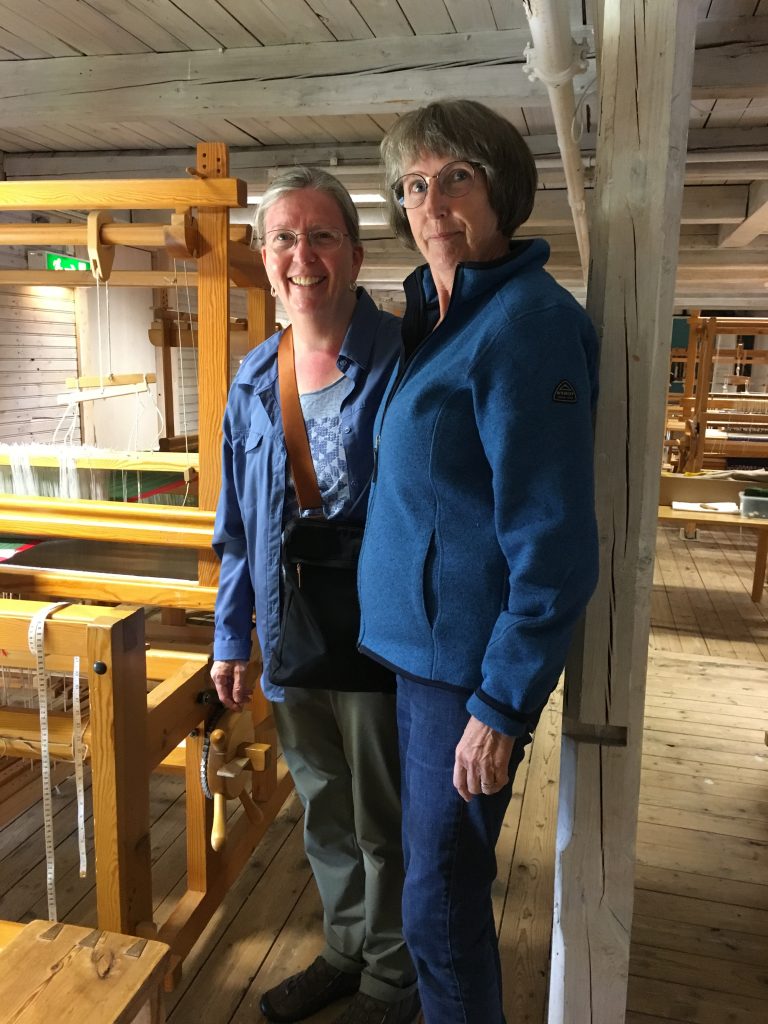
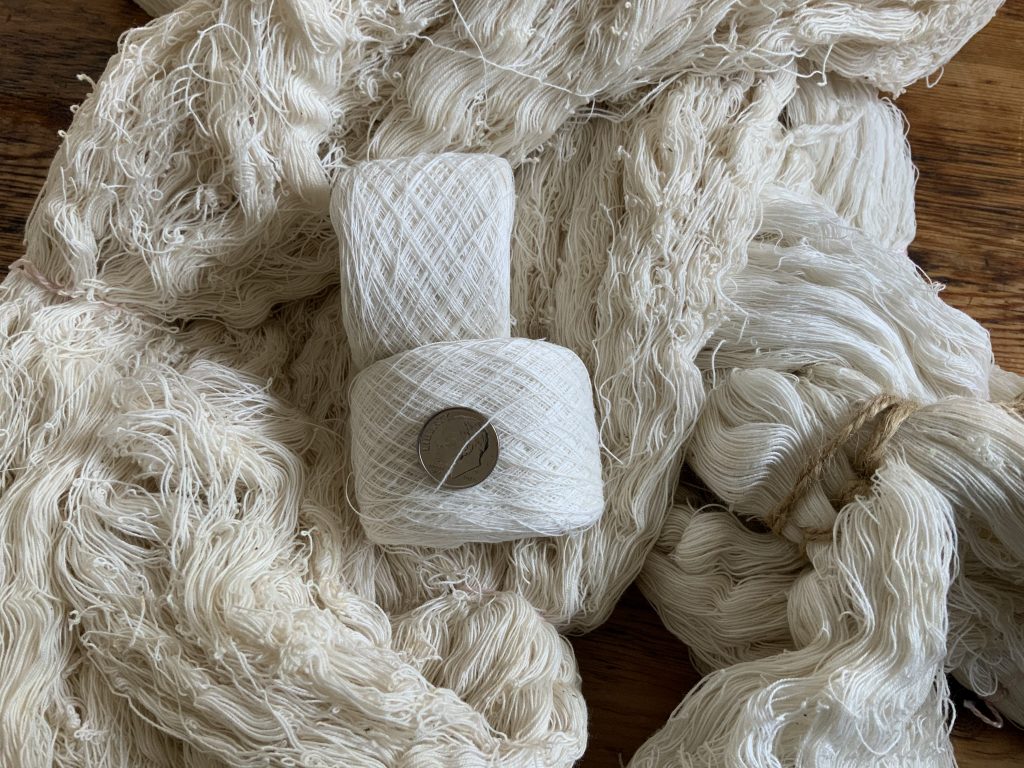
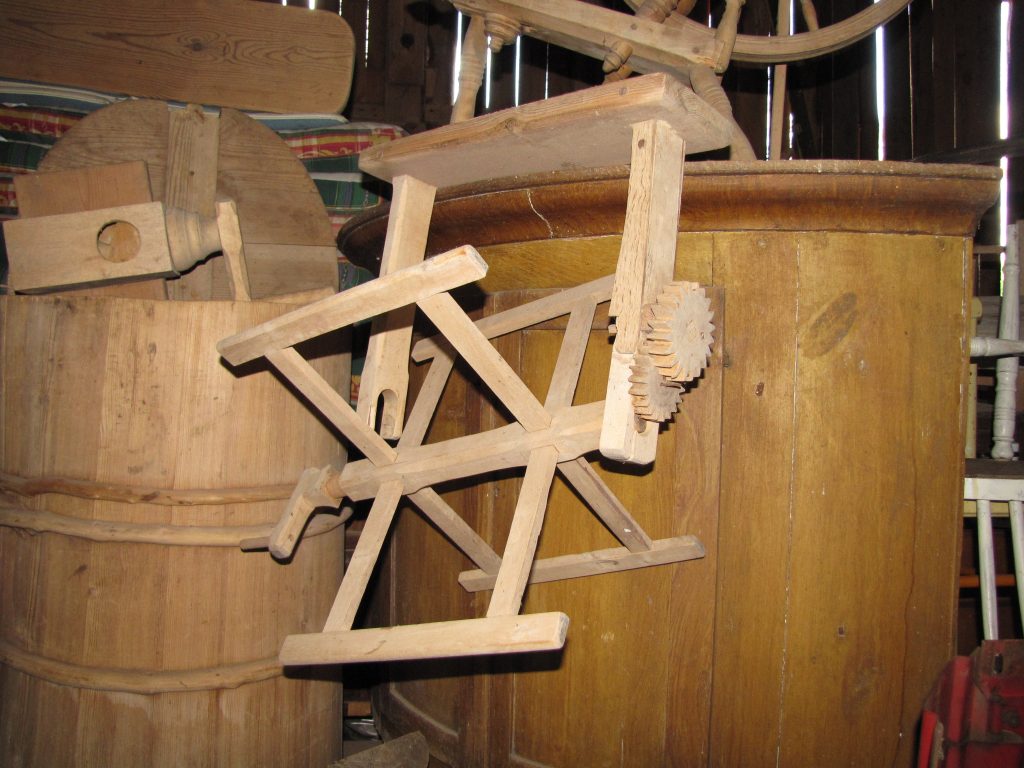

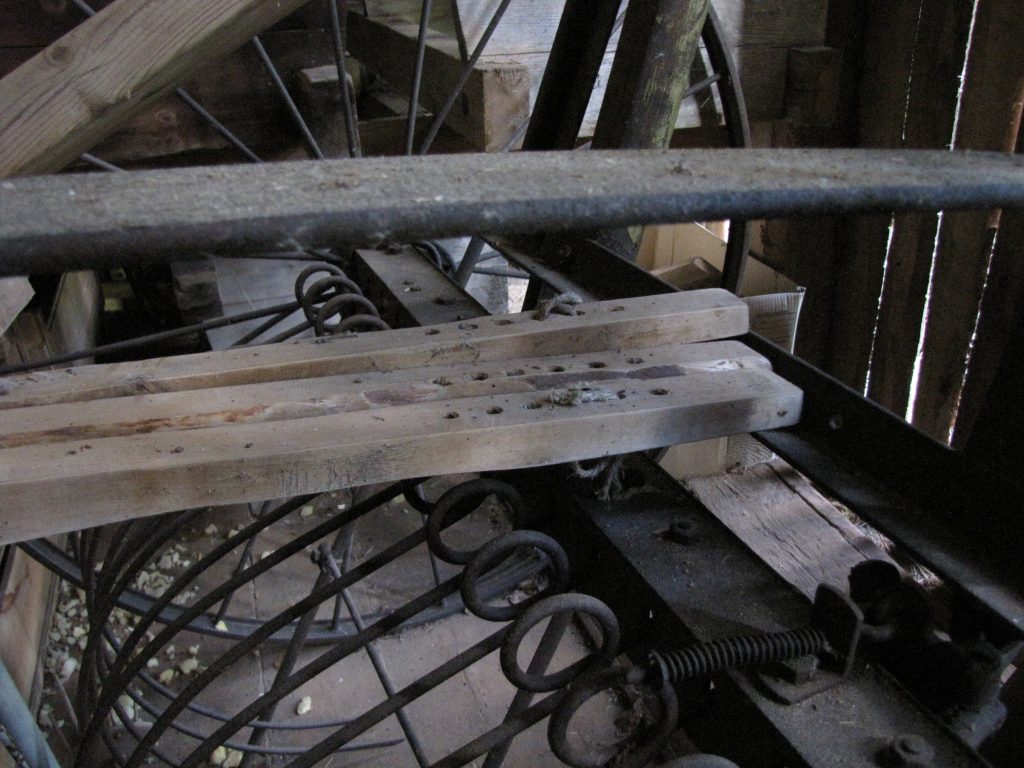
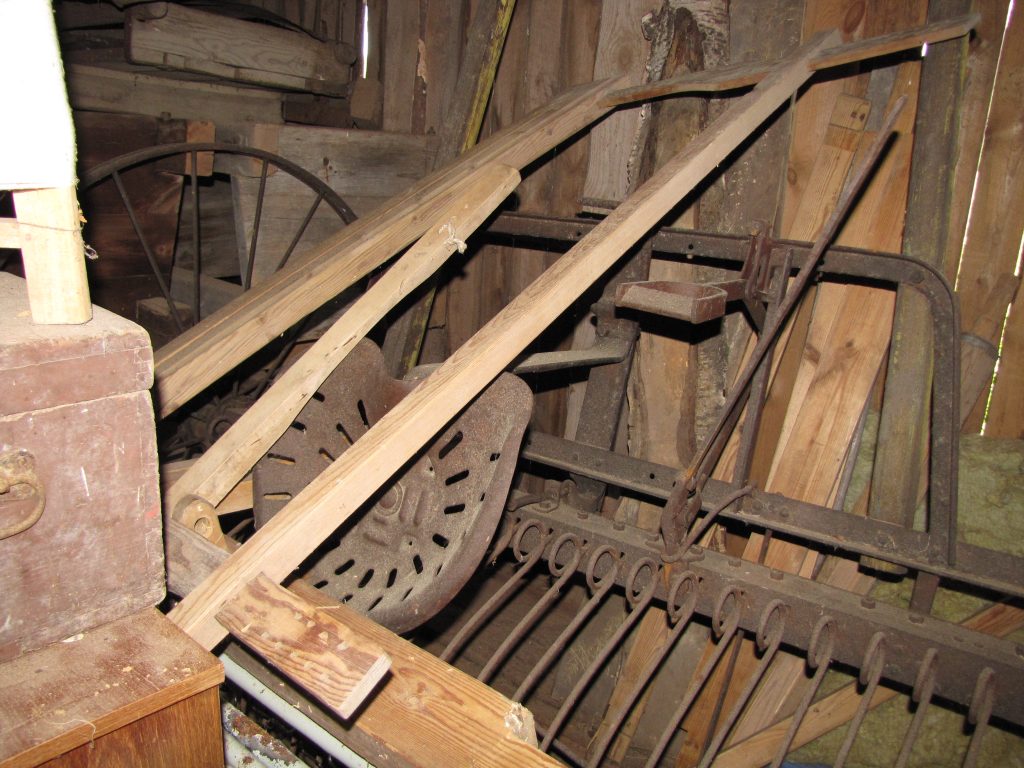
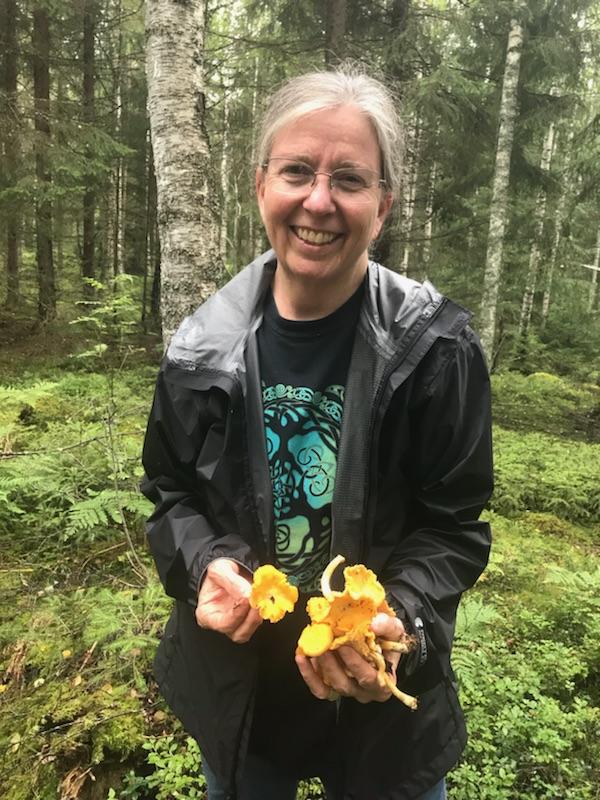 and search the barns. And, amazingly, Michael found all the parts to the loom. I am familiar with Swedish counterbalance looms, but we could not quite figure out how to assemble all the parts and pieces. It just wasn’t fitting together.
and search the barns. And, amazingly, Michael found all the parts to the loom. I am familiar with Swedish counterbalance looms, but we could not quite figure out how to assemble all the parts and pieces. It just wasn’t fitting together.
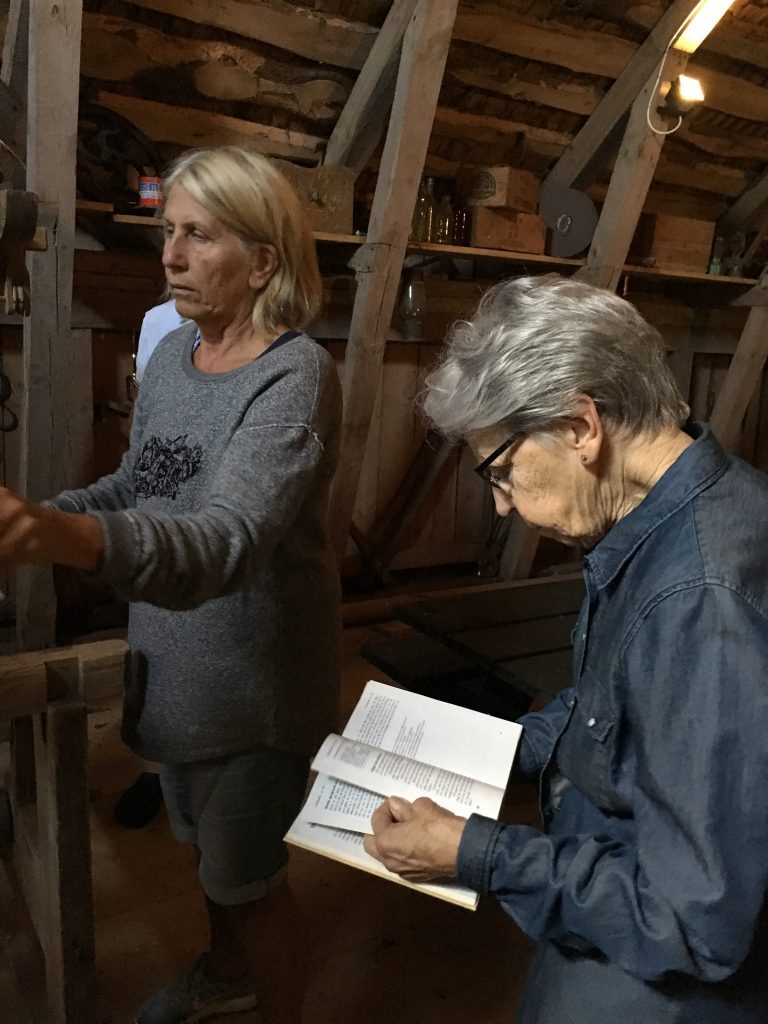
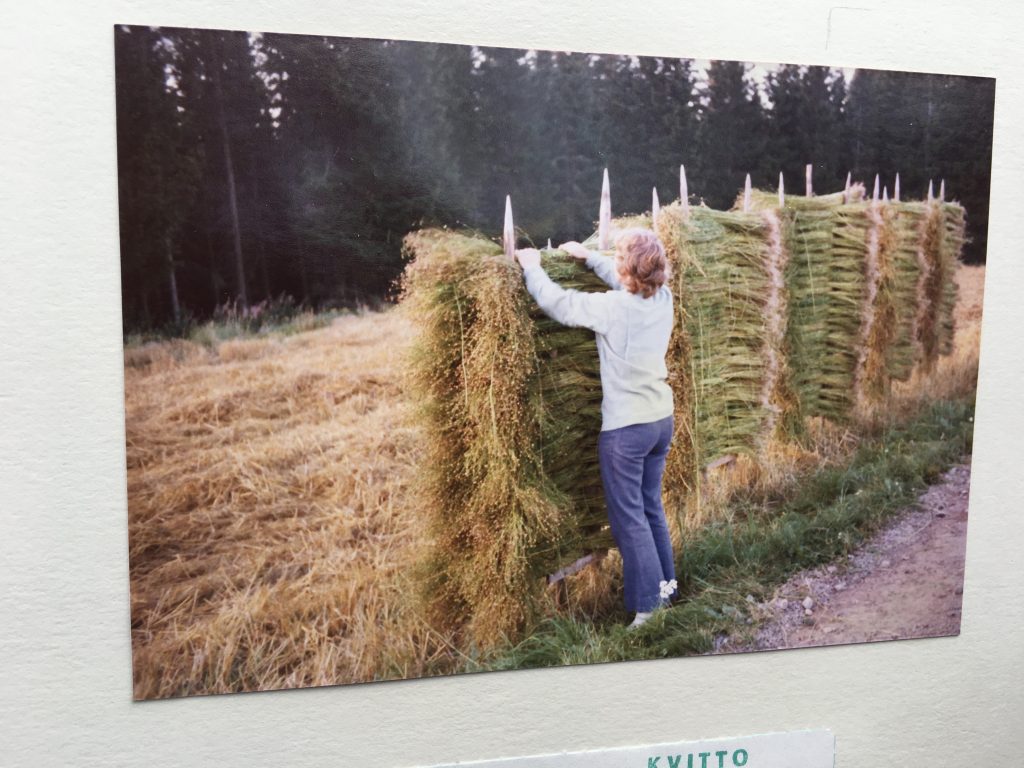 She quickly identified our error in putting together the loom.
She quickly identified our error in putting together the loom. 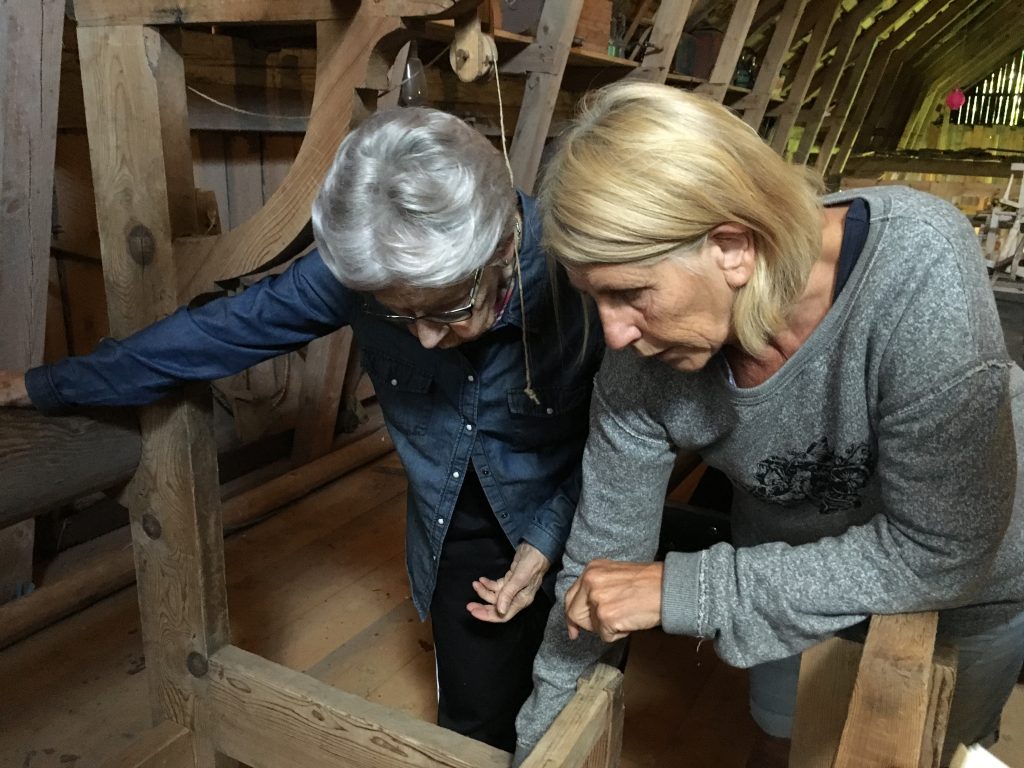
 She is the last living person to have used this loom. Annica intends to learn to weave and use this loom, probably some 140 years after it was built.
She is the last living person to have used this loom. Annica intends to learn to weave and use this loom, probably some 140 years after it was built.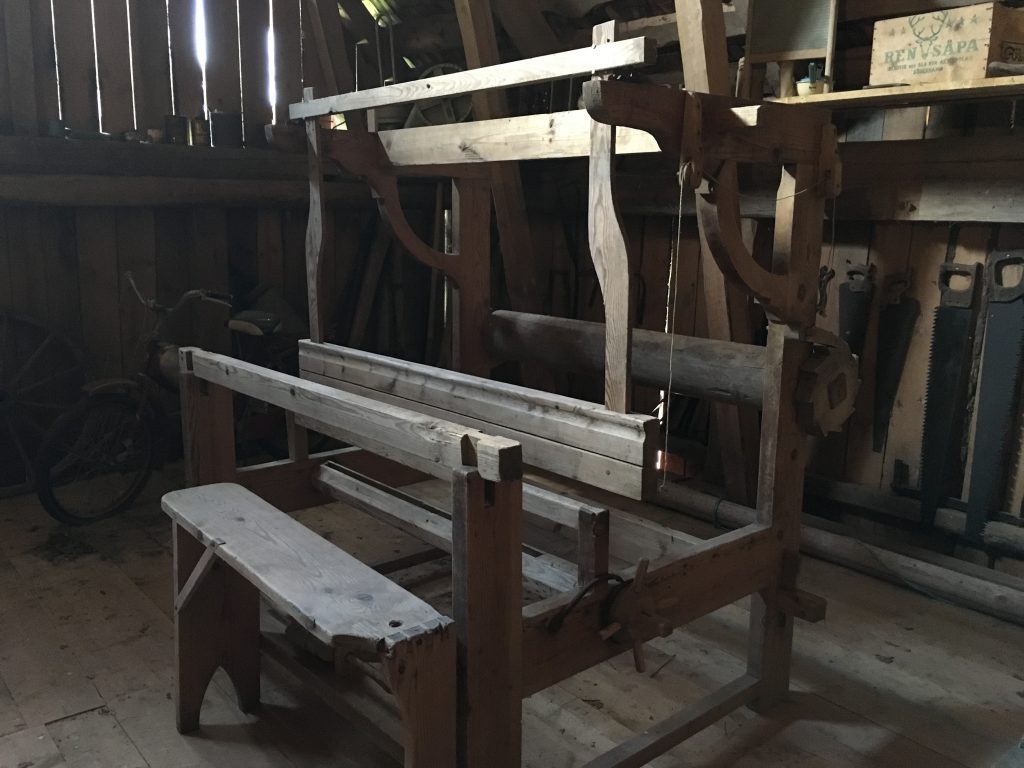
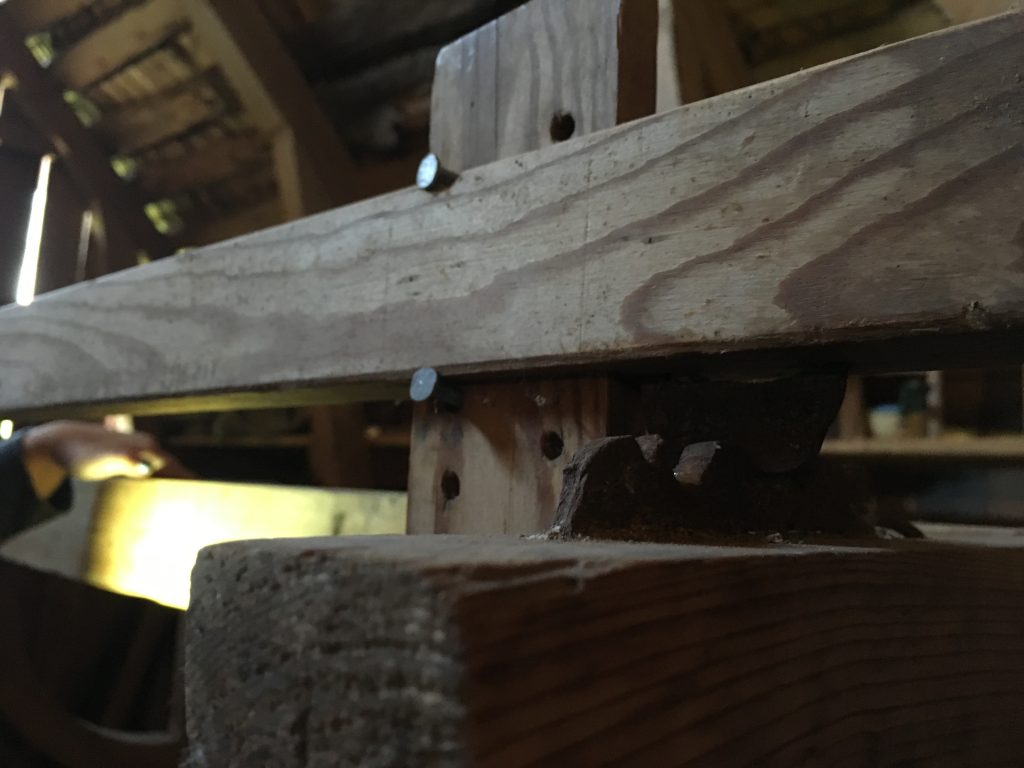 It is amazing to see the hand cut brake and all the mortise and peg work on this work horse of a loom.
It is amazing to see the hand cut brake and all the mortise and peg work on this work horse of a loom. 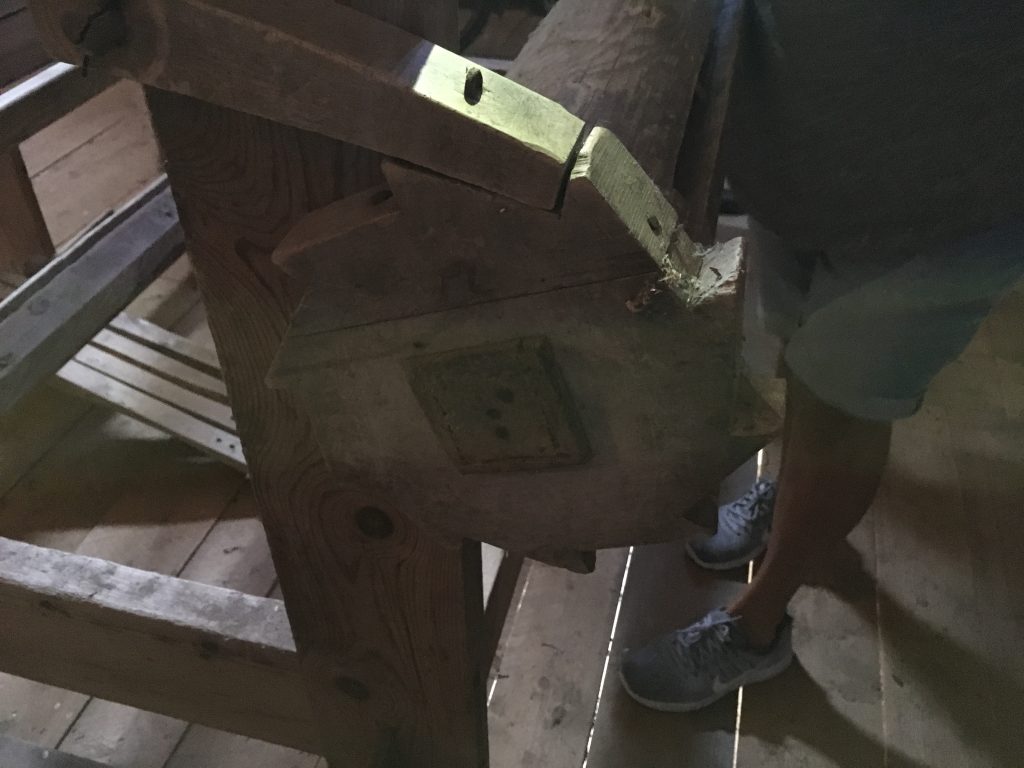 The warp beam is of a hexagon shape, done with a draw knife, and the beam features a chiseled crevice. Initially we thought the bench to be broken, with only three legs remaining. However, as Margaretha quickly pointed out, it is a swing bench and is attached on the left side of the loom. Nothing broken about it!
The warp beam is of a hexagon shape, done with a draw knife, and the beam features a chiseled crevice. Initially we thought the bench to be broken, with only three legs remaining. However, as Margaretha quickly pointed out, it is a swing bench and is attached on the left side of the loom. Nothing broken about it!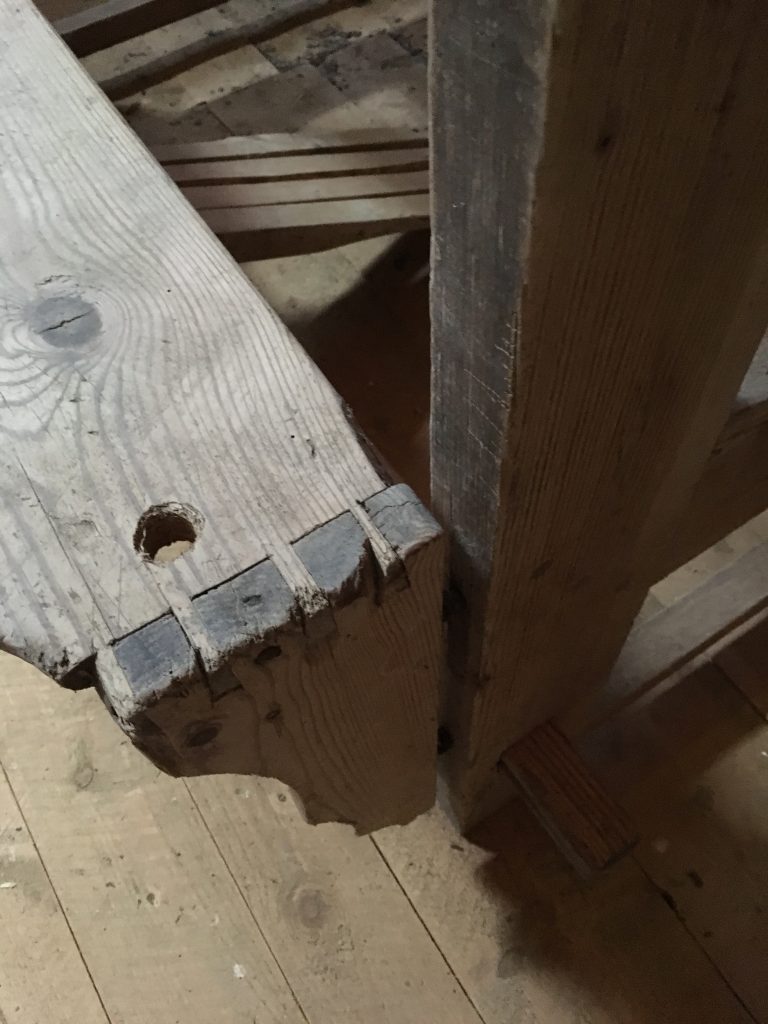
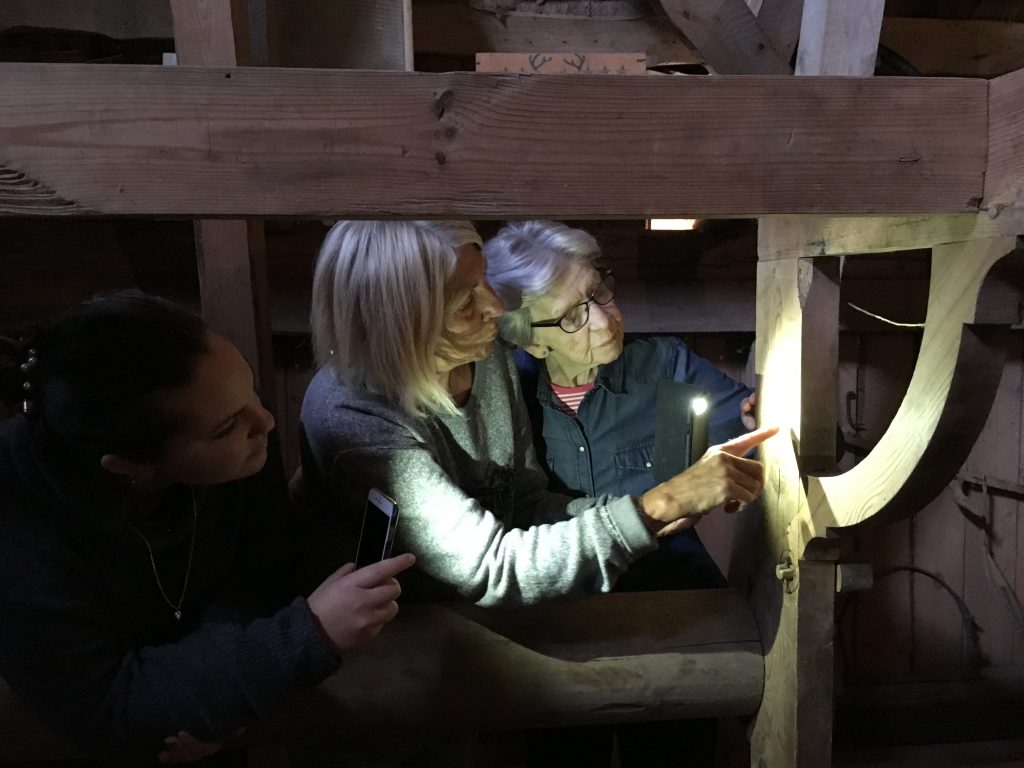 Margaretha was so pleased that the grandson of her mother's brother was able to reassemble the loom.
Margaretha was so pleased that the grandson of her mother's brother was able to reassemble the loom.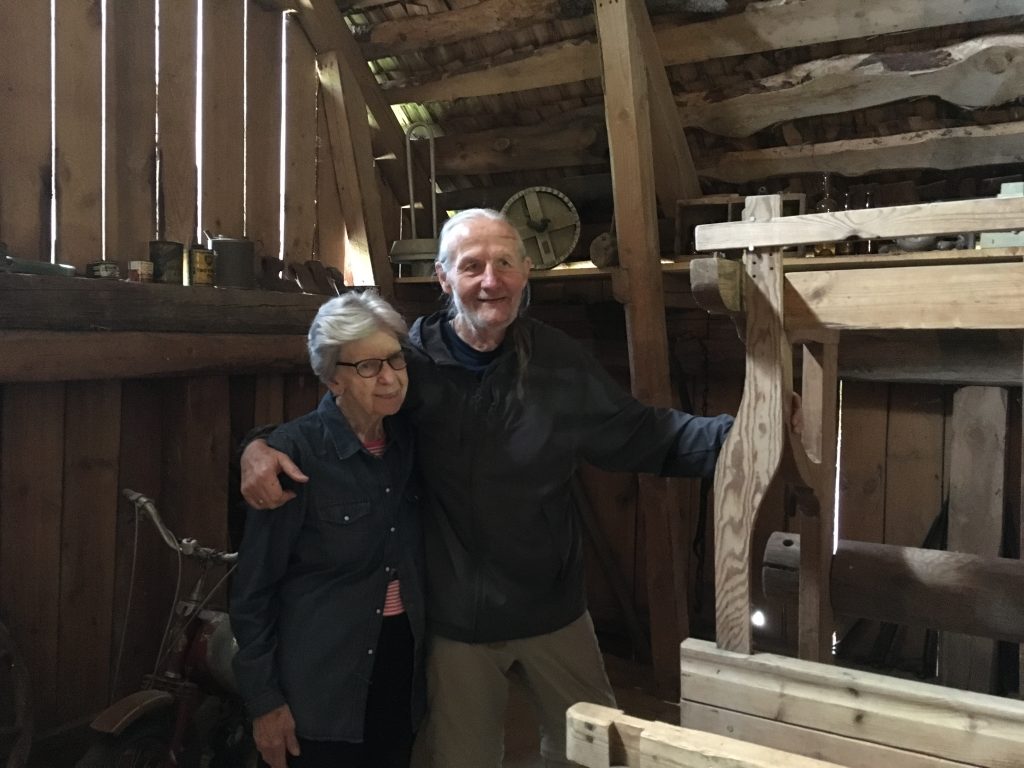
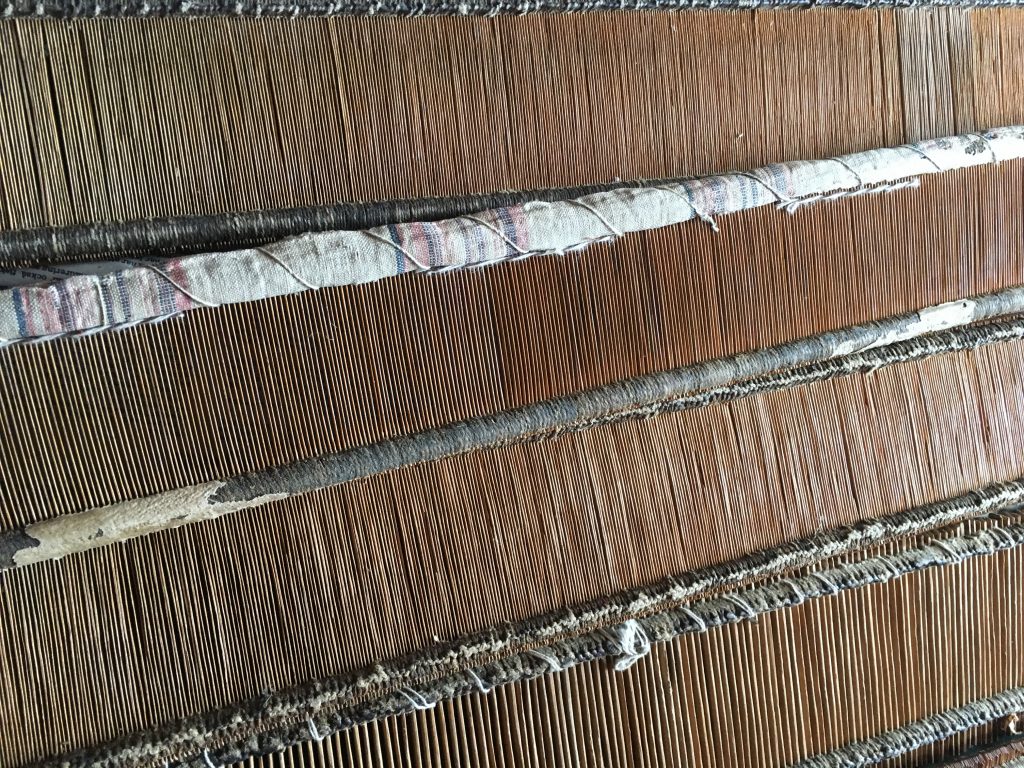
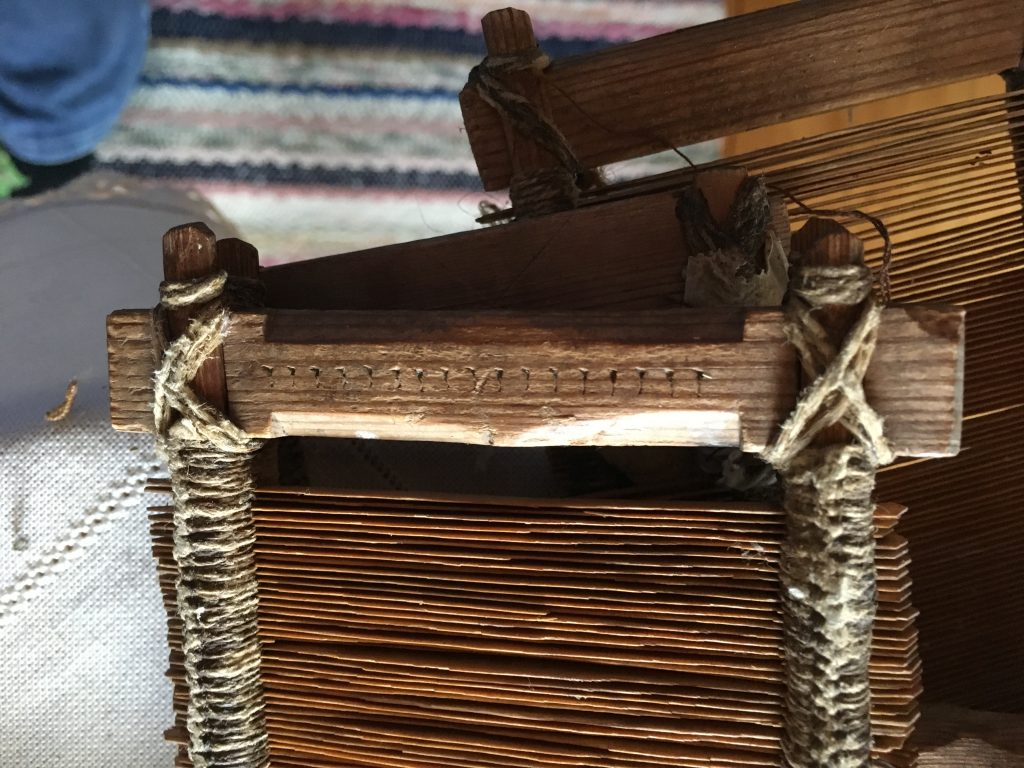 There is much work to be done to restore this loom. The cousins plan to repair a barn roof and remodel the kitchen and we live on the other side of the world. So, how and when loom restoration happens is anyone’s guess right now but in my mind’s eye, I can already see Annica weaving on the loom that her mother, her mother’s mother, and her mother’s mother’s-mother once used.
There is much work to be done to restore this loom. The cousins plan to repair a barn roof and remodel the kitchen and we live on the other side of the world. So, how and when loom restoration happens is anyone’s guess right now but in my mind’s eye, I can already see Annica weaving on the loom that her mother, her mother’s mother, and her mother’s mother’s-mother once used.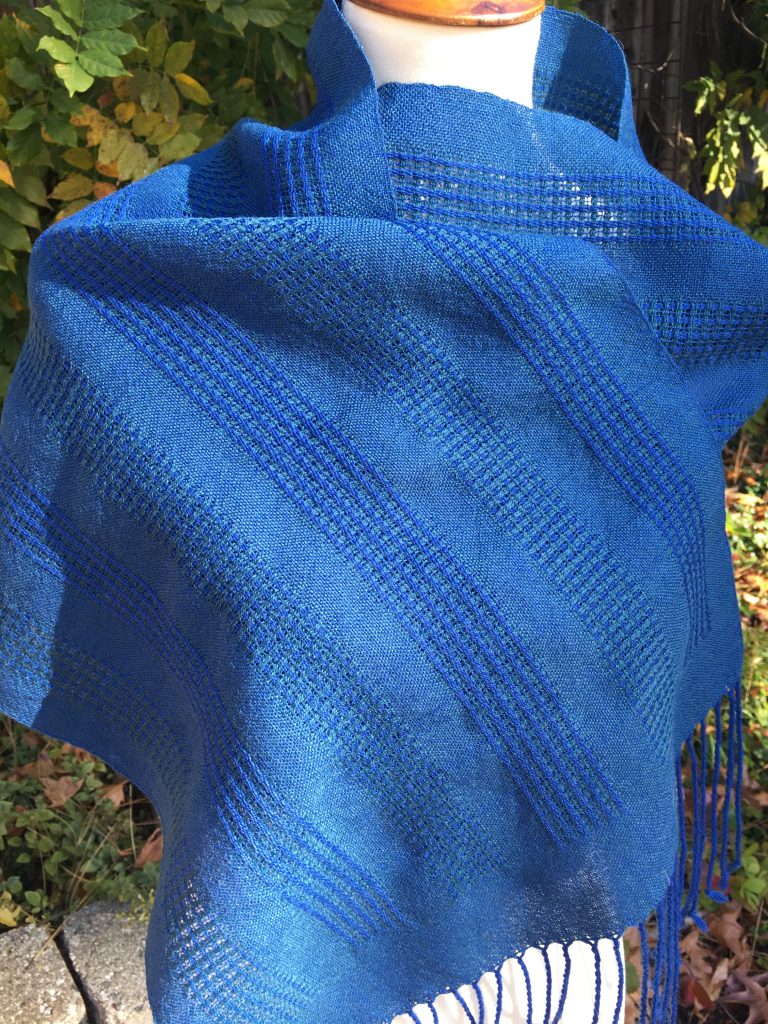
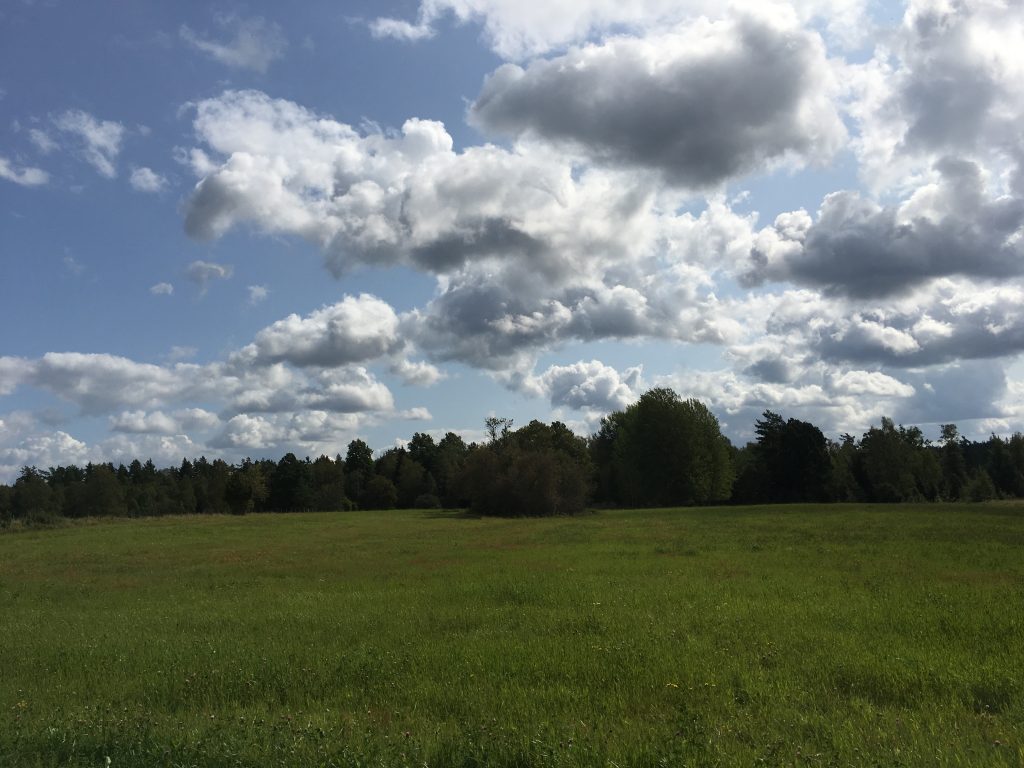
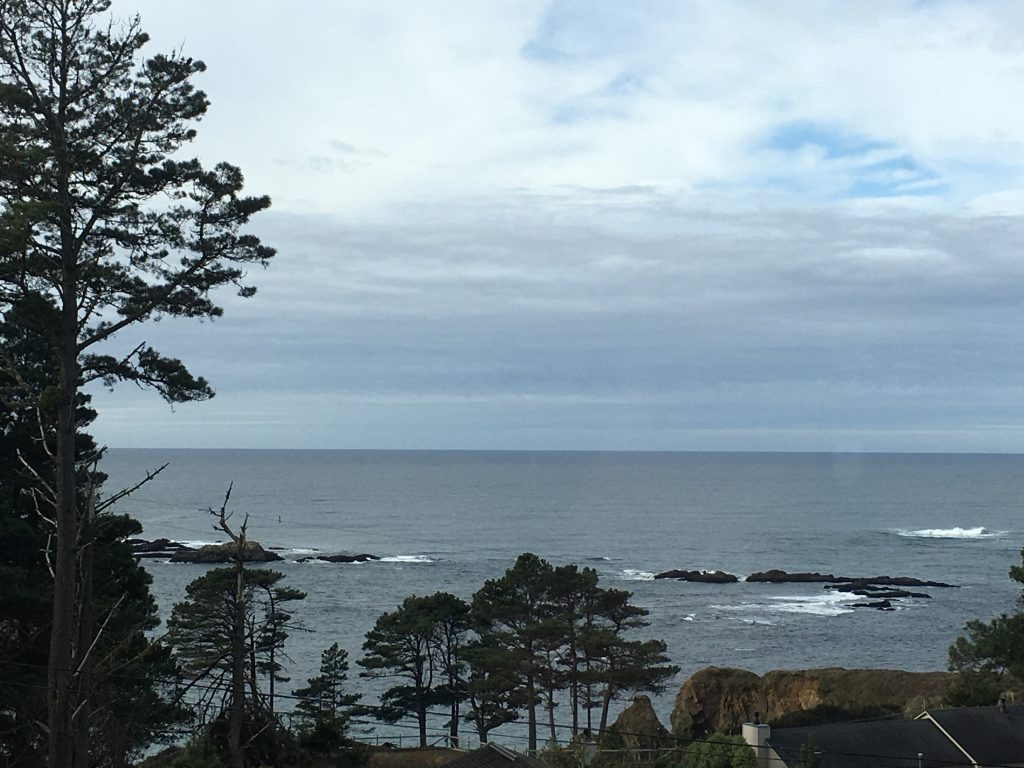
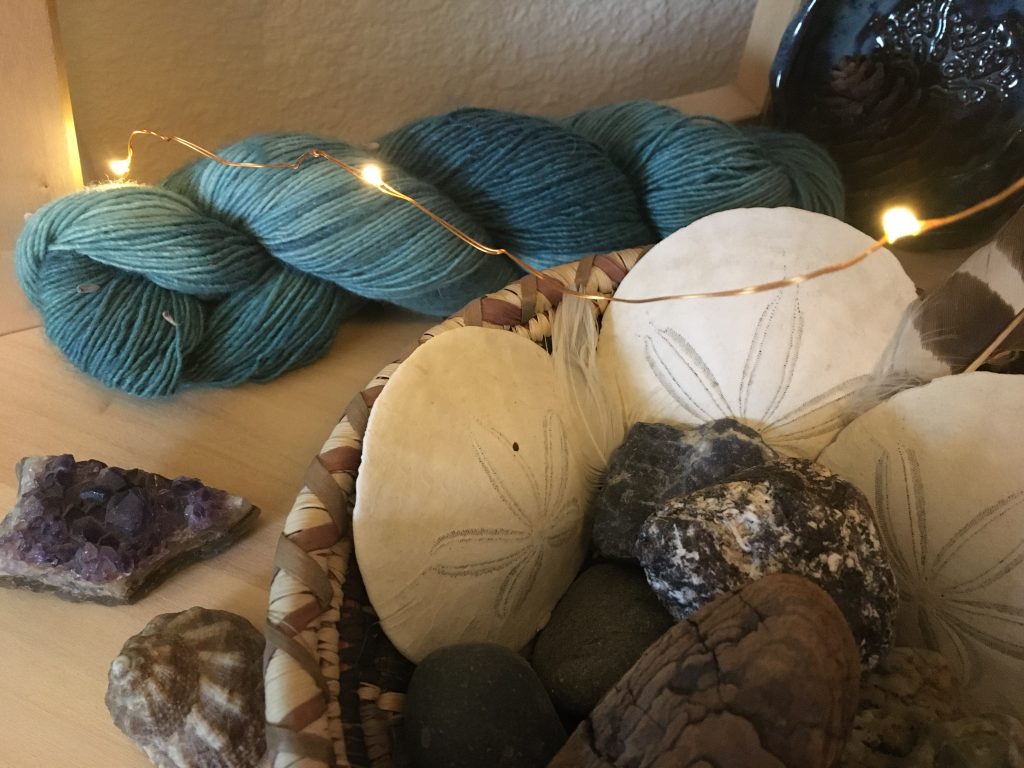
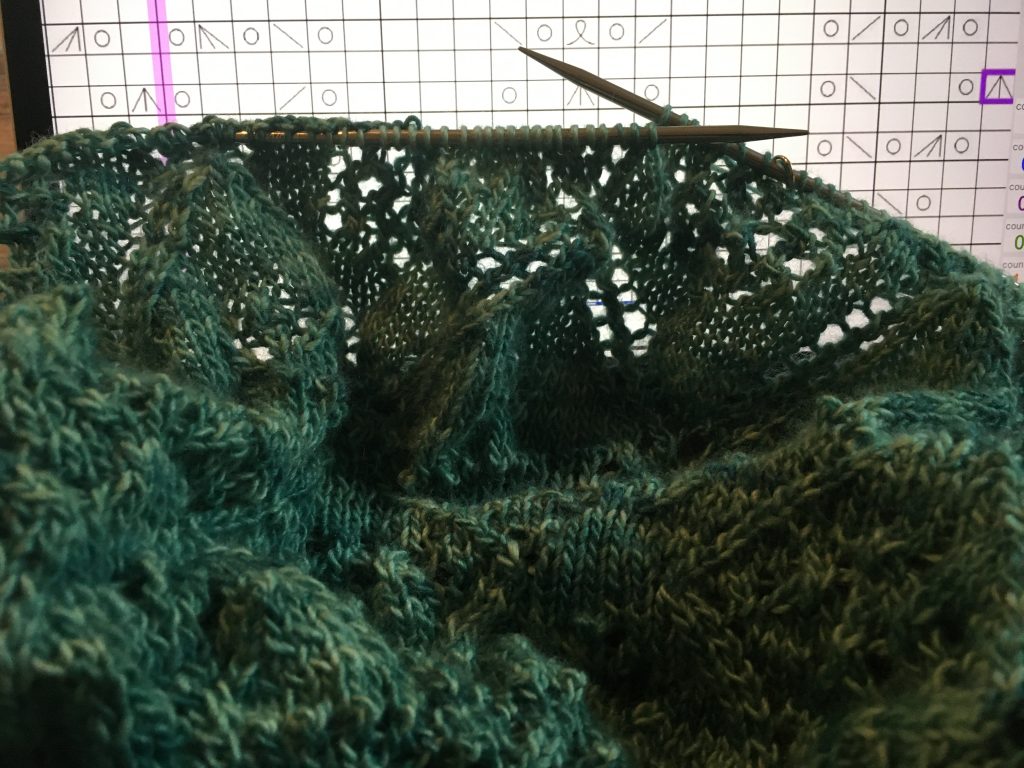
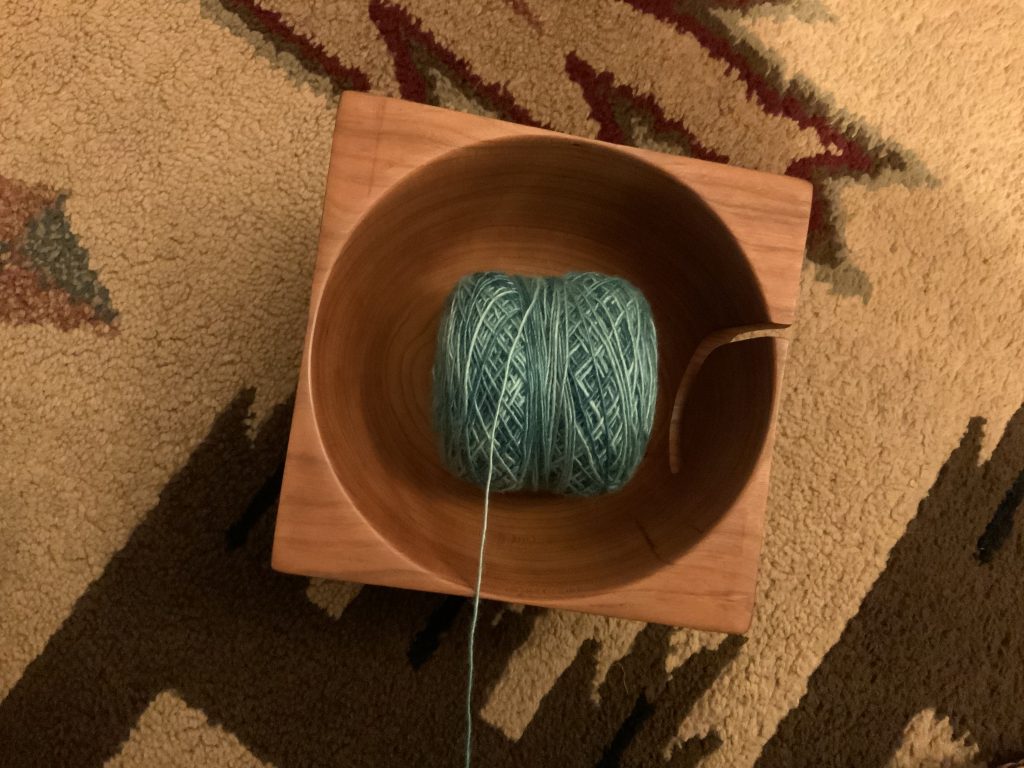
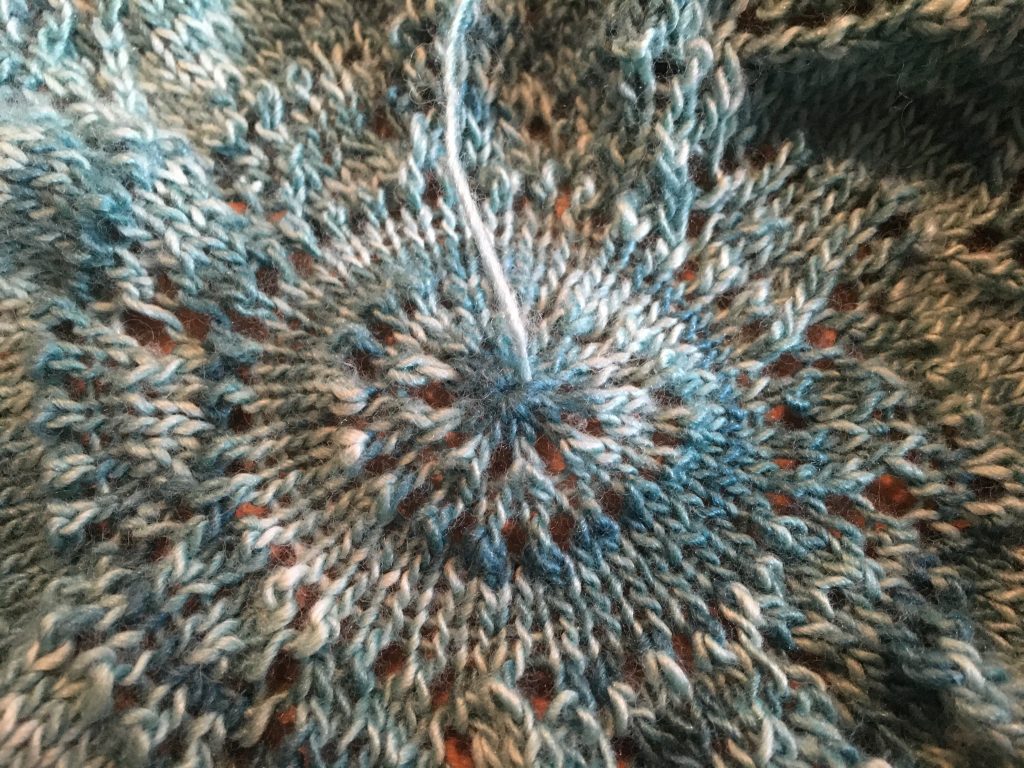
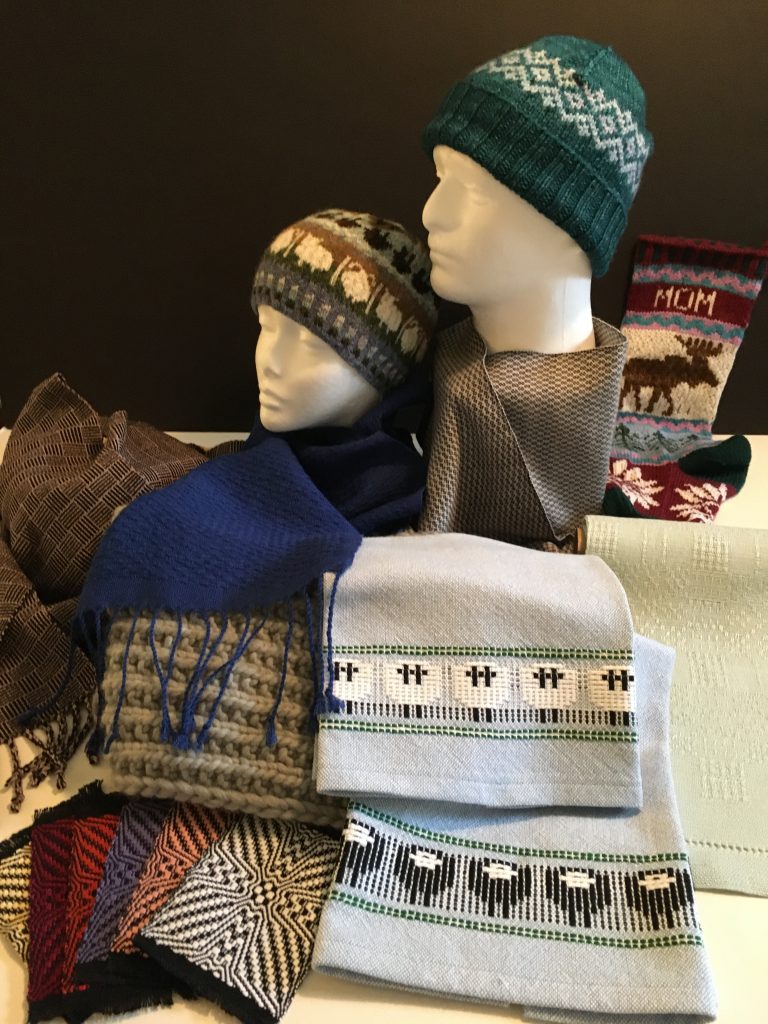
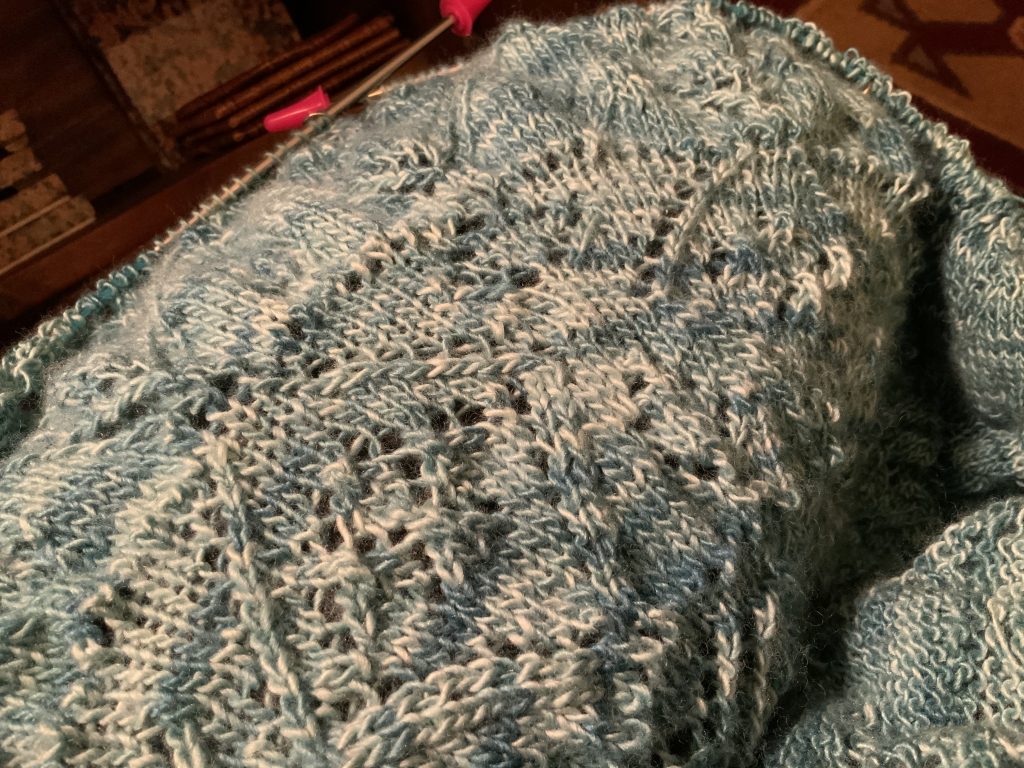
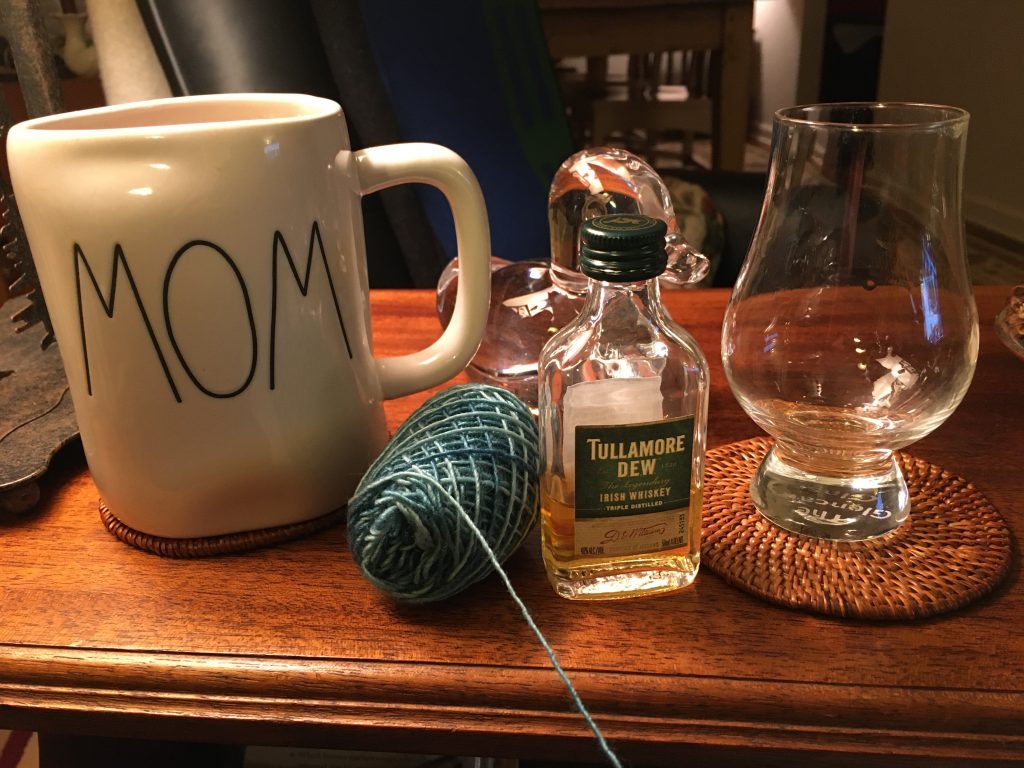
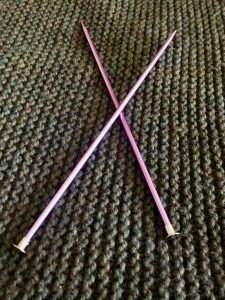 They are pink and were given to me by a neighbor who taught me to knit when I was in grade school. When I returned to knitting in the late 80s and early 90s, I complained about buying two sets of needles for one project. At that point I was buying the least expensive bamboo needles. Budget was always an issue in those days and the cost of needles was something to consider, especially given the cost of yarn, parking, housing, child care …
They are pink and were given to me by a neighbor who taught me to knit when I was in grade school. When I returned to knitting in the late 80s and early 90s, I complained about buying two sets of needles for one project. At that point I was buying the least expensive bamboo needles. Budget was always an issue in those days and the cost of needles was something to consider, especially given the cost of yarn, parking, housing, child care …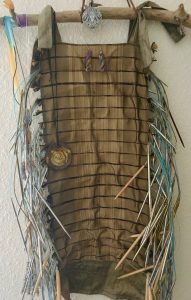 Also unfortunately, the concept of a needle exchange program has never appealed to LYS owners. I really think this is something to explore! If there ever is a needle exchange, you will not find my Signature Needle Arts double pointed stiletto needles.
Also unfortunately, the concept of a needle exchange program has never appealed to LYS owners. I really think this is something to explore! If there ever is a needle exchange, you will not find my Signature Needle Arts double pointed stiletto needles.  The offspring once needing child care are now wonderful adults who gifted me with a range of these double point needles over a couple of years. I’ll not be parting with these fine tools, thank you very much!
The offspring once needing child care are now wonderful adults who gifted me with a range of these double point needles over a couple of years. I’ll not be parting with these fine tools, thank you very much!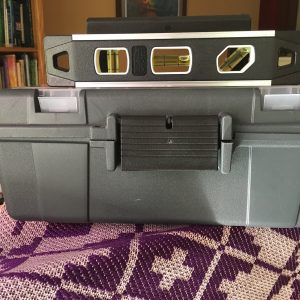 I keep them in my fiber closet. DH is required to sign a contract before he borrows anything. We joke about it, but he also knows I am dead serious about it. And he never goes to get a tool without asking.
I keep them in my fiber closet. DH is required to sign a contract before he borrows anything. We joke about it, but he also knows I am dead serious about it. And he never goes to get a tool without asking.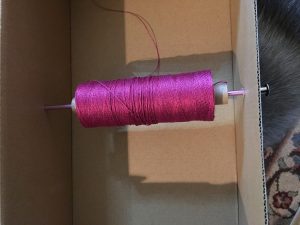 It actually did result in less twist going into the linen as I wound the bobbins.
It actually did result in less twist going into the linen as I wound the bobbins.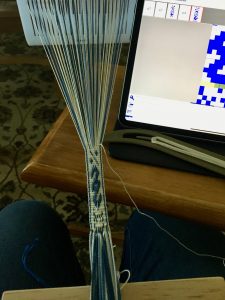 weaver, I’m using the ancient technique of backstrap weaving with my iPad and two apps: PatternGenius to create a chart and KnitCompanion to display that chart and track my progress with the pattern. I couldn’t be happier!
weaver, I’m using the ancient technique of backstrap weaving with my iPad and two apps: PatternGenius to create a chart and KnitCompanion to display that chart and track my progress with the pattern. I couldn’t be happier!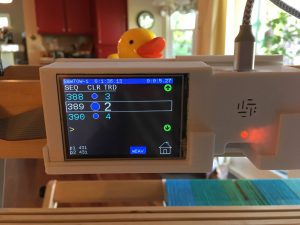 I’m surprised more weavers don’t know about this amazing tool! Strong magnets are attached to the bottom of each treadle. Below the treadles is a sensor array that senses the proximity of the magnet when a treadle is pressed. By way of a ribbon of wires connecting the sensor array to the CPU or brain, this sends a signal. The draft, in the form of a Weaving Information File (wif), is copied from a computer with weaving software to a micro SD card that is inserted into the CPU. So, when an incorrect treadle is pressed, as happens often in my many treadling errors, a tone (I have it set to a loud bleep) is emitted, announcing that I’ve pressed the incorrect treadle. For someone who always moved left when the yoga teacher said right, this is a miracle! It is a gift to be immediately informed you are about to make an error that you otherwise may not see for a few inches. If only I could calculate the amount of time, energy, and materials this has saved I could say that TT has paid for itself! TT performs many other functions, but this describes why I most love this little tool.
I’m surprised more weavers don’t know about this amazing tool! Strong magnets are attached to the bottom of each treadle. Below the treadles is a sensor array that senses the proximity of the magnet when a treadle is pressed. By way of a ribbon of wires connecting the sensor array to the CPU or brain, this sends a signal. The draft, in the form of a Weaving Information File (wif), is copied from a computer with weaving software to a micro SD card that is inserted into the CPU. So, when an incorrect treadle is pressed, as happens often in my many treadling errors, a tone (I have it set to a loud bleep) is emitted, announcing that I’ve pressed the incorrect treadle. For someone who always moved left when the yoga teacher said right, this is a miracle! It is a gift to be immediately informed you are about to make an error that you otherwise may not see for a few inches. If only I could calculate the amount of time, energy, and materials this has saved I could say that TT has paid for itself! TT performs many other functions, but this describes why I most love this little tool.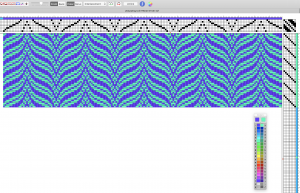 More tools. More to learn, more to do, and more assistance provided. I resisted weaving software for the first few years . . . and then I gave in. I am learning as I go but already, I see advantages over pencil and paper. As much as I loved studying Madelyn Van der Hoogt’s Complete Book of Drafting,
More tools. More to learn, more to do, and more assistance provided. I resisted weaving software for the first few years . . . and then I gave in. I am learning as I go but already, I see advantages over pencil and paper. As much as I loved studying Madelyn Van der Hoogt’s Complete Book of Drafting, 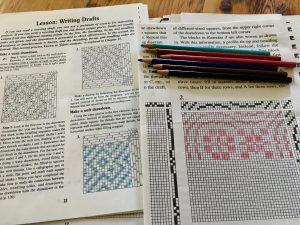 and I truly did enjoy it, I disagree with those who say that weaving software takes away from learning weave structure. With software I’m not coloring in each square on graph paper, but I can learn plenty about a drawdown and I can also learn how to manipulate a draft and see the results fairly instantaneously. I have miles to go in this department and, in the meantime, I’m having an awfully good time of enjoying my tools.
and I truly did enjoy it, I disagree with those who say that weaving software takes away from learning weave structure. With software I’m not coloring in each square on graph paper, but I can learn plenty about a drawdown and I can also learn how to manipulate a draft and see the results fairly instantaneously. I have miles to go in this department and, in the meantime, I’m having an awfully good time of enjoying my tools.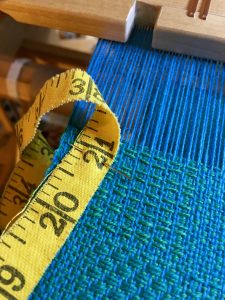 It was definitely my mother’s and I believe it had been her mother’s before. I found it in the round thread and button tin with the darning thread and the sock darning egg that had been my grandmother’s. In fact, that round tin was my grandmother’s, too. Recently I developed a nostalgic appreciation for the tape measure that is so often pinned to the new cloth I am weaving.
It was definitely my mother’s and I believe it had been her mother’s before. I found it in the round thread and button tin with the darning thread and the sock darning egg that had been my grandmother’s. In fact, that round tin was my grandmother’s, too. Recently I developed a nostalgic appreciation for the tape measure that is so often pinned to the new cloth I am weaving.
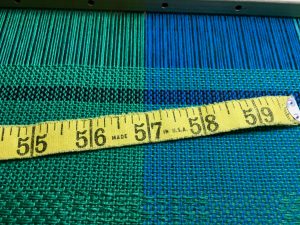 And so, when I look at the old cloth tape measure on my newly woven fabric, I am looking at much more than a simple tape measure. Even if cloth tape measures were more available today (and many of us do wish that), I am looking at so much more. It is something I feel in my heart and it fills me in a lovely way when I weave. I think I can best sum up that heart feeling as gratitude and appreciation. That would be for the past, distant and not so distant, and also very much for the present.
And so, when I look at the old cloth tape measure on my newly woven fabric, I am looking at much more than a simple tape measure. Even if cloth tape measures were more available today (and many of us do wish that), I am looking at so much more. It is something I feel in my heart and it fills me in a lovely way when I weave. I think I can best sum up that heart feeling as gratitude and appreciation. That would be for the past, distant and not so distant, and also very much for the present.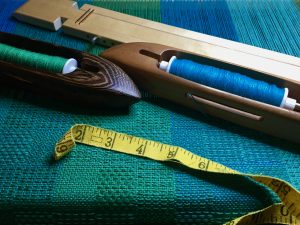
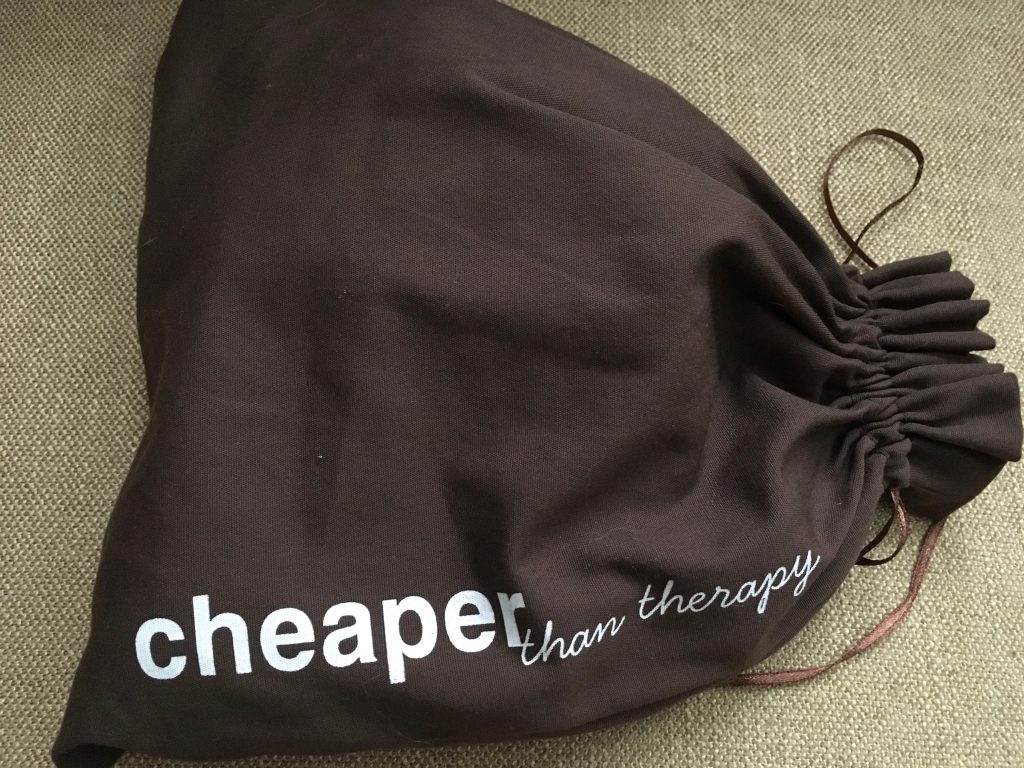
 After a bit of searching and browsing, one can now find all sorts of comments about patterns, designers, and issues that come up in knitting a pattern. Now I have to trust myself to be careful, thorough, and to choose projects wisely. Of course, this initially may seem to contradict the principle of non-striving. If I am striving to complete a project, then I am not really being mindful. Fortunately, I am as much a process knitter as I am a product knitter. If I am enjoying what I am doing, then I can be patient and just enjoy the knitting.
After a bit of searching and browsing, one can now find all sorts of comments about patterns, designers, and issues that come up in knitting a pattern. Now I have to trust myself to be careful, thorough, and to choose projects wisely. Of course, this initially may seem to contradict the principle of non-striving. If I am striving to complete a project, then I am not really being mindful. Fortunately, I am as much a process knitter as I am a product knitter. If I am enjoying what I am doing, then I can be patient and just enjoy the knitting. and kc has a version of this pattern that is already set up. This is a wonderful thing because there were 11 different charts and within some of the charts, there were multiple components. For me, the few extra dollars for this version of the pattern is definitely worth the investment when it is available. It saved me many, many hours of set up and correction time. A wonderful opportunity to notice and practice appreciation.
and kc has a version of this pattern that is already set up. This is a wonderful thing because there were 11 different charts and within some of the charts, there were multiple components. For me, the few extra dollars for this version of the pattern is definitely worth the investment when it is available. It saved me many, many hours of set up and correction time. A wonderful opportunity to notice and practice appreciation.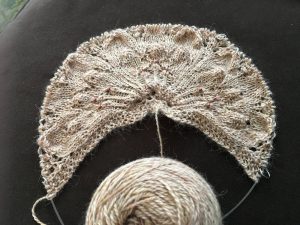 Apparently, I love a good knitting challenge. Sometimes I would get through a chart with few problems but other times I had to backtrack and begin again. I slowly worked my way through about half of the charts and then had to set this project aside while I completed holiday gifts for family and friends. After hibernating for at least three months, I pulled out this project and, amazingly, was able to pick up where I left off. I thank kc for that. The app holds my place exactly.
Apparently, I love a good knitting challenge. Sometimes I would get through a chart with few problems but other times I had to backtrack and begin again. I slowly worked my way through about half of the charts and then had to set this project aside while I completed holiday gifts for family and friends. After hibernating for at least three months, I pulled out this project and, amazingly, was able to pick up where I left off. I thank kc for that. The app holds my place exactly.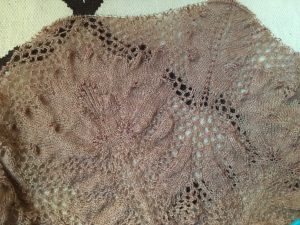 The process of knit, unknit, knit again continued but it was more like a fun puzzle than any sort of problem. I enjoyed figuring out how to make the stitches look like they were supposed to and watching the shawl grow. It was timely that I was taking a brief break from my usual routines because this was not exactly social knitting; focused concentration was required. The brief break also yielded plenty of time at home so I could sit and knit. I was fortunate to have the time and space.
The process of knit, unknit, knit again continued but it was more like a fun puzzle than any sort of problem. I enjoyed figuring out how to make the stitches look like they were supposed to and watching the shawl grow. It was timely that I was taking a brief break from my usual routines because this was not exactly social knitting; focused concentration was required. The brief break also yielded plenty of time at home so I could sit and knit. I was fortunate to have the time and space.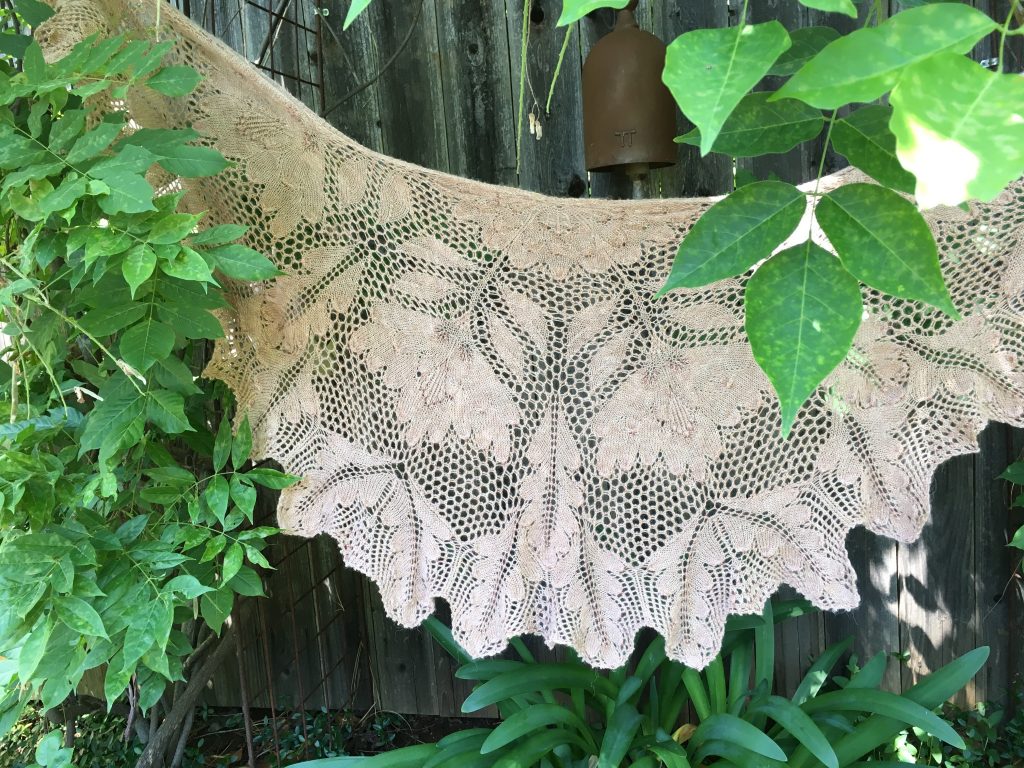
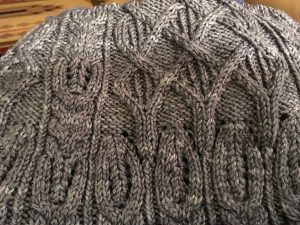
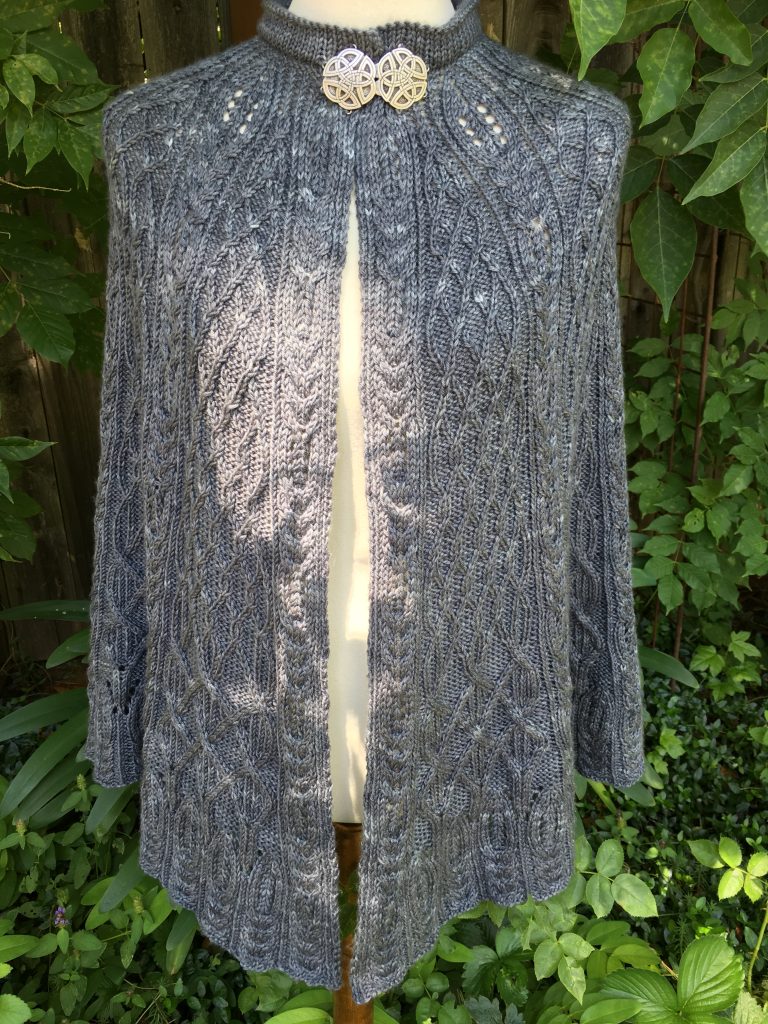
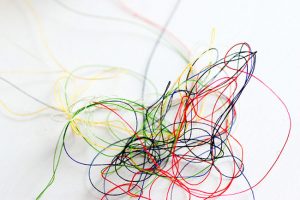
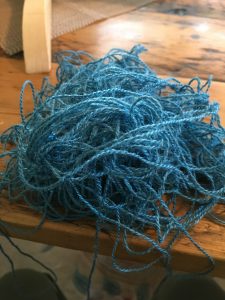
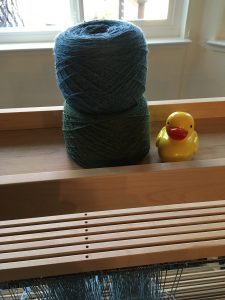
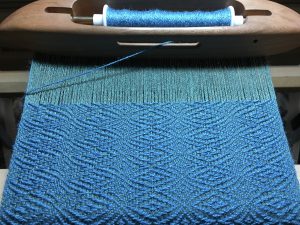
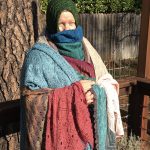
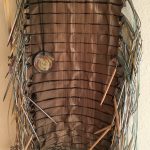 at our LYS but the store thought it would be bad for business.
at our LYS but the store thought it would be bad for business.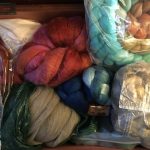 a long time except for the company I was keeping. My partner is the number one co-dependent enabler. He’s so encouraging! If you want to know how bad it gets, here it is: when he thought he was going to be laid off from one of his jobs he told me to get that new spinning wheel right away before the money was gone! And recently, when I was saying no way to spending money on a Woolee Winder, what does he do?? He hung out with other fiber addicts and listened
a long time except for the company I was keeping. My partner is the number one co-dependent enabler. He’s so encouraging! If you want to know how bad it gets, here it is: when he thought he was going to be laid off from one of his jobs he told me to get that new spinning wheel right away before the money was gone! And recently, when I was saying no way to spending money on a Woolee Winder, what does he do?? He hung out with other fiber addicts and listened  to how great the WW is and then bought me one!
to how great the WW is and then bought me one! too. So, yes, I was taking the substance in larger and larger amounts, spending lots of time procuring and using fiber and when I was stuck at work (the day job that pays for all this fiber activity), I did have cravings to play with fiber in one way or another. And daydreams of color and texture! I can’t (and don’t want to) get them out of my head. I did manage to fulfill my family and occupational activities, but sometimes not without a degree of resentment. Socially, well, I do best in groups of other fiber lovers. Otherwise, I am more likely to stay home and knit, spin, weave, or plan more projects.
too. So, yes, I was taking the substance in larger and larger amounts, spending lots of time procuring and using fiber and when I was stuck at work (the day job that pays for all this fiber activity), I did have cravings to play with fiber in one way or another. And daydreams of color and texture! I can’t (and don’t want to) get them out of my head. I did manage to fulfill my family and occupational activities, but sometimes not without a degree of resentment. Socially, well, I do best in groups of other fiber lovers. Otherwise, I am more likely to stay home and knit, spin, weave, or plan more projects.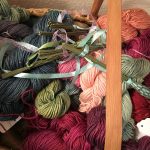 hazardous. Ask my partner how I know this.
hazardous. Ask my partner how I know this.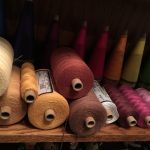
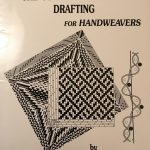 than 12 steps, I will rely on this book for a lifetime, and there is always more to learn from it. I think the group therapy is helping. I no longer search out yarns shops everywhere I go and I can say that I feel satiated for knitting yarns. I stopped acquiring looms and don’t feel any shaft envy at all, even though I only have eight shafts. It is too bad that with three looms having eight shafts each I still can’t weave 24 shaft drafts, but that’s ok. I can accept that.
than 12 steps, I will rely on this book for a lifetime, and there is always more to learn from it. I think the group therapy is helping. I no longer search out yarns shops everywhere I go and I can say that I feel satiated for knitting yarns. I stopped acquiring looms and don’t feel any shaft envy at all, even though I only have eight shafts. It is too bad that with three looms having eight shafts each I still can’t weave 24 shaft drafts, but that’s ok. I can accept that.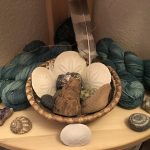 NOTE: After more than 40 years in health care, with the last 20 in mental health, my current and former clients and patients know that I take addiction and associated struggles very seriously. This is written with great respect for the individuals I’ve worked with and learned from. Many have struggled valiantly to deal with all manner of addictions and I graciously bow to them. It is also written with a wink and a nod to those of us with SBLE (Stash Beyond Life Expectancy) and in honor of those trampled in the crazed stampede at Stitches West. The latter would include my dear fiber enabling spouse who has been run over by wheelchairs, tossed out of lunch chairs, and stepped on mercilessly when we attend the marketplace. And he keeps taking me back.
NOTE: After more than 40 years in health care, with the last 20 in mental health, my current and former clients and patients know that I take addiction and associated struggles very seriously. This is written with great respect for the individuals I’ve worked with and learned from. Many have struggled valiantly to deal with all manner of addictions and I graciously bow to them. It is also written with a wink and a nod to those of us with SBLE (Stash Beyond Life Expectancy) and in honor of those trampled in the crazed stampede at Stitches West. The latter would include my dear fiber enabling spouse who has been run over by wheelchairs, tossed out of lunch chairs, and stepped on mercilessly when we attend the marketplace. And he keeps taking me back.